- Switch skin

What is Cultural Tourism and Why is It Important?

Tourism trends come and go. What was once deemed as a necessity in travel and tourism may not be a necessity today. So what is cultural tourism and why is it important? Let’s dive in!
How is Culture Defined?
In order to understand cultural tourism, we must first understand what constitutes culture.
Culture is rooted in many complexities and many inner workings. On the surface level, culture can be defined through symbols, words, gestures, people, rituals and more.
However, the core of culture is in its values.
The way a culture perceives itself or stays preserved is through a set of shared values.

Maybe its an ode to ancestry and tradition or a new breadth of
However, the core of culture is in its values.
Whether it’s an ode to ancestry or creating a new set of values as time evolves, it can be also be held true to the
Whether it’s an ode to ancestry or creating a new set of values as time evolves, cultural tourism is uprooted in holding and preserving cultures through traditions and heritage. [1]
What is Cultural Tourism?
Adopted by the UNWTO General Assembly in 2017, Cultural Tourism is defined as the following: “A type of tourism activity in which the visitor’s essential motivation is to learn, discover, experience and consume tangible and intangible cultural attractions/products in a tourism destination.”
The main aim of cultural tourism is to improve the quality and livelihood of the local people who are committed to preserving cultural heritage and traditions.
This can be through the purchase of locally made goods, initiatives through local food and the learning of recipes,
This can be through the purchase of locally made goods, initiatives to learn how to cook local recipes and supporting local inbound operators who have a good knowledge of the cities they are operating in.
This can be done through the following six aspects:
- Handcrafted Goods and Visual Art
- Social Practices
- Rituals and Festive Events
- Oral Traditions
Imagine visiting one of our destinations: Jordan, Tunisia, Kyrgyzstan, Uzbekistan or Tanzania.
Imagine being able to experience all six of these aspects of cultural tourism all created in one package.
Where Can You Practice Cultural Tourism?
Jordan .
From the North to the South, Jordan’s landscapes and its people are ready to welcome you to each and every experience.
In the North, experience the gastronomy of locally preserved recipes and take your hand at being able to learn how to cook yourself.
Take your hand at handcrafted goods like making baskets out of wheat straws or learn the art of traditional weaving in Madaba.
In the South, practice in rituals in the desert by learning about the infamous Bedouin tea, take some words and practices that are so pertinent to those in the South.
See our packages in Jordan
Underground colonies, history and a rich culture are just waiting for you to learn about.
Visit an artist in Gabes who has taken traditional methods of papermaking and carried it to the present today by honoring raw and organic materials pertinent to the atmosphere of Tunisia’s landscape.
Then have an opportunity to stay in local accommodation in underground colonies which stay cool during the summer and warm in the winter.
You can also experience Amazigh history and the different languages present in Tunisia today that trace back to civilizations many years ago.
See our packages in Tunisia
Uzbekistan
One of Central Asia’s unknown wonders
Uzbekistan is located on the Silk Road and holds centuries of history that trace back to the Islamic Golden Age. It holds a unique architectural background and since it holds history between the Persian Empire and the Soviet Union, you can see a contradiction between both styles, all in one place.
See our packages in Uzbekistan
Kyrgyzstan
Where nature is a non-negotiable
With its beautiful nature, with over 2,000 lakes, Kyrgyzstan is another Central Asian wonder that holds beautiful fairytale naturescapes and semi-nomadic living.
Kyrygz people still adhere to ancient civilizations and honor their ancestors by living in Yurts and sharing natural practices such as horseback riding and traditional old games, like Kok Boro and eagle hunting.
See our packages in Kyrgyzstan
Everything is “pole pole” in Tanzania
From visiting indigeneous tribes to participating in rituals to mother nature, Tanzanian people practice the “pole pole” lifestyle, which means slowly slowly in Swahili.
With an intersection of different cultures and practiced rituals, Tanzania has become such a hub for many people to get together and enjoy the lifestyle and indigenous cultures.
See our packages in Tanzania
Why is Cultural Tourism Important?
Cultural tourism is a travel and tourism trend that is here to stay. With more and more accessibility to the world and the people in it, there is peak interest in being able to immersively travel.
- Peaks an interest to immerse yourself in a particular culture
- Creates meanings, stories and understanding between host and guest
- Share cultural practices and be part of the preservation of cultural heritage
- Gain a full understanding a culture without commodification
What better way to honor a destination than by practicing in allowing something to be immortal.
Also, if you’re interested in learning more about experiential tourism, check out this article.
What are some cultural touristic experiences you are looking forward to trying?
Food in Kyrgyzstan: A List of the Best Kyrgyz Cuisine
Top 5 places for skiing in kyrgyzstan in 2023, best tourist places in sri lanka you need to visit, viet food: get to know vietnamese traditional food, 10 things to do in vietnam: from food to adventure, top 10 tunisia tourist attractions you need to visit, top 10 places to go in the winter, what are the best times to visit jordan, related articles.

Kyrgyzstan Travel Guide 2023 – Unique Activities to Do in Kyrgyzstan

Sri Lanka Weather by Month! Hit or Miss? We have All the Details!

Turning tourism into development: Mitigating risks and leveraging heritage assets

If done right, tourism can actually bolster and preserve cultural heritage, while also helping to develop economies. Image: REUTERS/David Loh
.chakra .wef-1c7l3mo{-webkit-transition:all 0.15s ease-out;transition:all 0.15s ease-out;cursor:pointer;-webkit-text-decoration:none;text-decoration:none;outline:none;color:inherit;}.chakra .wef-1c7l3mo:hover,.chakra .wef-1c7l3mo[data-hover]{-webkit-text-decoration:underline;text-decoration:underline;}.chakra .wef-1c7l3mo:focus,.chakra .wef-1c7l3mo[data-focus]{box-shadow:0 0 0 3px rgba(168,203,251,0.5);} Abeer Al Akel
Maimunah mohd sharif.

.chakra .wef-9dduvl{margin-top:16px;margin-bottom:16px;line-height:1.388;font-size:1.25rem;}@media screen and (min-width:56.5rem){.chakra .wef-9dduvl{font-size:1.125rem;}} Explore and monitor how .chakra .wef-15eoq1r{margin-top:16px;margin-bottom:16px;line-height:1.388;font-size:1.25rem;color:#F7DB5E;}@media screen and (min-width:56.5rem){.chakra .wef-15eoq1r{font-size:1.125rem;}} Travel and Tourism is affecting economies, industries and global issues

.chakra .wef-1nk5u5d{margin-top:16px;margin-bottom:16px;line-height:1.388;color:#2846F8;font-size:1.25rem;}@media screen and (min-width:56.5rem){.chakra .wef-1nk5u5d{font-size:1.125rem;}} Get involved with our crowdsourced digital platform to deliver impact at scale
Stay up to date:, travel and tourism.
- Cultural and historical travel accounts for 40% of all tourism globally.
- 73% of millennials report being interested in cultural and historic places.
- Protecting local culture and heritage requires a robust plan to mitigate negative impacts and policies to ensure prosperity is shared.
Culture and heritage tourism has the potential to create significant employment opportunities and stimulate economic transformation.
However, communities worldwide often grapple with the challenges posed by the magnetic appeal of heritage sites and the promise of economic prosperity. Property values can increase, displacing local residents and permanently altering the character of their neighbourhoods.
But capitalizing on tourism's potential while preserving and enhancing history and culture is possible — and it is already being done in sites around the world. From Malaysia to Saudi Arabia, many are already demonstrating the ability to balance economic development with socially and environmentally sustainable transformations.
Below are five common features that those sustainable approaches embrace.
Have you read?
This is how to leverage community-led sustainable tourism for people and biodiversity, are we finally turning the tide towards sustainable tourism, how the middle east is striving to lead the way in sustainable tourism, translating a vision into an area-based plan.
Urban planning and regeneration require a holistic approach, coordinating interventions across various sectors and providing guidance for investments. A holistic plan would include spatial and policy measures that are supported by regulatory measures, particularly those focusing on affordability and social cohesion. UN-Habitat prioritizes measures which promote mixed-use and social-economically diverse development to mitigate gentrification.
In George Town, Malaysia, the Special Area Plan and its Comprehensive Management Plan function as the key reference for inclusive strategic policies, regulations and guidelines for conservation, economic activities and intangible heritage. The plan, which balances economic development and conservation, included affordability measures such as supporting local owners restoring their houses, enabling adaptive reuse for small businesses, and supporting renters, thus protecting a share of historic buildings from tourism-induced redevelopment.
In Saudi Arabia’s AlUla, home to 40,000 residents and leading cultural assets including Hegra and Jabal Ikma — which was recently added to UNESCO’s Memory of the World International Register — a similar vision is unfolding. The Path to Prosperity masterplan makes provisions for new housing, creates new economic opportunities and establishes new schools, mosques and healthcare facilities for the community with affordability as the guiding principle. An expanded public realm will create district and neighbourhood parks with green spaces, playgrounds, outdoor gyms and bicycle trails. A network of scenic routes, low-impact public transportation and non-vehicular options will facilitate mobility.
A diversified economic base
To avoid over-reliance on a single economic driver, planners must make space for a range of alternative livelihoods. In AlUla, The Royal Commission for AlUla (RCU), which is responsible for the city’s development into a tourism hub, is drawing on its rich local heritage to create a global destination while diversifying the local economy. Investment in native industries such as agriculture has resulted in a revived high-yielding and higher-value farming sector, while new sectors such as the creation of film and logistics industries are creating new jobs and providing increased revenue for residents.

The UN-Habitat Parya Sampada project in the Kathmandu Valley undertook earthquake reconstruction of the heritage settlements in urban areas using a holistic approach of physical reconstruction and economic recovery. It focused on the reconstruction of public heritage infrastructure supported by tourism enterprises run by women and youth.
Nurturing living heritage and local knowledge
Maintaining the character of a place is critical to its future and creates valuable economic assets. Maintenance and preservation animate the built environment, while the recovery of building techniques and crafts of traditional cultural activities creates jobs and maintains skills.
UN-Habitat’s work in Beirut demonstrates this approach, supporting several hundred jobs. Through the Beirut Housing Rehabilitation and Cultural and Creative Industries project, led by UN-Habitat, UNESCO supervises the allocation of small grants to local artisans. The regeneration of the historical train station in Mar Mikhael and adjacent areas will focus on traditional building techniques to reactivate cultural markets and businesses.
In AlUla, the Hammayah training programme is empowering thousands to work as guardians of natural heritage and culture. In Myanmar the nationwide Community-Based Tourism initiative is operated and managed by local vulnerable communities to provide genuine experiences to world travelers.
Share the value created by tourism
Addressing the negative externalities of tourism requires the assessment and compensation of its real impacts, which can be done through sustainable tourism planning and community participation. The pressure on services, increased congestion and the cost of living need to be addressed through specific investments, funded through the taxation of tourism-related revenues redirected towards the local community, especially for the most vulnerable groups.
Examples include the Balearic Island of Mallorca, which has introduced a sustainable tourism tax to support conservation of the island. Meanwhile Kyoto, Japan has implemented several measures to control the number of tourists at popular sites and establish visitor codes of conduct.
Human-centered local development
Empowering the local community to actively engage with its rich culture while minimizing conflict with the natural environment can increase the resilience of residents and reduce the pressures of gentrification. Participation in decision-making is critical to shape visions and plans that achieve these goals.
The UN-Habitat Participatory Strategy in Mexico’s San Nicolas de los Garza showcases how collaboration with the local community throughout the design and implementation process can ensure solutions capture the culture, skills and needs of the neighborhoods. The 2030 City Vision provides a participatory action plan for the integration of culture, heritage and tourism within the currently prevalent urban economic sectors.
In Saudi Arabia such approaches are embedded in Vision 2030, a blueprint for economic diversification. RCU deploys short- and long-term support to the community through scholarship, upskilling and support for SMEs to enhance access to jobs and entrepreneurship in hospitality and tourism.
While development always introduces complex dynamics and transformations, mitigating gentrification in tourist areas is crucial to achieving sustainable local development for the benefit of all and preserving the unique character of these places.
These measures advocate a proactive approach to ensure that economic growth remains inclusive for the entire community, and that tourism is promoted for the benefit of local residents as well as visitors.
Don't miss any update on this topic
Create a free account and access your personalized content collection with our latest publications and analyses.
License and Republishing
World Economic Forum articles may be republished in accordance with the Creative Commons Attribution-NonCommercial-NoDerivatives 4.0 International Public License, and in accordance with our Terms of Use.
The views expressed in this article are those of the author alone and not the World Economic Forum.
The Agenda .chakra .wef-n7bacu{margin-top:16px;margin-bottom:16px;line-height:1.388;font-weight:400;} Weekly
A weekly update of the most important issues driving the global agenda
.chakra .wef-1dtnjt5{display:-webkit-box;display:-webkit-flex;display:-ms-flexbox;display:flex;-webkit-align-items:center;-webkit-box-align:center;-ms-flex-align:center;align-items:center;-webkit-flex-wrap:wrap;-ms-flex-wrap:wrap;flex-wrap:wrap;} More on Industries in Depth .chakra .wef-17xejub{-webkit-flex:1;-ms-flex:1;flex:1;justify-self:stretch;-webkit-align-self:stretch;-ms-flex-item-align:stretch;align-self:stretch;} .chakra .wef-nr1rr4{display:-webkit-inline-box;display:-webkit-inline-flex;display:-ms-inline-flexbox;display:inline-flex;white-space:normal;vertical-align:middle;text-transform:uppercase;font-size:0.75rem;border-radius:0.25rem;font-weight:700;-webkit-align-items:center;-webkit-box-align:center;-ms-flex-align:center;align-items:center;line-height:1.2;-webkit-letter-spacing:1.25px;-moz-letter-spacing:1.25px;-ms-letter-spacing:1.25px;letter-spacing:1.25px;background:none;padding:0px;color:#B3B3B3;-webkit-box-decoration-break:clone;box-decoration-break:clone;-webkit-box-decoration-break:clone;}@media screen and (min-width:37.5rem){.chakra .wef-nr1rr4{font-size:0.875rem;}}@media screen and (min-width:56.5rem){.chakra .wef-nr1rr4{font-size:1rem;}} See all

Industry government collaboration on agritech can empower global agriculture
Abhay Pareek and Drishti Kumar
April 23, 2024

Nearly 15% of the seafood we produce each year is wasted. Here’s what needs to happen
Charlotte Edmond
April 11, 2024

How Paris 2024 aims to become the first-ever gender-equal Olympics
Victoria Masterson
April 5, 2024

5 ways CRISPR gene editing is shaping the future of food and health
Douglas Broom
April 3, 2024

How Japan is attracting digital nomads to shape local economies and innovation
Naoko Tochibayashi and Naoko Kutty
March 28, 2024

The Paris Olympics aims to be the greenest Games in history. Here's how
How small-town cultural hubs are creating a sense of community away from big urban centres
From sydney, n.s. to jasper, alta, a cross-canada look at big things happening in small places.

Social Sharing
Growing up in Birtle, Man., a town of fewer than 1,000 people, David Baker felt lucky to have a high school teacher who taught a course in visual storytelling, ultimately giving him an outlet to explore his creativity.
"I was a video geek in high school," Baker says. "In a town, if you're not an extreme mountain biker, cross-country [or] downhill skier, or outdoors dude, [then] maybe you have an interest in theatre, maybe you want to make films."
Baker draws on this early life experience in his current role as director for the Jasper Community Habitat for the Arts, an organization that exists to provide creative facilities in the alpine Albertan town of 5,000 people. These include a pottery studio, a multi-purpose room used for performance and film screenings, a media lab and a sound recording studio. It's all available for the public to rent by the month, week or day.
Infrastructure for arts and culture, Baker says, "is something that exists for kids here now [who] maybe aren't the super jocks ... it gives kids an alternative avenue of something to do if you aren't one of those [other athletic] things."

Habitat for the Arts, the brainchild of a Baker and his partner Marianne Garrah, is a cultural hub and part of the trend in community spaces and studios for fine art practice, exhibition and performance in buildings where you may not expect to find them. Habitat for the Arts leases space in the recently expanded Jasper Library and Cultural Centre, which also houses the Jasper Artists Guild and municipal council chambers. It's a prime example of how a new or regenerated building can transform into a cultural hub, offering a fresh type of space to arts and culture organizations that may not otherwise have access to it.
Acknowledging there is no set description for what a cultural hub or district is, the Standing Committee on Canadian Heritage published a report in the fall of 2018 defining hubs as "conceived and designed to encourage collaboration, innovation and productivity… [and include] shared space, technology and other resources; opportunities to develop collaboration and to exchange ideas; and public access and programming [across disciplines]."
The report includes a number of recommendations by the committee for how the government can direct support to cultural organizations in rural areas and small towns that often rely on donations, various levels of government funding and property tax exemptions.
However, cultural hubs are not all government supported; the emergence of these types of spaces in smaller urban centres is also the result of a need expressed by artists and creative people for spaces to practice and engage among themselves and with their local community.
In Peterborough, Ont., in a former commerce building at Hunter St. and Water St., a number of neighbouring downtown artists' studios open to the public on the first Friday of each month for a public art crawl.

Many of these studio spaces have been occupied by artists for decades, withstanding pressures to develop the building.
In Wakefield, Que., the owners of Café Molos were motivated to transform their circa-1880 structure into a multi-purpose cultural hub after hearing about local creatives commuting to Ottawa just to access work space with Wi-Fi. The building, which faces the Gatineau River, now includes a shared writers room (called The Beehive) that members of the public can rent; an open studio used for yoga, pilates, meetings and photography; a tattoo shop; and a second-hand store.
"Originally we thought we'd rent it to a small company that had four or five employees, but it was at the height when these types of spaces were becoming really popular," co-owner Diane Morey explains. "One of our partners who lives in the city suggested it and it just seemed like a good go between instead of having a permanent tenant."
Keeping true to the "countryish" feel of the place, the owners of The Beehive have installed a little loft bed on the way up to the writing room for weary writers that may have travelled far to Wakefield to use the space. The purpose is not just decorative, Morey says it's there "in case you want to nap in your day."
At the same time, cultural spaces supported by government funding are not necessarily used as cultural hubs. In Orillia, Ont., cultural hubs were the subject of a recent public opinion town hall regarding the local Orillia Opera House. General manager Wendy Fairbairn says they are maxed out of availability for rental for the arts and the building itself doesn't accommodate other uses.
"I can run a visual arts class here very easily," Fairbarn says, "but when you put welding and sculpting and that kind of messy art creation, I can't really do it at our space just for safety reasons."

Apart from the common attribute of shared artist and community space that make cultural hubs what they are, each facility also tends to have its own mini-culture that articulates something about the underlying values. For Alison Uhma, an illustrator in Sydney, N.S., who shares her section of studio space in a former girls school with her husband, it's things such as multi-gendered washrooms that make her appreciate how the space has been conceptualized.
"When it comes to gender and bathrooms and stuff like that, I know it seems like a small thing, but it kind of [represents] inclusivity," says Uhma, a mother of two teenagers who has used the space to build and develop her practice outside of her home. "It's a reimagining of space that, as an artist, I'm so thankful for."
New Dawn Enterprises, a social services organization in Cape Breton, N.S., actually expanded what they do in order to serve artists after purchasing and repurposing a former convent and the high school where Uhma works in 2013.
"When the organization started looking at the properties, we started to take community members through … and asked members of the community, hundreds of them, 'What should we do with these buildings?'," says Erika Shea, Vice President of Development for New Dawn Enterprises. "The response that came back, again, was that there was not affordable space for artists to work in the community."
Creating permanent infrastructure for artists can also be a significant step toward preserving local language and culture, particularly in remote parts of Canada. In Iqaluit, members of a performing arts organization called Qaggiavuut!, which has toured internationally, lament having no dedicated space close to home to rehearse and present their work.
"Most of the workshops and shows that we do, we can have really talented and professional people, we could have excellent light and tech and all of those things, but we're still in a high school gym," says Terrie Kusugak, a musician from Rankin Inlet, Nunavut. "So no matter how elevated you make your show or your performance … you're using a space that's not meant for what you're trying to use it for."
Without creative facilities, Qaggiavuut! repurposes what spaces it can across the North, including soup kitchens, church halls and francophone centres, despite the effect on morale. "We make shows anyways, [but] it takes away from the professional feeling … it does a lot to your mind, to feel like a professional. To go into a real space meant for what you're using it for," Kusugak says.
The challenges faced by artists who work without a dedicated space is a familiar story and not unique to Canada's North.
Michael Flisak, a visual artist, was part of a movement that founded the Jasper Artists Guild 20 years ago, and he witnessed how an organized space for artists helps them advance in their practice, especially in a smaller town.
"If you're an artist in a beautiful town you want to live in, you can't really make a go of it on your own," Flisak says. "You need, obviously, to coalesce with other people in order to make something happen and be noticed. I think that was our framework right from the beginning."
Flisak maintains that cultural hubs help artists outside big cities realize their dream to take their practice to a new level. The physical spaces may give artists a boost so they can overcome the challenges associated with their location being so far from the big urban centres, which are more ripe with opportunities to develop, professionalize and monetize their work.

Before landing in its current location, the Jasper Library and Cultural Centre art guild originally made a go of it without having its own space, organizing "floating" galleries (pop-up exhibits in non-gallery spaces) in town before occupying space in the town's old firehall.
At the time, Flisak recalls the municipality wanted to work with the artists after seeing them generate substantial revenue from selling their work one summer. Despite this, he sees the value of their work going beyond financial gain.
"The perception of what art is and what it can be in a community — rather than just a tourist shop, for example — it can actually be something meaningful, in terms of cultural expression," Flisak says.
"To me, a cultural hub would be somewhere where there's an opportunity for people to share ideas and share concerns about the arts in the community in all facets, whether it's dance or theatre or poetry or visual arts. It's a place where people can go to promote a project to get things started. There's a sense of empowerment somewhere with the hub, where people can meet and join forces in order to ensure the cultural heritage of our town."
ABOUT THE AUTHOR

Arianne Robinson is a journalist, producer, and writer who lives in Toronto. You can follow her on Twitter @ariannerobinson
Related Stories
- Urban exodus: Why these artist couples left the city for Prince Edward County
- Small city, big art: How Guelph, Ontario is leading the way for local arts communities
- How two years living in a campervan inspired this couple's real-life utopia
- Created with Pixso. MY ACCOUNT
I’m Sorry. I didn’t get that.
Hong kong tourism board, hong kong steps up as a global art and cultural hub.
- Written by Buro

Here’s what art and culture lovers can expect when they visit Hong Kong

Many often think of Hong Kong as a shopper’s paradise or food haven with its famous shopping malls and award-winning bars and restaurants. While both are true, the bustling city also has plenty to offer arts and culture lovers. Landmarks such as the Hong Kong Museum of Art and Hong Kong Cultural Centre have long attracted tourists for a deep dive into the city’s rich history and cultural heritage. However, the recent development of the West Kowloon Cultural District offers new experiences that marry art, innovation, and heritage to elevate the city’s art and culture scene to even greater heights. Here’s what to expect from the vibrant West Kowloon when travel to Hong Kong resumes again.
World-class art infrastructure
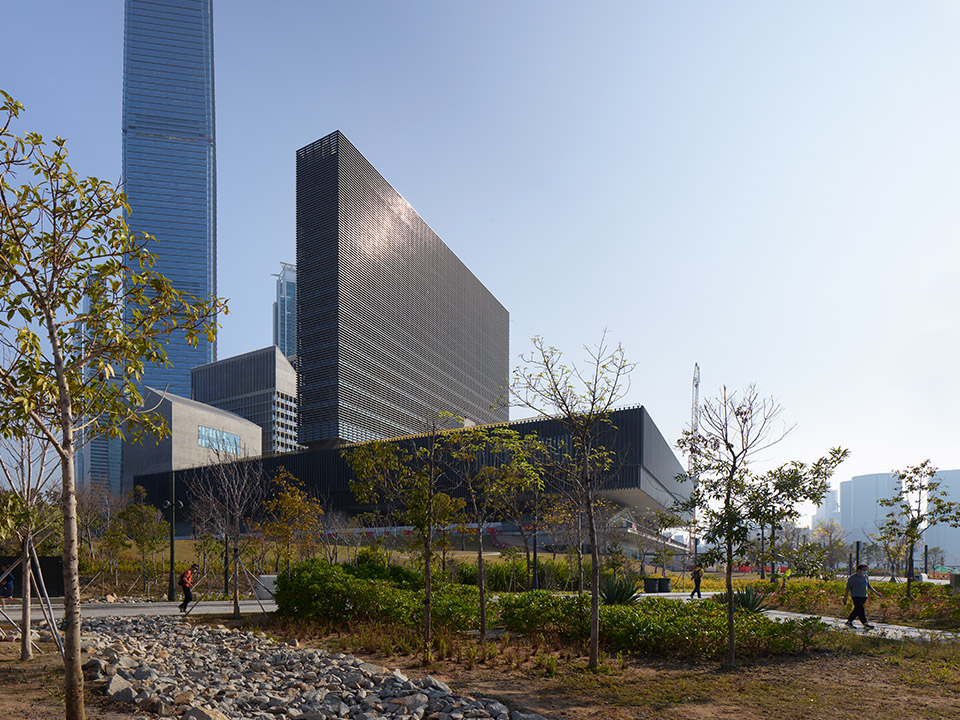
Over the past few years, Hong Kong has launched a number of large-scale developments as part of its mission to spotlight West Kowloon as an international art and cultural district. Among them is the iconic M+ , Asia’s first global museum of contemporary visual culture. Spanning 17,000 square metres, the massive museum features an exhibition space, three cinemas, a lecture theatre, learning facilities, performance spaces, cafes, a retail shop, and a public roof terrace. It began welcoming visitors in November 2021 with a plethora of exhibitions, workshops and cinema screenings, as well as shopping and dining experiences.
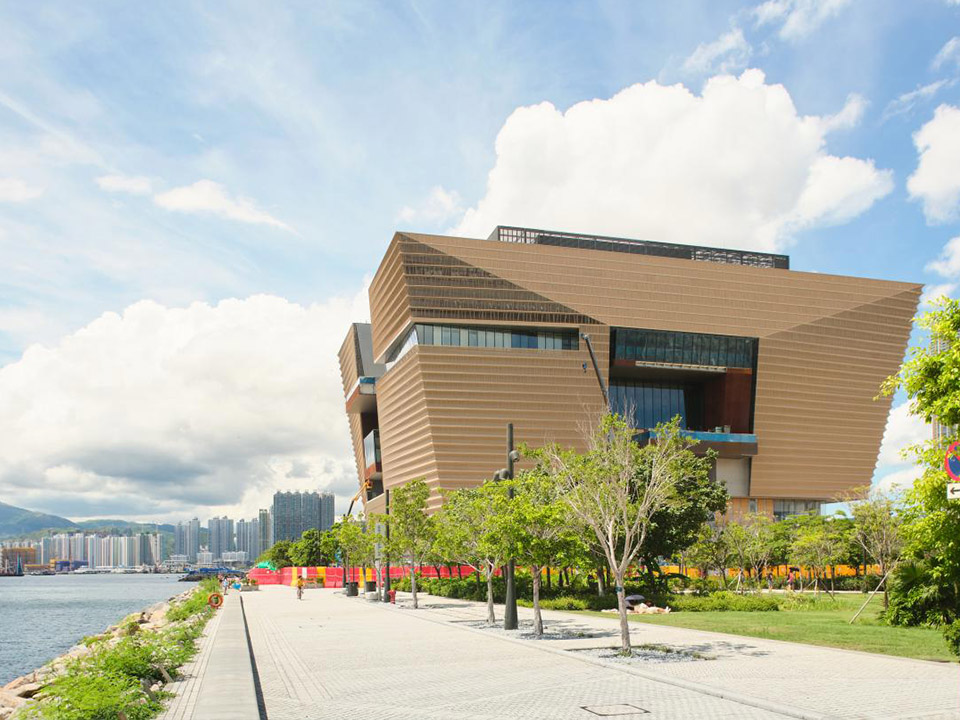
View this post on Instagram A post shared by West Kowloon Cultural District 西九文化區 (@westkowloon)
Then there’s the Hong Kong Palace Museum which is slated to be unveiled to the public soon. The new museum boasts more than 900 priceless artefacts from Beijing’s Palace Museum—many of which will be on display in Hong Kong for the first time, while others have never been showcased to the world before. These treasures include Chinese paintings and calligraphy, as well as sculptures and decorative art objects.
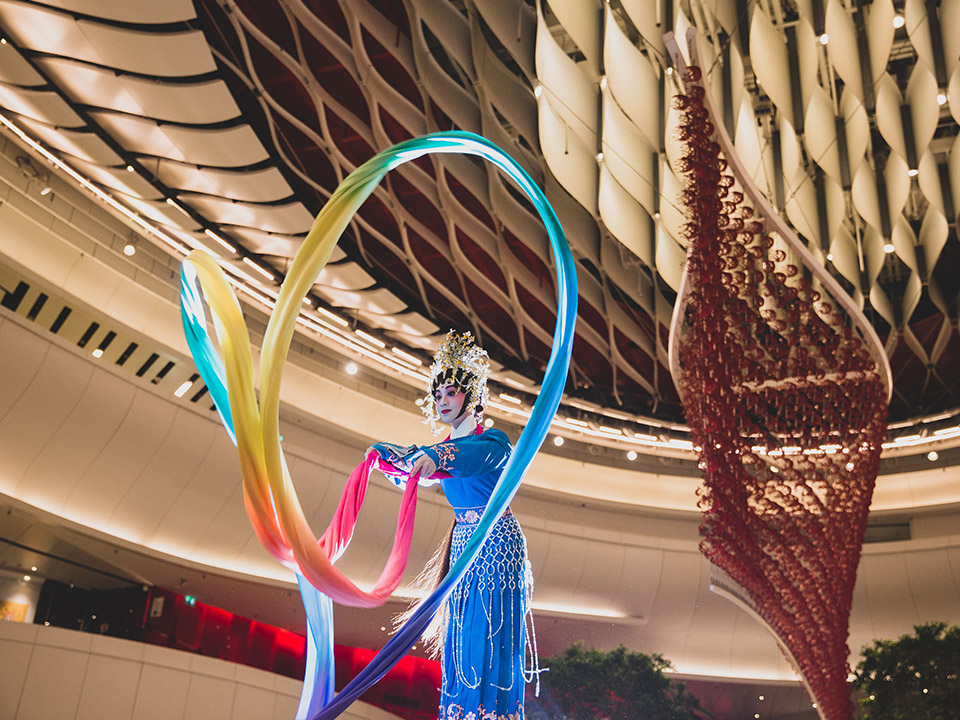
Xiqu Centre is another must-visit for art aficionados, especially those fascinated by the ancient art of Chinese opera. The performing arts theatre’s award-winning design references Chinese lanterns, with unique exterior and interior elements that serve as stunning Instagram backdrops for architecture buffs. Opened in 2019, the cultural sanctuary houses a 1,000-seat Grand Theatre flanked by two outdoor sky gardens, a multi-level atrium, a naturally-ventilated plaza, a Tea House Theatre for more intimate performances, and various spaces for education, administration, and retail.
Thriving local art scene
Aside from modern landmarks, Hong Kong is home to artisans and craftsmen who have been keeping the local art scene alive even through the years of colonisation, modernisation, and now globalisation. As such, the city plays a vital role in promoting the vibrant local heritage and providing public access to gain insight into these time-honoured cultural traditions.
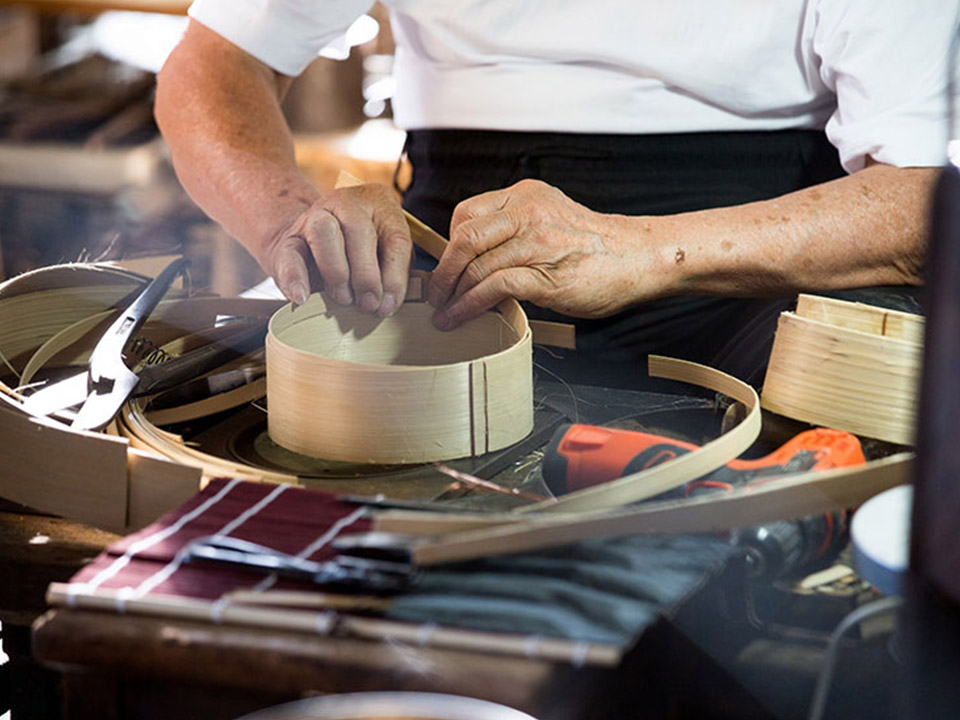
For instance, you’ll find bamboo steamers—commonly used in Chinese cuisine—in different shapes and sizes at the Ming Sang Steel Bamboo Receptacle in Yau Ma Tei. The owner of the store, Master Lui Ming has been handcrafting these baskets for over 50 years since the age of 32. Today, he is more than 90 years old and still holds steadfast to his craft, creating new and custom bamboo inventions while perfecting the steel rim steamers he pioneered.
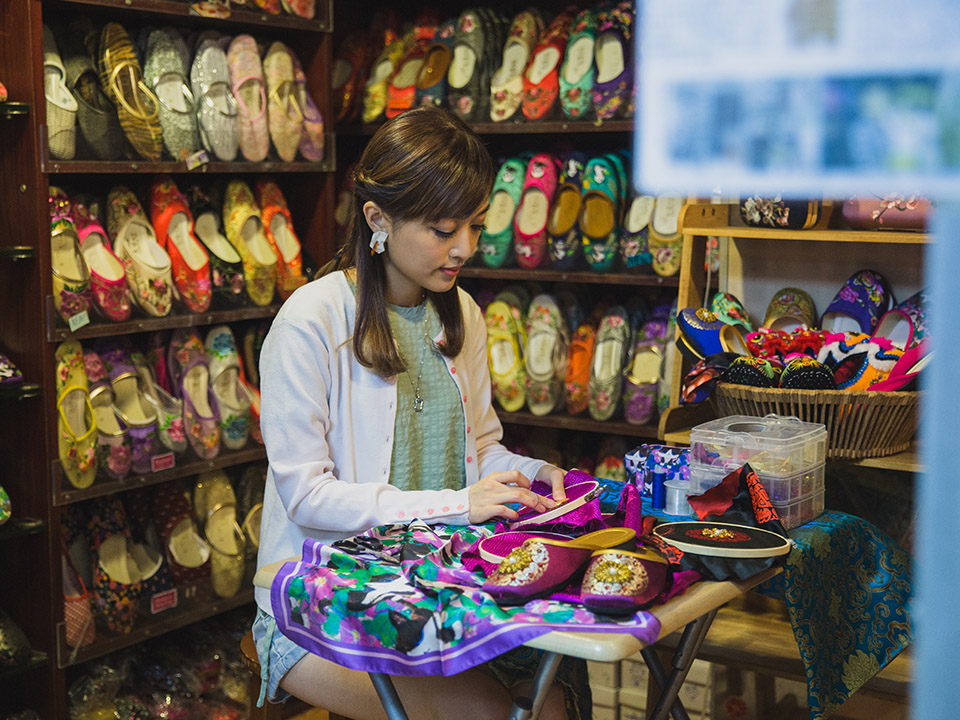
Inside the Bowring Commercial Centre in Jordan, Miru Wong runs Sindart, a small store selling traditional embroidered Chinese footwear. The third-generation owner picked up the art of embroidery from her grandmother in her primary school days, carrying out her matriarch’s legacy of silk-brocade slippers that are popular among ladies of the middle and upper class. Wong has also incorporated modern elements such as animal motifs and non-traditional floral designs to appeal to a new generation of customers and international travellers.

Right next door to Sindart is Shanghai Baoxing Qipao, offering made-to-measure traditional qipaos and Chinese cotton jackets. Master Yan mans the store with 65 years of experience, having made beautiful qipaos for Miss Hong Kong contestants and celebrities the likes of Anita Muim, Maggie Cheung, and Michelle Yeoh. He also hosts classes with fashion and design students to preserve this precious garment of Chinese history.
Global art events and festivals
View this post on Instagram A post shared by Art Basel (@artbasel)
Beyond local heritage, Hong Kong is a hotspot for major international art and culture events such as the Art Basel , French May, International Arts Carnival, Hong Kong International Jazz Festival, and the International Arts & Collectibles Expo. These annual events provide art enthusiasts with a platform not just to immerse in art, but also to connect with like-minded individuals and talents from around the globe.
One of the highlights at the Art Basel fair this year is The Shape of Light, a moving image work by pioneering Hong Kong artist Ellen Pau, displayed on the M+ Facade.
View this post on Instagram A post shared by 法國五月藝術節 French May Arts Fest. (@frenchmayartsfest)
On the other hand, Le French May —an art festival that promotes French art and culture in Hong Kong—will run from May to June this year. There will be a plethora of programmes taking place in the Cultural District throughout the festival, encompassing performances, exhibitions, educational events, and the world of cinema.
We can go on about the cultural sights and artistic wonders in West Kowloon, but nothing beats experiencing them all for yourself.
Discover more about Arts in Hong Kong here .
- Attractions
- Art happenings
- Chinese Opera
See more like this
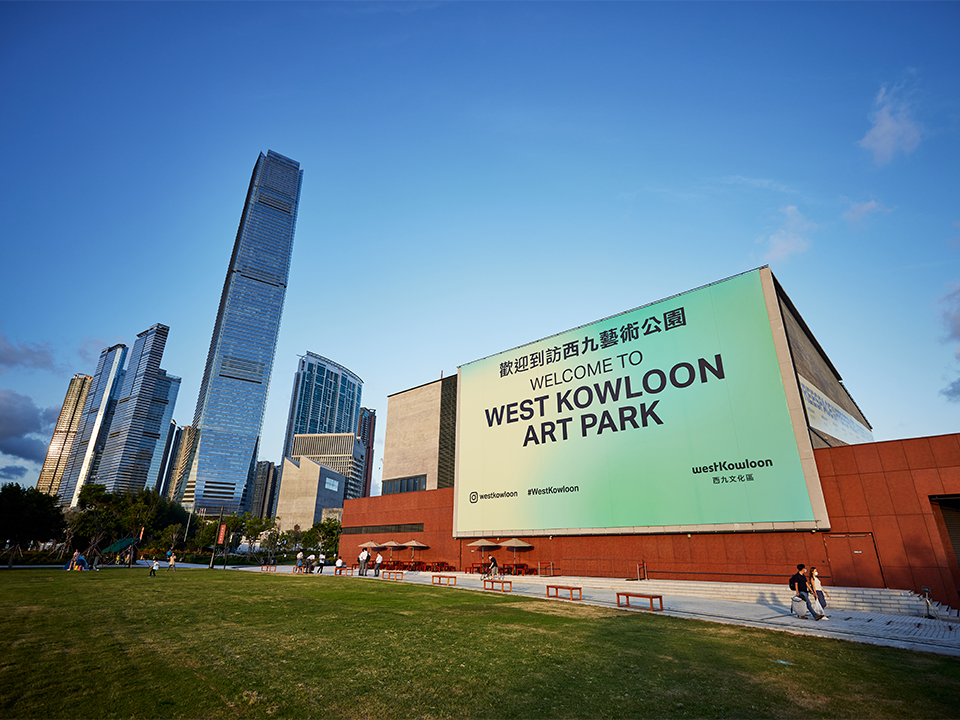
The art lover’s guide to Hong Kong, where Eastern traditions meet Western conventions
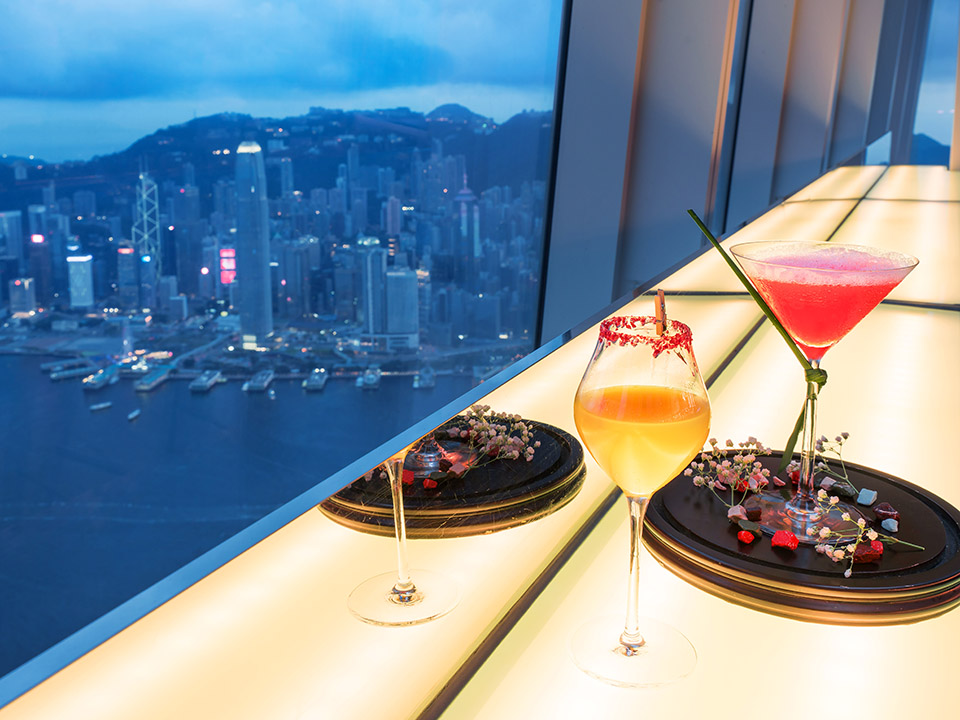
Hong Kong Has More Hidden Gems Waiting To Be Discovered, And These Influencers Can Vouch For It.
We use cookies to ensure that we give you the best experience on our website, to understand your interests and provide personalized content to you as further set out in our Cookie Policy here . If you accept the use of cookies on our website, please indicate your acceptance by clicking the "I accept" button. You may manage your cookies settings at any time.
Manage my cookies
Cookie Setting

DOT LAUNCHES MANILA CULTURAL HUB TOURS
- Post author By Regine Resureccion
- Post date July 10, 2023
- No Comments on DOT LAUNCHES MANILA CULTURAL HUB TOURS
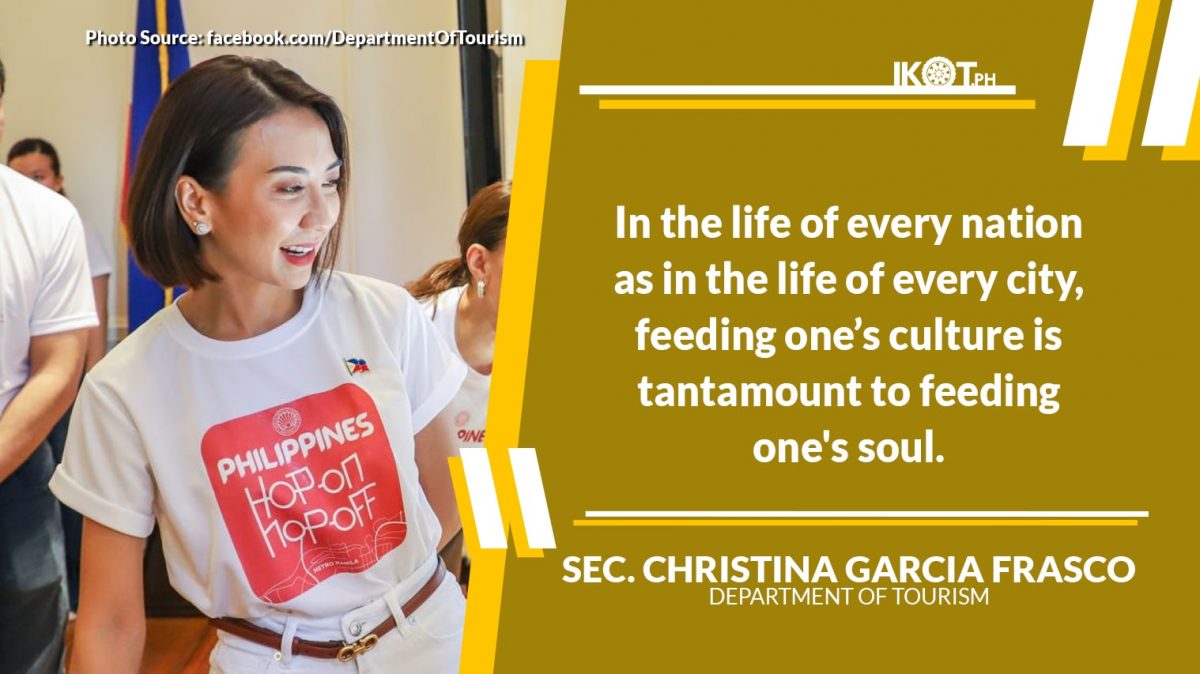
Tourism Secretary Christina Garcia Frasco led the launch of the Department of Tourism’s (DOT) Philippines Hop-On-Hop-Off (HOHO) at the country’s capital introducing Manila’s “Cultural Hub” tours.
Joining Frasco were officials of the City Government of Manila led by Manila Mayor Honey Lacuna, and tourism stakeholders.
Dubbed as “the country’s first ever hop-on, hop-off bus tour program,” the Manila Cultural Hub links it with Makati’s “Financial Hub,” which Frasco and tourism industry stakeholders launched last 28 May.
“Our President envisions a tourism industry that is able to compete shoulder to shoulder with our neighbors in Asia as well as the rest of the world. And that is why we introduced tourism to the digital age through this Hop On, Hop Off Bus Tours that allows tourists to book through an app, curate their experiences, and travel at their own convenience,” the tourism chief said.
The tourism head expounded on global changing travel trends and the growing desire of travelers for more immersive experiences.
“Travel trends continue to change, and it is incumbent upon us in the national government and local government to adapt.”
“Travel trends continue to change, and it is incumbent upon us in the national government and local government to adapt. It is time for us to evolve and to truly understand the necessity of ensuring that we are not left behind in the post-pandemic world,” she said of the project’s rosy prospects for visitors to explore and experience the different tourism hubs in the urban jungle.
Frasco also underscored that this initiative from the DOT, together with the City Government of Manila, will boost opportunities to introduce foreign tourists to the capital city of the country.
“With the launch of the Philippine Hop On, Hop Off Bus Tours here in the City of Manila, we aim to give opportunities to reintroduce Manila to our fellow Filipinos and to introduce foreign tourists to this beautiful gem of a city, to expose them to your heritage, your culture, the arts and most importantly, the story of the City of Manila,” she said, citing as well how the bus tours, with its hassle-free, seamless, contactless and convenient option, will play a pivotal role in improving the tourism experience in Manila.
“In the life of every nation as in the life of every city, feeding one’s culture is tantamount to feeding one’s soul. And that is why through the PH HOHO Bus Tours, we aim to partner with the City of Manila in your vision to make sure that this continues to be the Cultural Hub of Metro Manila,” Frasco added.
Lacuna, on the other hand, cited the importance of developing the city’s cultural aspect of tourism.
“Facing the challenges of urban mobility, this will truly maximize any visit in exploring our attractions and experience a Manila that you’ll keep coming back to.”
“Facing the challenges of urban mobility, this will truly maximize any visit in exploring our attractions and experience a Manila that you’ll keep coming back to. The Department of Tourism and the City of Manila curated the attractions to be visited and made sure that this initial run will truly reflect the character of our city. As the HoHo progresses, we will make sure to incorporate other parts of our eight tourism hubs which is the core of our tourism development plan,” the lady mayor added.
According to DOT’s National Capital Region (DOT-NCR) Director Sharlene Batin, the Cultural Hub will have nine stops which will roundup Robinsons Manila – Raja Sulayman – Rizal Park Luneta – National Museum – Malacañang Heritage Tours-City Hall – Escolta – Binondo – Intramuros.
With the launch of the Cultural Hub, tourists can now conveniently and leisurely stroll Manila’s historic and vibrant culturescape one bus stop at a time.
They can choose from curated and do-it-yourself itineraries with the option for private and guided tours.
Introductory price for the HOHO Manila Cultural Hub tour starts at P1,000 per person.
The Philippines HOHO features a dedicated website with all essential information, a reloadable EMV-capable card, and to complete the tourist experience, a mobile app for booking tours, making cashless payments, GPS networked-bus arrival monitoring and video guides, as well as information on hotels, food, and tourism merchants.

- Tags Department of Tourism , Hop-On-Hop-Off Tours , manila , Secretary Frasco
Leave a Reply Cancel reply
Your email address will not be published. Required fields are marked *

B.Arch Thesis: Eco-Tourist Hub of KHONOMA Village, By Shanjo A. Kithan, ITM University-Gwalior
- August 17, 2019
Follow ArchitectureLive! Channel on WhatsApp
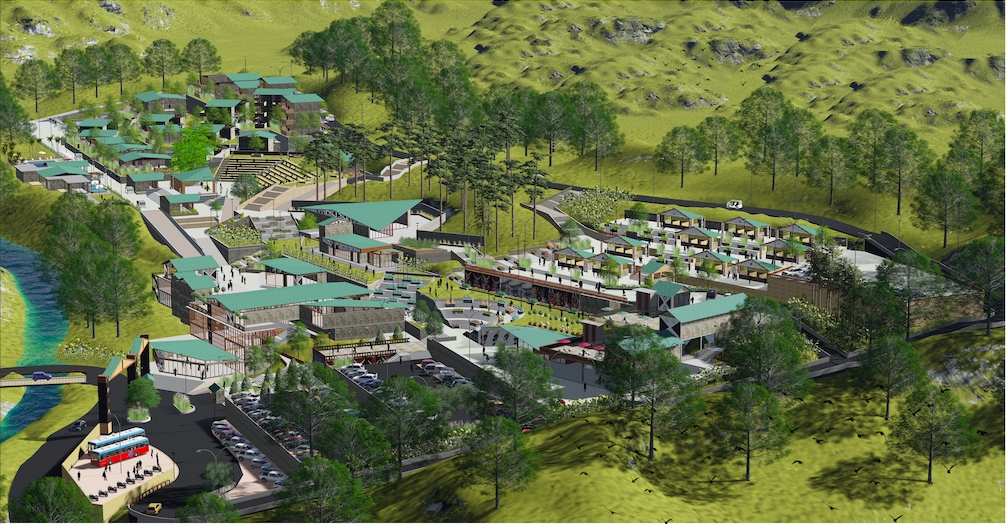
Eco-tourism is one such activities which provide a solution by creating awareness and concern for the environment among both the tourist and local people of the region.
Also, the local skills could be developed and explored. The traditional and indigenous knowledge, along with scientific development can be explored.
Eco tourism Hub by itself, which talks about the tourism aspects of the context, creating a cultural Hub point which gives a platform for the villagers as well as the essence of the vernacular for the tourist.
The brief of the concept is to design an eco-tourism hub for the region of KHONOMA (Asia’s first green village) and the proximity near the region. Keeping in mind the local traditions, culture, art and Architecture .The design brief put an emphasis on the articulation of said traditions and their interpretation in modern times without losing the essence of the vernacularity.
KHONOMA is an Angami Naga village located about 20 km west from the state Capital, Kohima, Nagaland. The terrain of the village is hilly, ranging from gentle slopes to steep and rugged hillsides. The hills are covered with lush forestland, rich in various species of flora and fauna.
HORNBILL International Festival which is being celebrated for 10 days every year near this proximity which also creates a benchmark of this village.
This thesis talks about vernacular settlement which can achieve sustainability through planning, orientation, materials and architectural practices evolved from long time due to the socioeconomic, climatic and environmental factors of the Region
AIMS AND OBJECTIVES
•To create an opportunity to the local people as well as for the tourist to get the essence of the context, keeping alive the essence of the context. •To design a better vision for tomorrow by keeping the Essence of the local regional context.
•Reprioritize the usage of the site based on the needs of the site demands. •To make the space a centre of public interaction and activities that reflects the people of the region.
•To engage the people by creating a hub in the village where they can learn, educate and understand each other. •To make use of the site’s assets in terms of creating a landmark for the urban fabric of Kohima people as well.
DESIGN BRIEF + PROGRAMME
The village of Khonoma (Asia’s first green village). As being said that the context of the site is a tourist spot and as the tourism is increasing each year people from around the world are travelling to see this beautiful village and the plus point is that there are many Tourism near the village which clearly states that there is a need for Eco-Tourism Hub in this arena.
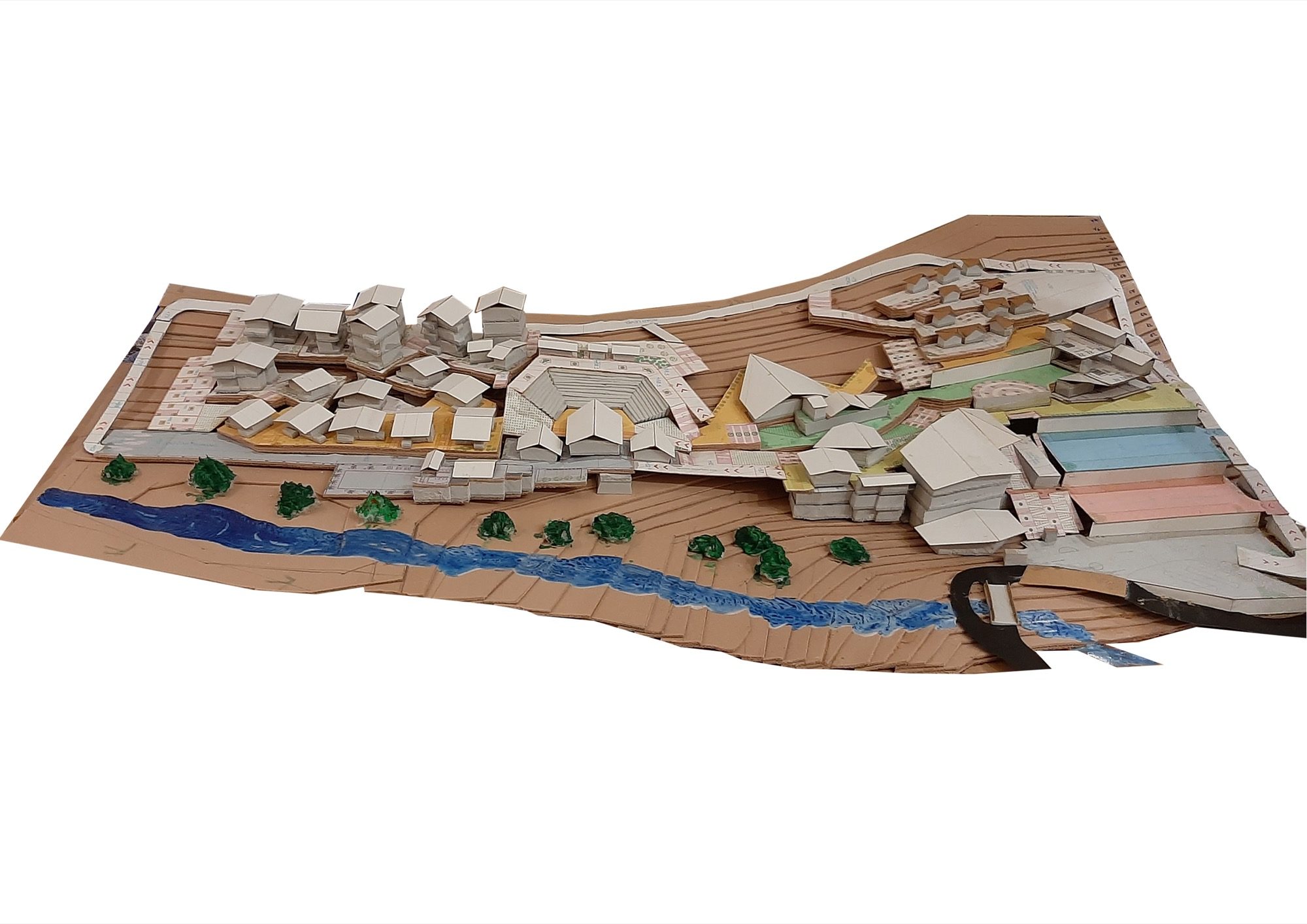
Eco tourism is one such activities which will create an activities for the region. The local People gets the opportunity to expose their skills their economy to the tourist, which can create an important part of the hub.
The site will be developed with different types of components: 1. Weekly markets for the villagers, craft shops, Exhibition shops: where the villagers can get exposed and increase their growth of the economy. The market will run only on the basis of once in a week where they can sell all their organic crops or vegetables.
2. Museum: To reflect their culture, tradition and religion also to promote their legacy.
3. Workshop activities: where the tourist can educate the villagers and spread awareness and learn from one another.
The villagers can showcase their skills and even export their talents.
4. Accommodation unit for the tourist people: A home stay feeling accommodation unit for the tourist.
5.Library: It will provide a better exposure for the young generation of the surrounding villages.
6. O.A.T: Cultural program and festival season of recreational space.
DESIGN CONCEPT /APPROACH
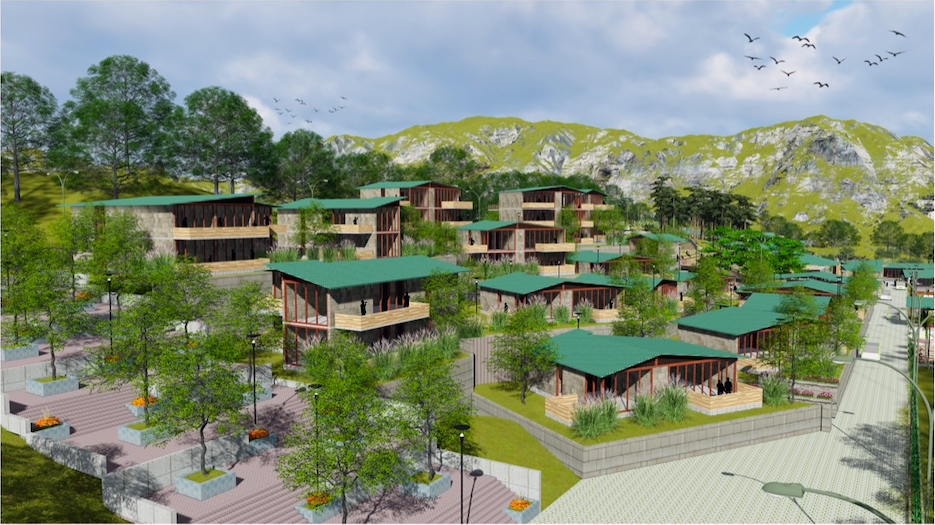
The main challenge of design was a Site, which is having area of 92268sq.m. and facing NORTH To EAST direction also having contour difference of 40 meter. Main approach is to analyse with the existing contour and play with the levels. The existing site having contour along the river stream and the bridge is the only approach to the site.
Considering all the challenges, the design was to make ‘imperfect’ spaces with organic dynamism like villages.
With the start of the design development every space and area of the site were divided from part to whole. where every part of the space were defined according the use of the function like the open weekly market ,food stall ,craft shop ,museum ,library, OAT, Workshop area and the Accommodation unit which were segregated from each other but it was connected according to the function and use of the space.
Every function of the spaces were connected as per the user’s inferences. The general restaurant was at the core of the main area, the open market area was segregated totally from those main activities like the library, museum, workshop area, OAT and the Museum.
Although they are two different things we sense their interrelationship and emotional bond. Something very organic yet dynamic to be expressed by the site. The environment to be very vernacular with use of the roof of MORUNG style keeping alive the essence of the Region.
The Morung (or the traditional community house) at Khonoma Village. Acting as an educational institution, A Morung is where youngsters would gain their first few lessons of cultural & traditional knowledge through folk music, dance, folk tales and oral traditions. During the time of war, they were also used as used as a guard-house.
Design used the symbolism of that area through Morung.
VERNACULAR OF THE REGION
1.Use of the materials 2.local Materials, local skills, local technique 3.Keeping alive the essence of the village. 4. Implementing new technique design in terms of architectural thoughts, spaces, functions and purpose of the area. 5. New modern technologies design without losing the essence of the region
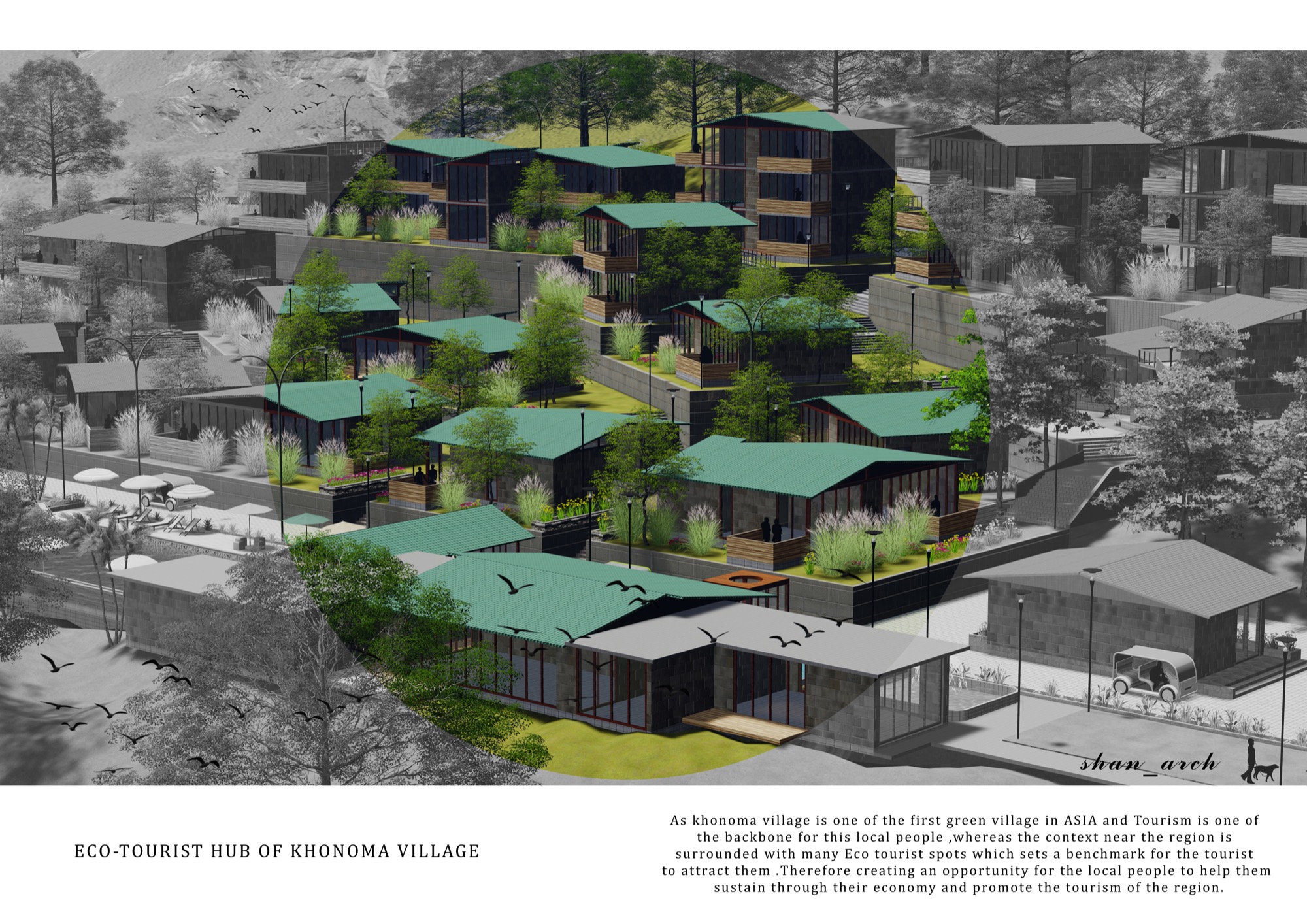
shanjo A Kithan
- B.Arch Thesis
13 Responses
I want detail sheet on mail for reffrence
Please contact if you were able to get through.I want to refer the report for my thesis as well.
Did you got the details?
I want study report of your thesis for reference
I want to know how to contact you for more details
Hey I loved your Concept, if possible could you share your Area statement or a list of requirements? it would be of great help to my thesis tooo!!!
can i please get your thesis report for reference.
Can I get your thesis report for reference please.
can I also have your details for my thesis.thank you
Can I get your thesis report for reference please
Please share the details that would be great help for my thesis
can you please describe which all case studies you reffered for the same
I have some doubts regarding concept sheet can you please clear my doubts
Share your comments Cancel reply
This site uses Akismet to reduce spam. Learn how your comment data is processed .

Beyond Design: Challenges and Opportunities in the Indian Architectural Profession
Vinod Gupta, of Opus Indigo Studio reflects on the evolution and challenges of the Indian architectural profession, emphasizing the need for architects to reclaim responsibilities beyond design to revitalize the industry’s trajectory.

Carving Architecture into Graphite | Pencil Lead Carving
Embarking on a journey where ordinary pencils become extraordinary artworks, Vipul Gupta explores the transformative art of Pencil Lead Carving, rediscovering beauty in detail.

An Architect Eats Samosa
ArchitectureLive! continues with Alimentative Architecture – The fifth in a series of articles by Architect-Poet-Calligrapher H Masud Taj interfacing architecture with food via geometry.

The Stoic Wall Residence, Kerala, by LIJO.RENY.architects
Immersed within the captivating embrace of a hot and humid tropical climate, ‘The Stoic Wall Residence’ harmoniously combines indoor and outdoor living. Situated in Kadirur, Kerala, amidst its scorching heat, incessant monsoon rains, and lush vegetation, this home exemplifies the art of harmonizing with nature.

BEHIND the SCENES, Kerala, by LIJO.RENY.architects
The pavilion, named ‘BEHIND the SCENES’, for the celebrated ITFOK (International Theatre Festival of Kerala), was primarily designed to showcase the illustrious retrospective work by the famed scenic background artist ‘Artist Sujathan’.

Apdu Gaam nu Ghar, Vadodara, by Doro
Doro (a young architectural firm from India) renovate a 150-year-old house in Vemar, Vadodara, Gujarat, to transform it into a warm retreat for its owners, who are based overseas.

Integrated Production Facility for Organic India, Lucknow, by Studio Lotus
The Integrated Production Facility for Organic India in Lucknow is a LEED Platinum-rated development designed for production, processing, and administrative functions for the holistic wellness brand. The design scheme incorporates local influences to create a sustainable environment, featuring a sprawling campus.
Ideas in your inbox
Alive perspectives.
Stay inspired. Curious.
- Terms of Use
- Privacy Policy
© ArchitectureLive! 2024
WE ARE HIRING /
ArchitectureLive! is hiring for various roles, starting from senior editors, content writers, research associates, graphic designer and more..
Creating the Cultural Tourism Hub

– By Mike Konzen, principal and chair
Asheville, North Carolina is one of my favorite places on earth. So I was thrilled to be asked to recommend improvements to their Tourism Product Development Fund (TPDF). This fund has provided $15 million for the development of “bricks and mortar” products throughout Buncombe County since 2001.
Asheville, North Carolina
Individual projects receive TPDF support based on demonstration of “economic value” and room night generation. But our analysis led us to recognize that the greatest economic impact occurs when these tourism products work together. Their effect can be truly synergistic.
This is not unique to Asheville. Wonderful examples of this synergy effect are evident in communities throughout the United States. In fact, our research suggests that cultural attractions almost always achieve their greatest potential as economic generators in concert with other tourism products.
Georgia Aquarium
In downtown Atlanta, for instance, our Georgia Aquarium project is synergizing with the World of Coke, and The Children’s Museum of Atlanta, as well as the soon-to-be-completed National Center for Civil and Human Rights and College Football Hall of Fame. All of these products are within a stone’s throw of each other, effectively creating a cultural tourism hub around Centennial Olympic Park. The synergistic effect of these projects is transformational, stimulating a myriad of new restaurants, hotels, shopping, and housing.
These groupings of cultural attractions can be powerful tourism demand generators, creating significant economic impact.
It’s no wonder that several cities are creating powerful cultural tourism hubs. I believe that this represents a substantial trend. Some key traits of such developments include:
- 1. Multiple cultural attractions, operating synergistically with each other.
- Relative proximity between the cultural attractions, usually within walking distance.
- A unifying public space, character, or theme.
- Integration of infrastructure elements, such as mass transit and parking.
- Complimentary commercial developments such as hotels and restaurants.
The following are three cultural tourism hub projects that are currently in the works:
Patriots Point, Mount Pleasant, South Carolina PGAV developed a master plan for this stunning site located on Charleston Harbor. With spectacular views of historic Charleston, Fort Sumter, and other landmarks, Patriots Point has displayed three historic naval ships including the aircraft carrier USS Yorktown since the 1970s. On the land adjacent to these ships, multiple cultural attractions are planned. The first of these is a National Medal of Honor Museum, dedicated to the values and history of America’s highest military honor.
Patriots Point Master Plan
Scioto Peninsula, Columbus, Ohio Integrated into downtown Columbus on the banks of the Scioto River, the Peninsula will include the existing COSI science museum, as well as a planned Ohio Veterans Museum and Downtown attraction operated by the Columbus Zoo . This development will be organized around a significant public space, and include a substantial commercial development that is projected to include 1,200 residential units above first floor retail. The Scioto River itself will be returned to a more natural state, creating several acres of public green space which complements the “Scioto Mile” development. We are actively involved in planning related to this development.
90.5 WCBE.org, Credit: Columbus Downtown Development Corp.
Miami Museum Park Miami, Florida’s 40 acre Bicentennial Park has been transformed into a cultural hub with the development of two major museums located on Biscayne Bay. The Perez Art Museum $220 million opened in 2013, with a striking architectural design that includes 70 hydroponic gardens hanging from every side. The $275 million MiaSci is a new 250,000 square feet three story science museum. It includes interesting aquarium elements, a 3D planetarium, and will open in 2015 3D planetarium theater.

Cultural Tourism: Sustainable and people-centric neighbourhoods
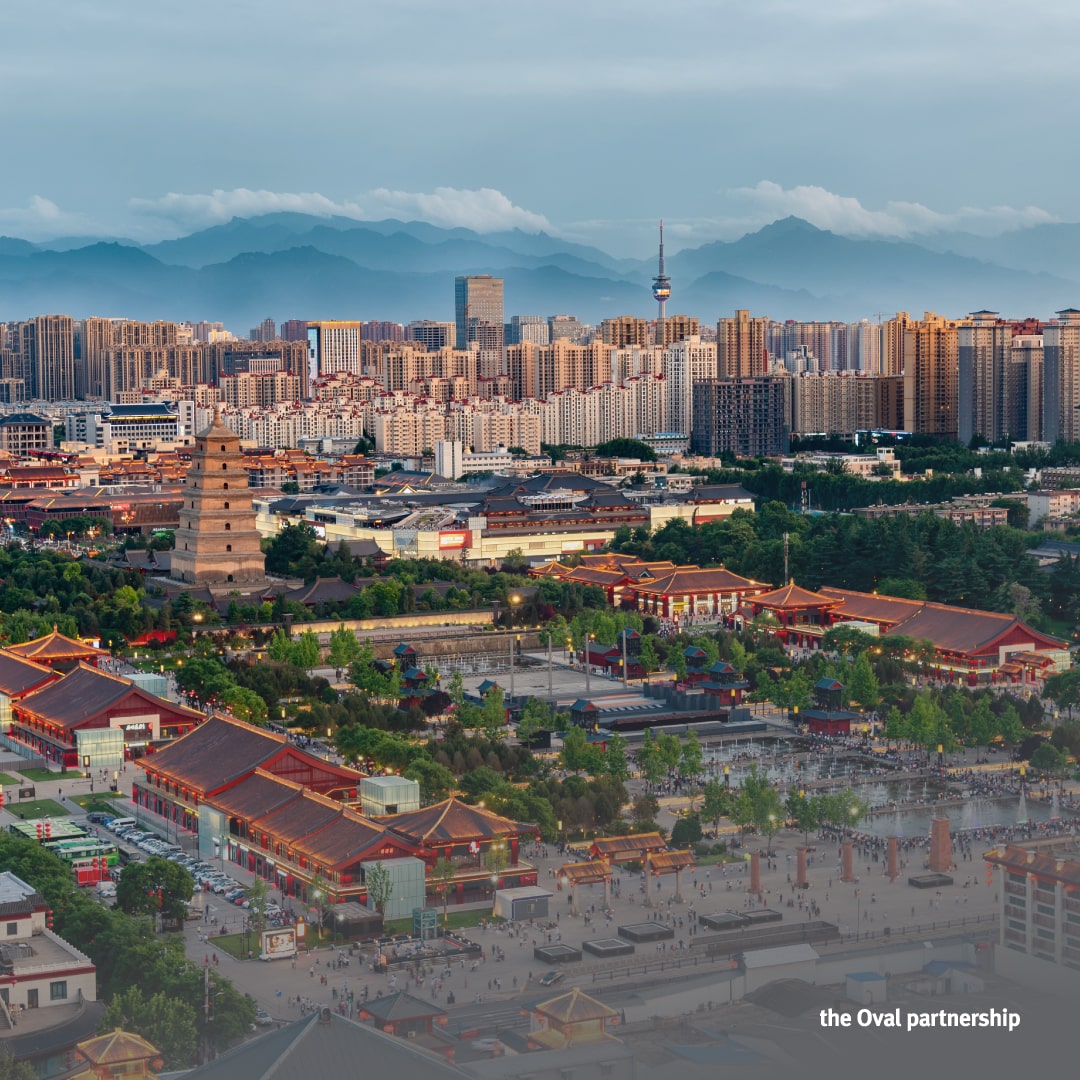
Muslim Quarters - one of the oldest streets with over 1,000 years of history - is a mixing pot of both Muslim and Chinese cultures that can be dated back to the Ming and Qing dynasties. The emergence of “Muslim Quarters” was closely entwined with the history of China’s ancient Silk Road. The Chinese Grand Mosques, Xicheng Gate Tower from the Ming Dynasty and local food stalls and restaurants speak the past and present of this culturally rich community. As visitors pave the historic streets, it gives them a great chance to feel the multi-culture of China and appreciate the conserved architecture and inclusive communities.
With its pedestrian-friendly infrastructure, exploring Xian becomes an unparalleled experience as visitors can leisurely stroll through the city, immersing themselves in the vibrant neighbourhoods at their own pace. Cycling or strolling along the wall allows visitors to soak in the city's charm while admiring the harmonious blend of ancient and modern elements. Many of Xian's iconic landmarks, such as the Terracotta Warriors and the City Wall, are conveniently located within close proximity, allowing visitors to maximise their time and experience the highlights of the city without extensive travel.
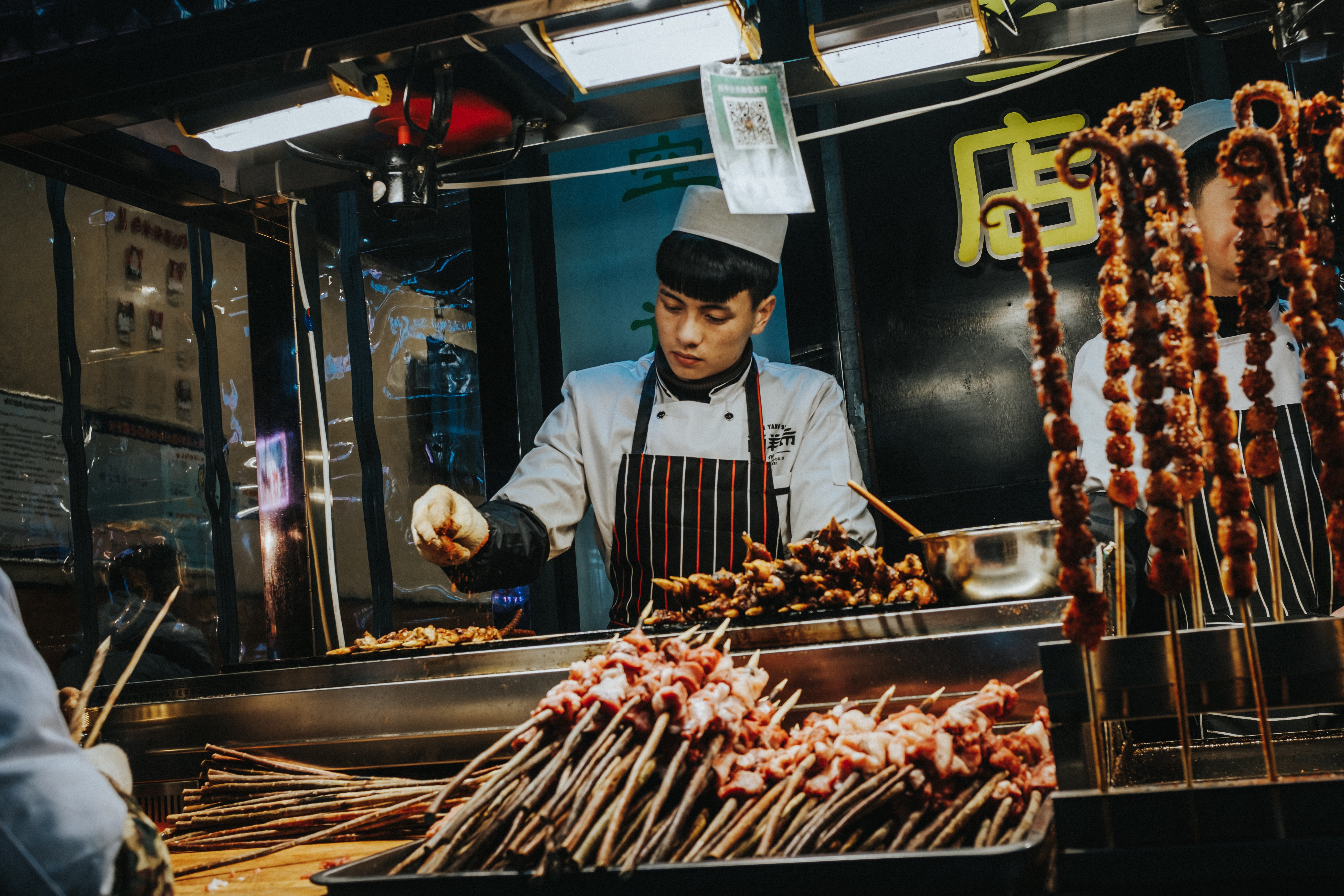
There are plenty of cultural activities waiting to be discovered in Xian. Immerse yourself in the vibrant performances that showcase the music, dance, and theatre of the Tang dynasty, while indulging in the flavours of Xian's cuisine, ranging from tantalising street snacks to exquisite banquets. Explore bustling markets, discover unique handicrafts, and find tranquillity in the beautifully designed gardens. With its well-designed layout and efficient transportation system, Xian ensures easy access to its various attractions, allowing visitors to navigate the city seamlessly and make the most of their time.
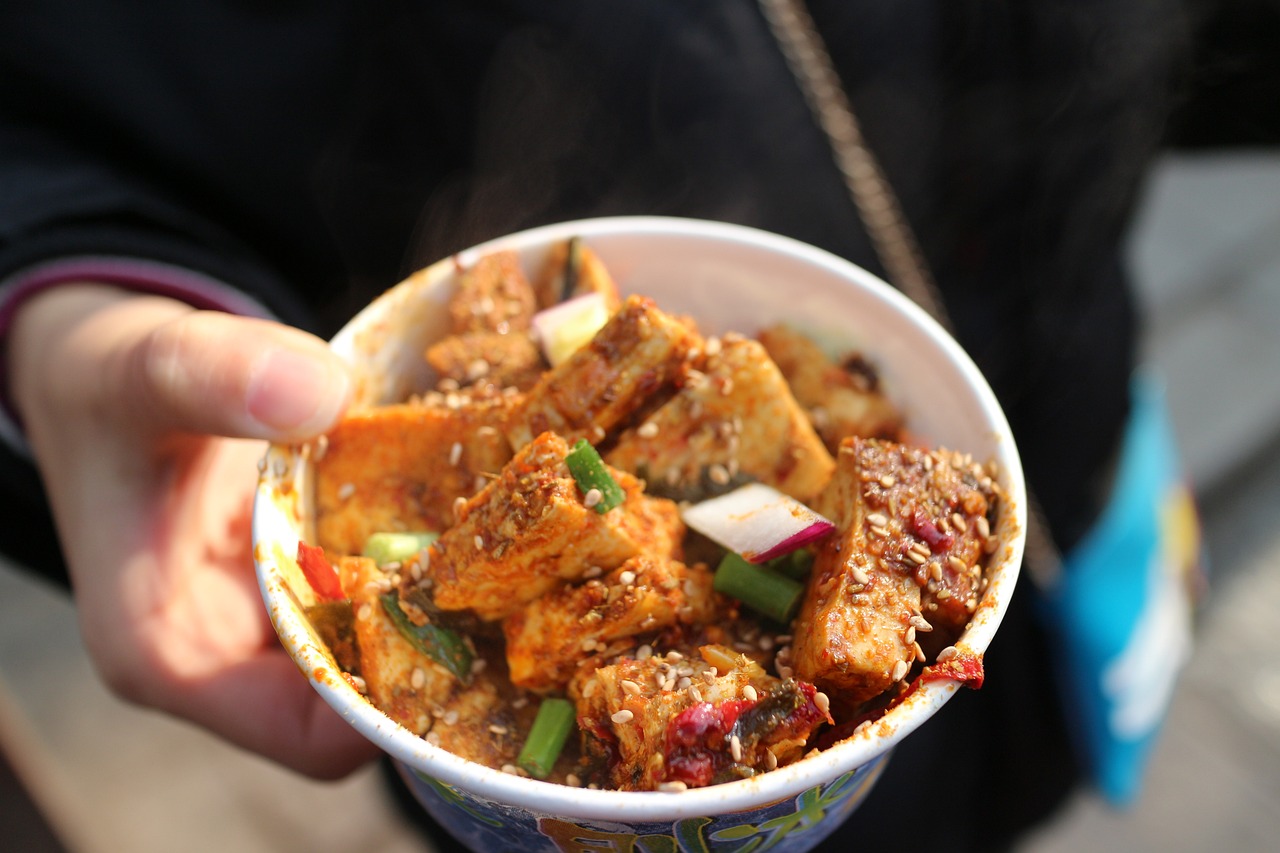
As Xian continues to embrace modernity while preserving its cultural heritage, the city has become a prominent destination for cultural tourism. Its rich history, archaeological wonders, and vibrant cultures offer an enriching experience for travellers seeking to explore the depths of China's ancient civilization. Xian's beauty does not solely rely on its historical wonders, but also on its ability to blend the old and new, adding unique cultures and communities to create a fascinating journey of cultural tourism for visitors. Xian also serves as an inspiration for other cities aspiring to establish sustainable and people-centric neighbourhoods, with its emphasis on walkability, cultural offerings, and compelling narratives.
Related Articles
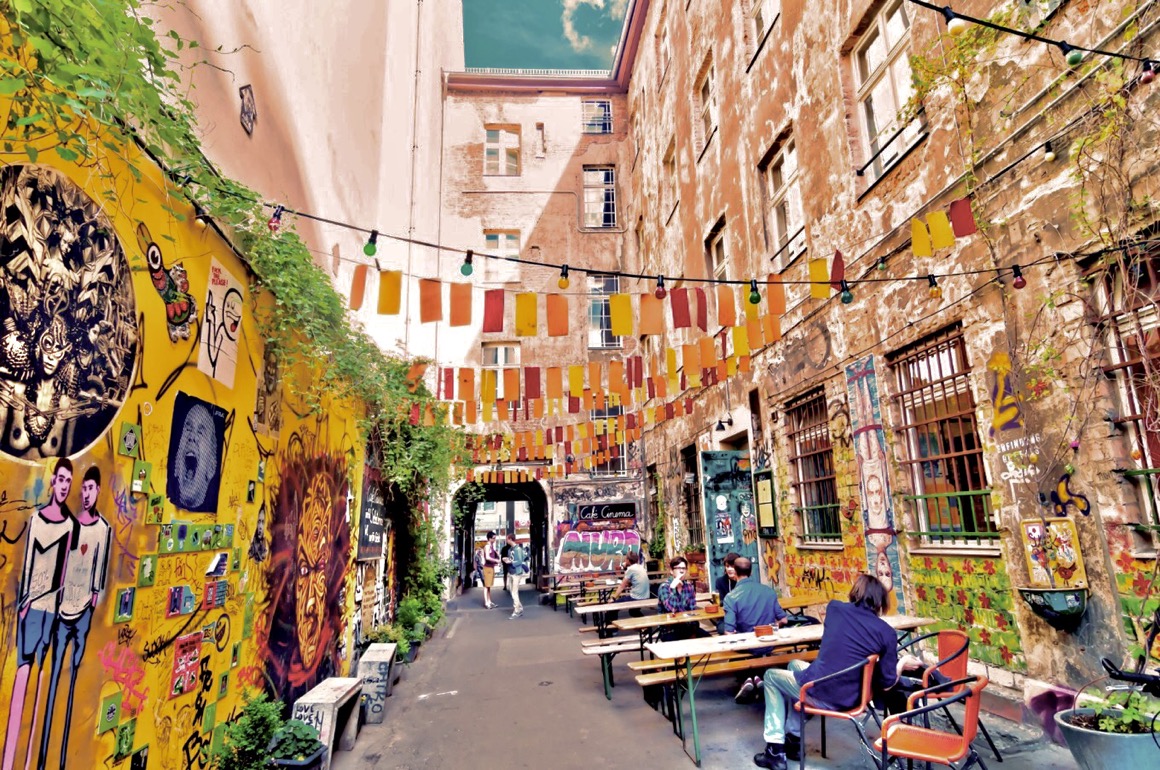
The UNESCO World Heritage and Sustainable Tourism Programme represents a new approach based on dialogue and stakeholder cooperation where planning for tourism and heritage management is integrated at a destination level, the natural and cultural assets are valued and protected, and appropriate tourism developed.
World Heritage and tourism stakeholders share responsibility for conservation of our common cultural and natural heritage of Outstanding Universal Value and for sustainable development through appropriate tourism management.
Facilitate the management and development of sustainable tourism at World Heritage properties through fostering increased awareness, capacity and balanced participation of all stakeholders in order to protect the properties and their Outstanding Universal Value.
Focus Areas
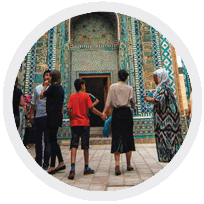
Policy & Strategy
Sustainable tourism policy and strategy development.

Tools & Guidance
Sustainable tourism tools

Capacity Building
Capacity building activities.

Heritage Journeys
Creation of thematic routes to foster heritage based sustainable tourism development
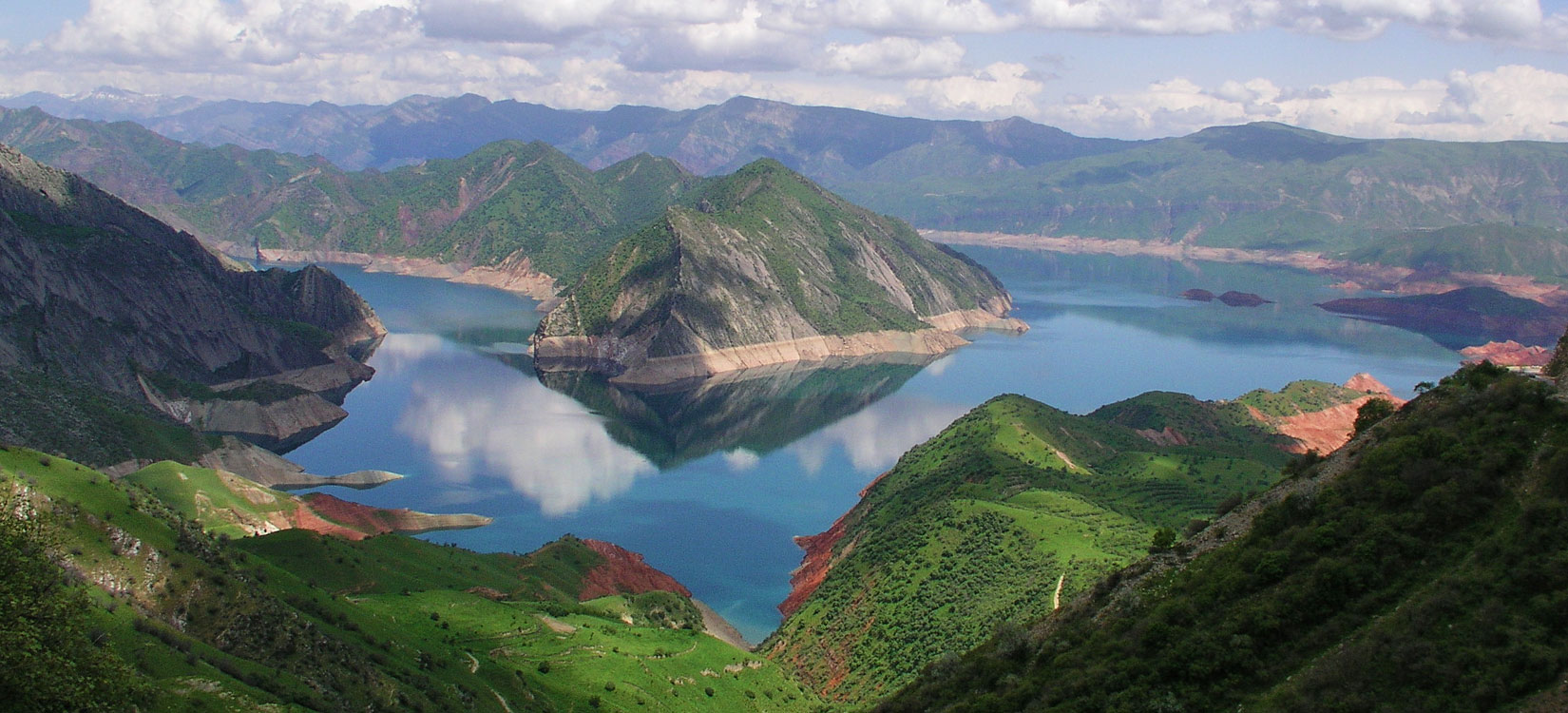
A key goal of the UNESCO WH+ST Programme is to strengthen the enabling environment by advocating policies and frameworks that support sustainable tourism as an important vehicle for managing cultural and natural heritage. Developing strategies through broad stakeholder engagement for the planning, development and management of sustainable tourism that follows a destination approach and focuses on empowering local communities is central to UNESCO’s approach.
Supporting Sustainable Tourism Recovery
Enhancing capacity and resilience in 10 World Heritage communities
Supported by BMZ, and implemented by UNESCO in collaboration with GIZ, this 2 million euro tourism recovery project worked to enhance capacity building in local communities, improve resilience and safeguard heritage.
Policy orientations
Defining the relationship between world heritage and sustainable tourism
Based on the report of the international workshop on Advancing Sustainable Tourism at Natural and Cultural Heritage Sites (Mogao, China, September 2009), the World Heritage Committee at its 34th session adopted the policy orientations which define the relationship between World Heritage and sustainable tourism ( Decision 34 COM 5F.2 ).
World Heritage and Tourism in a Changing Climate
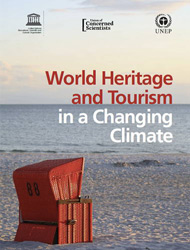
Providing an overview of the increasing vulnerability of World Heritage sites to climate change impacts and the potential implications for and of global tourism.
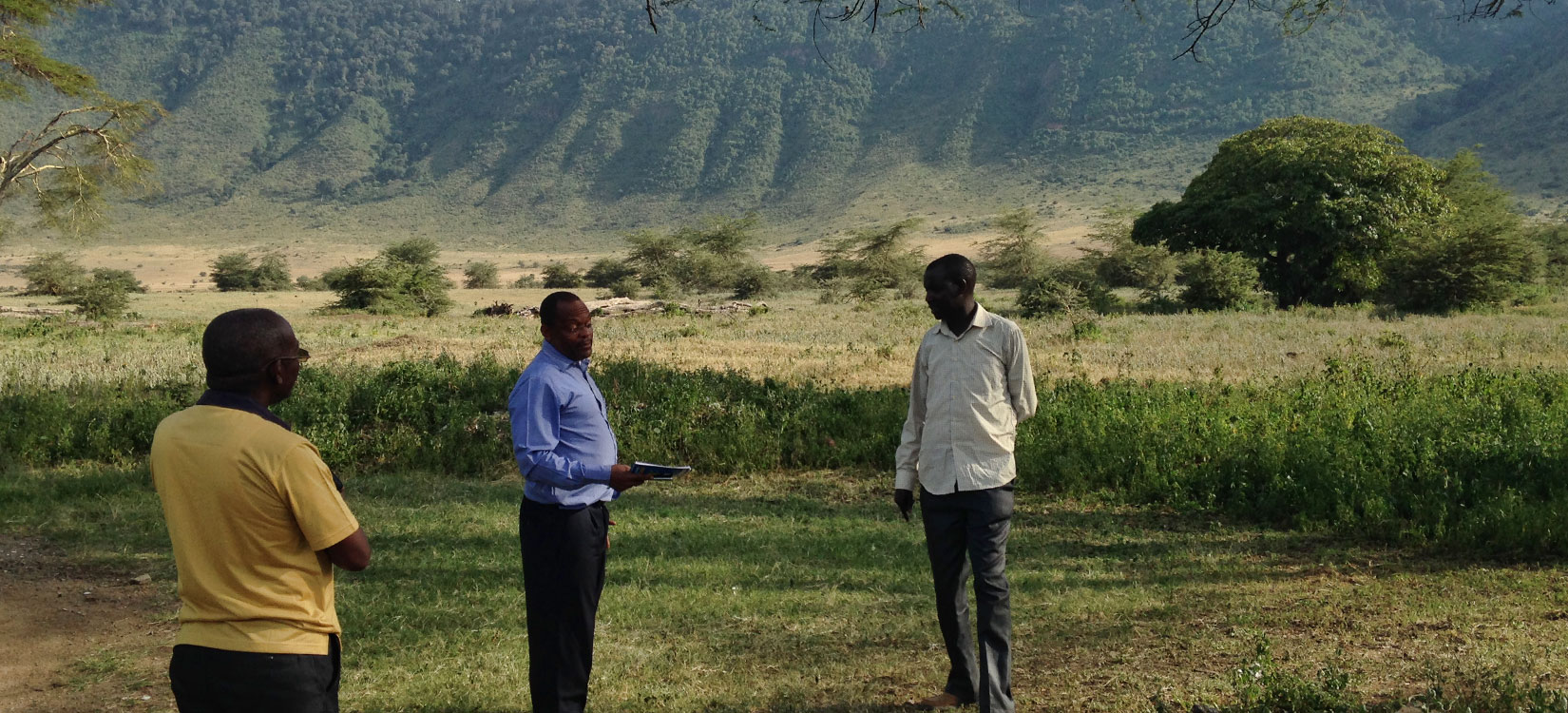
Sustainable Tourism Tools
Manage tourism efficiently, responsibly and sustainably based on the local context and needs
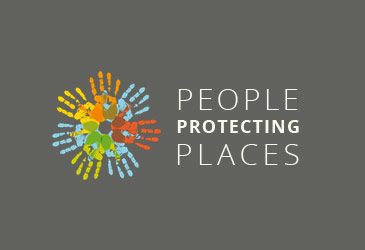
People Protecting Places is the public exchange platform for the World Heritage and Sustainable Tourism Programme, providing education and information, encouraging support, engaging in social and community dialogue

The ' How-To ' guides offer direction and guidance to managers of World Heritage tourism destinations and other stakeholders to help identify the most suitable solutions for circumstances in their local environments and aid in developing general know-how.
English French Russian
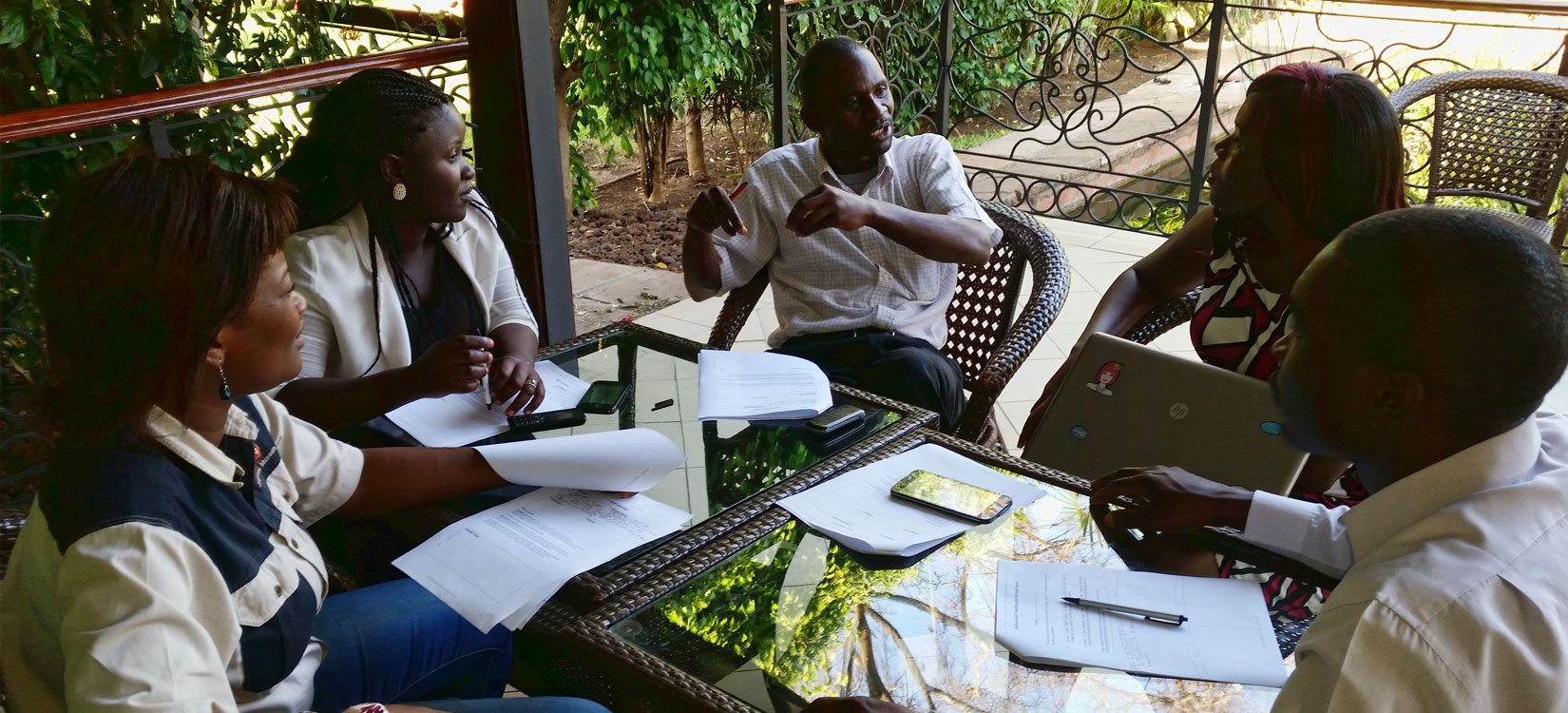
Helping site managers and other tourism stakeholders to manage tourism more sustainably
Capacity Building in 4 Africa Nature Sites
A series of practical training and workshops were organized in four priority natural World Heritage sites in Africa (Lesotho, Malawi, South Africa, Tanzania, Zambia and Zimbabwe) with the aim of providing capacity building tools and strategies for site managers to help them manage tourism at their sites more sustainably.
Learn more →
15 Pilot Sites in Nordic-Baltic Region
The project Towards a Nordic-Baltic pilot region for World Heritage and Sustainable Tourism (2012-2014) was initiated by the Nordic World Heritage Foundation (NWHF). With a practical approach, the project has contributed to tools for assessing and developing sustainable World Heritage tourism strategies with stakeholder involvement and cooperation.
Supporting Community-Based Management and Sustainable Tourism at World Heritage sites in South-East Asia
Entitled “The Power of Culture: Supporting Community-Based Management and Sustainable Tourism at World Heritage sites in South-East Asia", the UNESCO Office in Jakarta with the technical assistance of the UNESCO World Heritage and Sustainable Tourism Programme and the support from the Government of Malaysia is spearheading the first regional effort in Southeast Asia to introduce a new approach to sustainable tourism management at World Heritage sites in Malaysia, the Philippines and Indonesia.
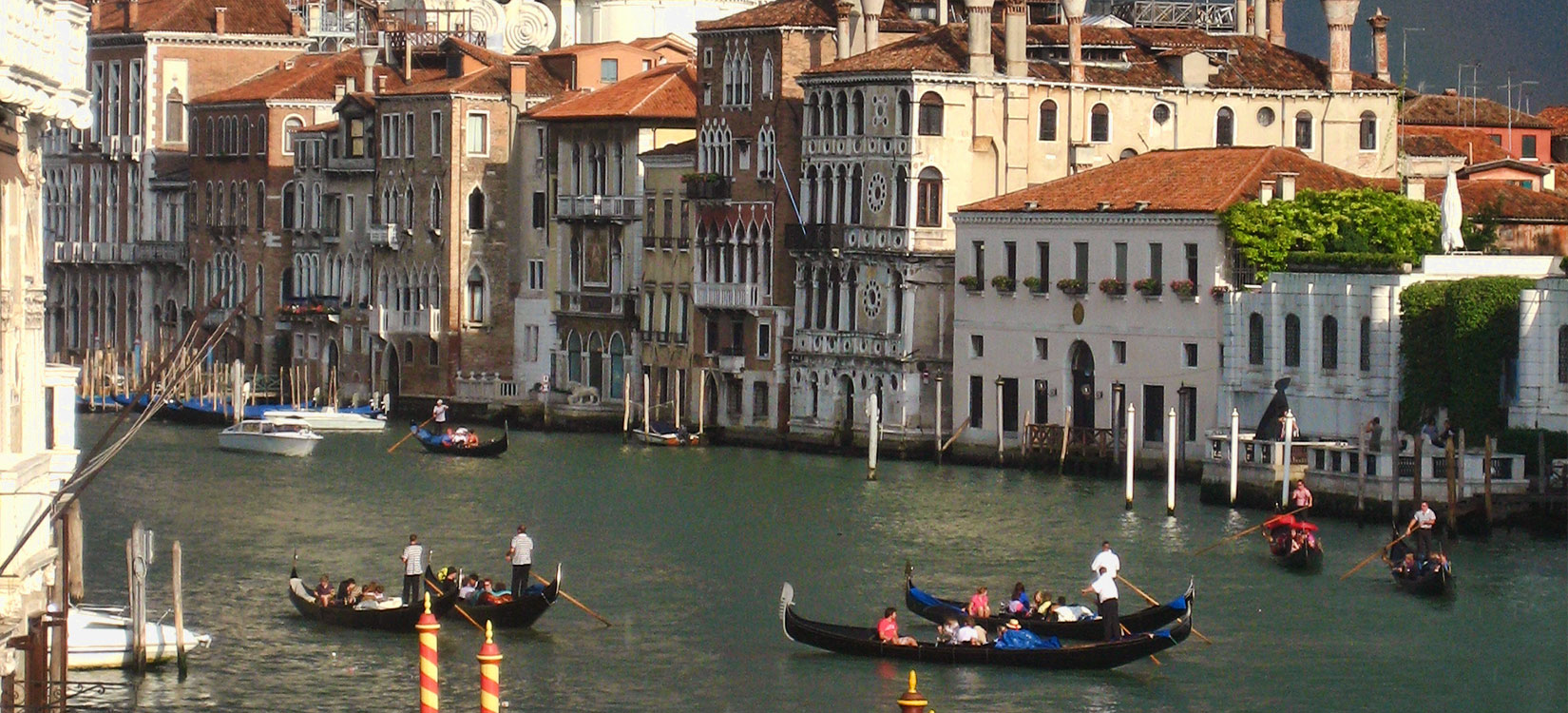
Cultural tourism is one of the largest and fastest-growing global tourism markets. Culture and creative industries are increasingly being used to promote destinations and enhance their competitiveness and attractiveness.
Many locations are now actively developing their cultural assets as a means of developing comparative advantages in an increasingly competitive tourism marketplace, and to create local distinctiveness in the face of globalization.
UNESCO will endeavour to create networks of key stakeholders to coordinate the destination management and marketing associated with the different heritage routes to promote and coordinate high-quality, unique experiences based on UNESCO recognized heritage. The goal is to promote sustainable development based on heritage values and create added tourist value for the sites.
UNESCO World Heritage Journeys of the EU
Creating heritage-based tourism that spurs investment in culture and the creative industries that are community-centered and offer sustainable and high-quality products that play on Europe's comparative advantages and diversity of its cultural assets.
World Heritage Journeys of Buddhist Heritage Sites
UNESCO is currently implementing a project to develop a unique Buddhist Heritage Route for Sustainable Tourism Development in South Asia with the support from the Korea International Cooperation Agency (KOICA). South Asia is host to rich Buddhist heritage that is exemplified in the World Heritage properties across the region.
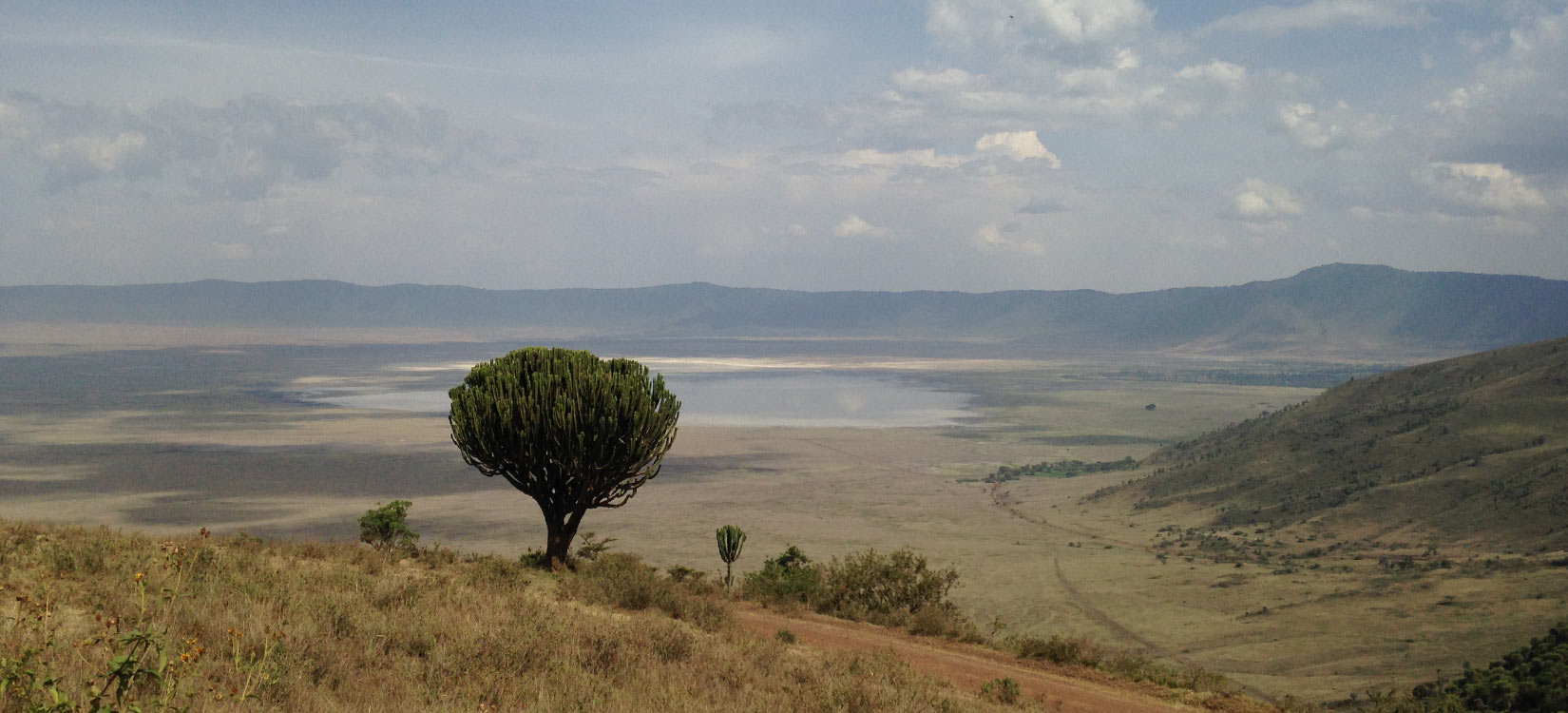
Programme Background
In 2011 UNESCO embarked on developing a new World Heritage and Sustainable Tourism Programme.
The aim was to create an international framework for the cooperative and coordinated achievement of shared and sustainable outcomes related to tourism at World Heritage properties.
The preparatory work undertaken in developing the Programme responded to the decision 34 COM 5F.2 of the World Heritage Committee at its 34th session in Brasilia in 2010, which requested
“the World Heritage Centre to convene a new and inclusive programme on World Heritage and Sustainable Tourism, with a steering group comprising interested States Parties and other relevant stakeholders, and also requests the World Heritage Centre to outline the objectives and approach to the implementation of this programme".
The Steering Group was comprised of States Parties representatives from the six UNESCO Electoral Groups (Germany (I), Slovenia (II), Argentina (III), China (IV), Tanzania (Va), and Lebanon (Vb)), the Director of the World Heritage Centre, the Advisory Bodies (IUCN, ICOMOS and ICCROM), the United Nations World Tourism Organization (UNWTO) and the Swiss Government as the donor agency.
The Government of Switzerland has provided financial support for specific actions to be undertaken by the Steering Group. To coordinate and support the process, the World Heritage Centre has formed a small Working Group with the support of the Nordic World Heritage Foundation, the Government of Switzerland and the mandated external consulting firm MartinJenkins.
The World Heritage Committee directed that the Programme take into account:
- the recommendations of the evaluation of the concluded tourism programme ( WHC-10/34.COM/INF.5F.3 )
- the policy orientation which defines the relationship between World Heritage and sustainable tourism that emerged from the workshop Advancing Sustainable Tourism at Natural and Cultural Heritage Sites (Mogao, China, September 2009) ( WHC-10/34.COM/INF.5F.1 )
Overarching and strategic processes that the new World Heritage and Sustainable Tourism Programme will be aligned with include the Strategic Objectives of the World Heritage Convention (the five C's) ( Budapest Declaration 2002 ), the ongoing Reflections on the Future of the World Heritage Convention ( WHC-11/35.COM/12A ) and the Strategic Action Plan for the Implementation of the World Heritage Convention 2012-2022 ( WHC-11/18.GA/11 ), the Relationship between the World Heritage Convention and Sustainable Development (WHC-10/34.COM/5D), the World Heritage Capacity Building Strategy ( WHC-10/34.COM/5D ), the Global Strategy for a Representative, Balanced and Credible World Heritage List (1994), and the Evaluation of the Global Strategy and PACT initiative ( WHC-11/18.GA/8 - 2011 ).
In addition, the programme development process has been enriched by an outreach to representatives from the main stakeholder groups including the tourism sector, national and local governments, site practitioners and local communities. The programme design was further developed at an Expert Meeting in Sils/Engadine, Switzerland October 2011. In this meeting over 40 experts from 23 countries, representing the relevant stakeholder groups, worked together to identify the overall strategic approach and a prioritised set of key objectives and activities. The proposed Programme was adopted by the World Heritage Committee in 2012 at its 36th session in St Petersburg, Russian Federation .
International Instruments
International Instruments Relating to Sustainable Development and Tourism.
Resolutions adopted by the United Nations, charters adopted by ICOMOS, decisions adopted by the World Heritage Committee, legal instruments adopted by UNESCO on heritage preservation.
Resolutions adopted by the United Nations
- Report by the Department of Economics and Social Affairs: Tourism and Sustainable Development: The Global Importance of Tourism at the United Nations’ Commission on Sustainable Development 7th Session (1999)
- Resolution A/RES/56/212 and the Global Code of Ethics for Tourism adopted by the United Nations World Tourism Organization (1999)
Charters adopted by ICOMOS
- The ICOMOS International Cultural Tourism Charter (1999)
- The ICOMOS Charter for the Interpretation and Presentation of Cultural Heritage Sites (2008)
Decisions adopted by the World Heritage Committee
- Decision (XVII.4-XVII.12) adopted by the World Heritage Committee at its 25th Session in Helsinki (2001)
- Decision 33 COM 5A adopted by the World Heritage Committee at its 30th Session in Seville (2009)
- Decision 34 COM 5F.2 adopted by the World Heritage Committee at its 34th Session in Brasilia (2010)
- Decision 36 COM 5E adopted by the World Heritage Committee at its 36th Session in Saint Petersburg (2012)
Legal instruments adopted by UNESCO on heritage preservation in chronological order
- Convention on the Means of Prohibiting and Preventing the Illicit Import, Export and Transfer of Ownership of Cultural Property (1970)
- The Recommendation for the Protection of Movable Cultural Property (1978)
- The Recommendation on the Safeguarding of Traditional Culture and Folklore (1989)
- The Convention on the Protection of the Underwater Cultural heritage (2001)
- The Convention on the Protection and Promotion of the Diversity of Cultural Expressions (2005)
Other instruments
- Other instruments OECD Tourism Trends and Policies 2012 (French forthcoming)
- Programme on Sustainable Consumption and Production (In English)
- Siem Reap Declaration on Tourism and Culture 2015 – Building a New Partnership Model
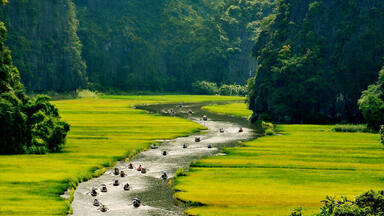
Decisions / Resolutions (5)
The World Heritage Committee,
- Having examined Document WHC/18/42.COM/5A,
- Recalling Decision 41 COM 5A adopted at its 41st session (Krakow, 2017) and Decision 40 COM 5D adopted at its 40th session (Istanbul/UNESCO, 2016), General:
- Takes note with appreciation of the activities undertaken by the World Heritage Centre over the past year in pursuit of the Expected Result to ensure that “tangible heritage is identified, protected, monitored and sustainably managed by Member States, in particular through the effective implementation of the 1972 Convention ”, and the five strategic objectives as presented in Document WHC/18/42.COM/5A;
- Welcomes the proactive role of the Secretariat for enhancing synergies between the World Heritage Convention and the other Culture and Biodiversity-related Conventions, particularly the integration of relevant synergies aspects in the revised Periodic Reporting Format and the launch of a synergy-related web page on the Centre’s website;
- Also welcomes the increased collaboration among the Biodiversity-related Conventions through the Biodiversity Liaison Group and focused activities, including workshops, joint statements and awareness-raising;
- Takes note of the Thematic studies on the recognition of associative values using World Heritage criterion (vi) and on interpretation of sites of memory, funded respectively by Germany and the Republic of Korea and encourages all States Parties to take on board their findings and recommendations, in the framework of the identification of sites, as well as management and interpretation of World Heritage properties;
- Noting the discussion paper by ICOMOS on Evaluations of World Heritage Nominations related to Sites Associated with Memories of Recent Conflicts, decides to convene an Expert Meeting on sites associated with memories of recent conflicts to allow for both philosophical and practical reflections on the nature of memorialization, the value of evolving memories, the inter-relationship between material and immaterial attributes in relation to memory, and the issue of stakeholder consultation; and to develop guidance on whether and how these sites might relate to the purpose and scope of the World Heritage Convention , provided that extra-budgetary funding is available and invites the States Parties to contribute financially to this end;
- Also invites the States Parties to support the activities carried out by the World Heritage Centre for the implementation of the Convention ;
- Requests the World Heritage Centre to present, at its 43rd session, a report on its activities. Thematic Programmes:
- Welcomes the progress report on the implementation of the World Heritage Thematic Programmes and Initiatives, notes their important contribution towards implementation of the Global Strategy for representative World Heritage List, and thanks all States Parties, donors and other organizations for having contributed to achieving their objectives;
- Acknowledges the results achieved by the World Heritage Cities Programme and calls States Parties and other stakeholders to provide human and financial resources ensuring the continuation of this Programme in view of its crucial importance for the conservation of the urban heritage inscribed on the World Heritage List, for the implementation of the Recommendation on the Historic Urban Landscape and its contribution to achieving the 2030 Sustainable Development Goals related to cities as well as for its contribution to the preparation of the New Urban Agenda, and further thanks to China and Croatia for their support for the implementation of the Programme;
- Also acknowledges the results achieved of the World Heritage Marine Programme, also thanks Flanders, France and the Annenberg Foundation for their support, notes the increased focus of the Programme on a global managers network, climate change adaptation strategies and sustainable fisheries, and invites States Parties, the World Heritage Centre and other stakeholders to continue to provide human and financial resources to support for the implementation of the Programme;
- Further acknowledges the results achieved in the implementation of the World Heritage Sustainable Tourism Programme, in particular the development of the Sustainable Tourism and Visitor Management Assessment tool and encourages States Parties to participate in the pilot testing of the tool, expresses appreciation for the funding provided by the European Commission and further thanks the Republic of Korea, Norway, and Seabourn Cruise Line for their support in the implementation of the Programme’’s activities;
- Further notes the progress in the implementation of the Small Island Developing States Programme, its importance for a representative, credible and balanced World Heritage List and building capacity of site managers and stakeholders to implement the World Heritage Convention , thanks furthermore Japan and the Netherlands for their support as well as the International Centre on Space Technology for Natural and Cultural Heritage (HIST) and the World Heritage Institute of Training & Research for the Asia & the Pacific Region (WHITRAP) as Category 2 Centres for their technical and financial supports and also requests the States Parties and other stakeholders to continue to provide human, financial and technical resources for the implementation of the Programme;
- Takes note of the activities implemented jointly by the International Astronomical Union (IAU) and ICOMOS under the institutional guidance of the World Heritage Centre, in line with its Decision 40 COM 5D, further requests the World Heritage Centre to disseminate among the States Parties the second volume of the IAU/ICOMOS Thematic Study on Astronomical Heritage and renames this initiative as Initiative on Heritage of Astronomy, Science and Technology;
- Also takes note of the progress report on the Initiative on Heritage of Religious Interest, endorses the recommendations of the Thematic Expert Consultation meetings focused on Mediterranean and South-Eastern Europe (UNESCO, 2016), Asia-Pacific (Thailand, 2017) and Eastern Europe (Armenia, 2018), thanks the States Parties for their generous contribution and reiterates its invitation to States Parties and other stakeholders to continue to support this Initiative, as well as its associated Marketplace projects developed by the World Heritage Centre;
- Takes note of the activities implemented by CRATerre in the framework of the World Heritage Earthen Architecture Programme, under the overall institutional guidance of the World Heritage Centre, and of the lines of action proposed for the future, if funding is available;
- Invites States Parties, international organizations and donors to contribute financially to the Thematic Programmes and Initiatives as the implementation of thematic priorities is no longer feasible without extra-budgetary funding;
- Requests furthermore the World Heritage Centre to submit an updated result-based report on Thematic Programmes and Initiatives, under Item 5A: Report of the World Heritage Centre on its activities, for examination by the World Heritage Committee at its 44th session in 2020.
1. Having examined document WHC-12/36.COM/5E,
2. Recalling Decision 34 COM 5F.2 adopted at its 34th session (Brasilia, 2010),
3. Welcomes the finalization of the new and inclusive Programme on World Heritage and Sustainable Tourism and notes with appreciation the participatory process for its development, objectives and approach towards implementation;
4. Also welcomes the contribution of the Steering Group comprised of States Parties representatives from the UNESCO Electoral Groups, the World Heritage Centre, the Advisory Bodies (IUCN, ICOMOS, ICCROM), Switzerland and the United Nations World Tourism Organisation (UNWTO) in the elaboration of the Programme;
5. Thanks the Government of Switzerland, the United Nations Foundation and the Nordic World Heritage Foundation for their technical and financial support to the elaboration of the Programme;
6. Notes with appreciation the contribution provided by the States Parties and other consulted stakeholders during the consultation phase of the Programme;
7. Takes note of the results of the Expert Meeting in Sils/Engadin (Switzerland), from 18 to 22 October 2011 contributing to the Programme, and further thanks the Government of Switzerland for hosting the Expert Meeting;
8. Adopts the World Heritage and Sustainable Tourism Programme;
9. Requests the World Heritage Centre to refine the Draft Action Plan 2013-2015 in an Annex to the present document and to implement the Programme with a Steering Group comprised of representatives of the UNESCO Electoral Groups, donor agencies, the Advisory Bodies, UNWTO and in collaboration with interested stakeholders;
10. Notes that financial resources for the coordination and implementation of the Programme do not exist and also requests States Parties to support the implementation of the World Heritage and Sustainable Tourism Programme;
11. Further requests the World Heritage Centre to report biennially on the progress of the implementation of the Programme;
12. Notes with appreciation the launch of the Programme foreseen at the 40th Anniversary of the World Heritage Convention event in Kyoto, Japan, in November 2012
1. Having examined Document WHC-10/34.COM/INF.5F.1 and WHC-10/34.COM/INF.5F.3,
2. Highlighting that the global tourism sector is large and rapidly growing, is diverse and dynamic in its business models and structures, and the relationship between World Heritage and tourism is two way: tourism, if managed well, offers benefits to World Heritage properties and can contribute to cross-cultural exchange but, if not managed well, poses challenges to these properties and recognizing the increasing challenges and opportunities relating to tourism;
3. Expresses its appreciation to the States Parties of Australia, China, France, India, Sweden, Switzerland and the United Kingdom, and to the United Nations Foundation and the Nordic World Heritage Foundation for the financial and technical support to the World Heritage Tourism Programme since its establishment in 2001;
4. Welcomes the report of the international workshop on Advancing Sustainable Tourism at Natural and Cultural Heritage Sites (Mogao, China, September 2009) and adopts the policy orientation which defines the relationship between World Heritage and sustainable tourism ( Attachment A );
5. Takes note of the evaluation of the World Heritage Tourism Programme by the UN Foundation, and encourages the World Heritage Centre to take fully into account the eight programme elements recommended in the draft final report in any future work on tourism ( Attachment B );
6. Decides to conclude the World Heritage Tourism Programme and requests the World Heritage Centre to convene a new and inclusive programme on World Heritage and Sustainable Tourism, with a steering group comprising interested States Parties and other relevant stakeholders, and also requests the World Heritage Centre to outline the objectives and approach to implementation of this programme, drawing on the directions established in the reports identified in Paragraphs 4 and 5 above, for consideration at the 35th session of the World Heritage Committee (2011);
7. Also welcomes the offer of the Government of Switzerland to provide financial and technical support to specific activities supporting the steering group; further welcomes the offer of the Governments of Sweden, Norway and Denmark to organize a Nordic-Baltic regional workshop in Visby, Gotland, Sweden in October 2010 on World Heritage and sustainable tourism; and also encourages States Parties to support the new programme on World Heritage and Sustainable Tourism including through regional events and the publication of materials identifying good practices;
8. Based upon the experience gained under the World Heritage Convention of issues related to tourism, invites the Director General of UNESCO to consider the feasibility of a Recommendation on the relationship between heritage conservation and sustainable tourism.
Attachment A
Recommendations of the international workshop
on Advancing Sustainable Tourism at Natural and Cultural Heritage Sites
Policy orientations: defining the relationship between World Heritage and tourism
1. The tourism sector
The global tourism sector is large and rapidly growing, is diverse and dynamic in its business models and structures.
Tourists/visitors are diverse in terms of cultural background, interests, behaviour, economy, impact, awareness and expectations of World Heritage.
There is no one single way for the World Heritage Convention , or World Heritage properties, to engage with the tourism sector or with tourists/visitors.
2. The relationship between World Heritage and tourism
The relationship between World Heritage and tourism is two-way:
a. World Heritage offers tourists/visitors and the tourism sector destinations
b. Tourism offers World Heritage the ability to meet the requirement in the Convention to 'present' World Heritage properties, and also a means to realise community and economic benefits through sustainable use.
Tourism is critical for World Heritage:
a. For States Parties and their individual properties,
i. to meet the requirement in the Convention to 'present' World Heritage
ii. to realise community and economic benefits
b. For the World Heritage Convention as a whole, as the means by which World Heritage properties are experienced by visitors travelling nationally and internationally
c. As a major means by which the performance of World Heritage properties, and therefore the standing of the Convention , is judged,
i. many World Heritage properties do not identify themselves as such, or do not adequately present their Outstanding Universal Value
ii. it would be beneficial to develop indicators of the quality of presentation, and the representation of the World Heritage brand
d. As a credibility issue in relation to: i. the potential for tourism infrastructure to damage Outstanding Universal Value
i. the threat that World Heritage properties may be unsustainably managed in relation to their adjoining communities
ii. sustaining the conservation objectives of the Convention whilst engaging with economic development
iii. realistic aspirations that World Heritage can attract tourism.
World Heritage is a major resource for the tourism sector:
a. Almost all individual World Heritage properties are significant tourism destinations
b. The World Heritage brand can attract tourists/visitors,
i. the World Heritage brand has more impact upon tourism to lesser known properties than to iconic properties.
Tourism, if managed well, offers benefits to World Heritage properties:
a. to meet the requirement in Article 4 of the Convention to present World Heritage to current and future generations
b. to realise economic benefits.
Tourism, if not managed well, poses threats to World Heritage properties.
3. The responses of World Heritage to tourism
The impact of tourism, and the management response, is different for each World Heritage property: World Heritage properties have many options to manage the impacts of tourism.
The management responses of World Heritage properties need to:
a. work closely with the tourism sector
b. be informed by the experiences of tourists/visitors to the visitation of the property
c. include local communities in the planning and management of all aspects of properties, including tourism.
While there are many excellent examples of World Heritage properties successfully managing their relationship to tourism, it is also clear that many properties could improve:
a. the prevention and management of tourism threats and impacts
b. their relationship to the tourism sector inside and outside the property
c. their interaction with local communities inside and outside the property
d. their presentation of Outstanding Universal Value and focus upon the experience of tourists/visitors.
a. be based on the protection and conservation of the Outstanding Universal Value of the property, and its effective and authentic presentation
b. work closely with the tourism sector
c. be informed by the experiences of tourists/visitors to the visitation of the property
d. to include local communities in the planning and management of all aspects of properties, including tourism.
4. Responsibilities of different actors in relation to World Heritage and tourism
The World Heritage Convention (World Heritage Committee, World Heritage Centre, Advisory Bodies):
a. set frameworks and policy approaches
b. confirm that properties have adequate mechanisms to address tourism before they are inscribed on the World Heritage List
i. develop guidance on the expectations to be include in management plans
c. monitor the impact upon OUV of tourism activities at inscribed sites, including through indicators for state of conservation reporting
d. cooperate with other international organisations to enable:
i. other international organisations to integrate World Heritage considerations in their programs
ii. all parties involved in World Heritage to learn from the activities of other international organisations
e. assist State Parties and sites to access support and advice on good practices
f. reward best practice examples of World Heritage properties and businesses within the tourist/visitor sector
g. develop guidance on the use of the World Heritage emblem as part of site branding.
Individual States Parties:
a. develop national policies for protection
b. develop national policies for promotion
c. engage with their sites to provide and enable support, and to ensure that the promotion and the tourism objectives respect Outstanding Universal Value and are appropriate and sustainable
d. ensure that individual World Heritage properties within their territory do not have their OUV negatively affected by tourism.
Individual property managers:
a. manage the impact of tourism upon the OUV of properties
i. common tools at properties include fees, charges, schedules of opening and restrictions on access
b. lead onsite presentation and provide meaningful visitor experiences
c. work with the tourist/visitor sector, and be aware of the needs and experiences of tourists/visitors, to best protect the property
i. the best point of engagement between the World Heritage Convention and the tourism sector as a whole is at the direct site level, or within countries
d. engage with communities and business on conservation and development.
Tourism sector:
a. work with World Heritage property managers to help protect Outstanding Universal Value
b. recognize and engage in shared responsibility to sustain World Heritage properties as tourism resources
c. work on authentic presentation and quality experiences.
Individual tourists/visitors with the assistance of World Heritage property managers and the tourism sector, can be helped to appreciate and protect the OUV of World Heritage properties.
Attachment B
Programme elements recommended by the Draft Final Report of the Evaluation of the World Heritage Tourism Programme by the UN Foundation:
1. Adopt and disseminate standards and principles relating to sustainable tourism at World Heritage sites;
2. Support the incorporation of appropriate tourism management into the workings of the Convention ;
3. Collation of evidence to support sustainable tourism programme design, and to support targeting;
4. Contribution of a World Heritage perspective to cross agency sustainable tourism policy initiatives;
5. Strategic support for the dissemination of lessons learned;
6. Strategic support for the development of training and guidance materials for national policy agencies and site managers;
7. Provision of advice on the cost benefit impact of World Heritage inscription;
8. Provision of advice on UNESCO World Heritage branding.
1. Having examined Documents WHC-09/33.COM/5A, WHC- 09/33.COM/INF.5A.1, WHC-09/33.COM/INF.5A.2, and WHC-09/33.COM/INF.5A.3 ,
2. Recalling Decision 32 COM 5 adopted at its 32nd session (Quebec City, 2008),
3. Takes note with appreciation of the activities undertaken by the World Heritage Centre over the past year in pursuit of the Committee's five Strategic Objectives;
4. Takes also note of the findings of the study undertaken by UNESCO's Internal Oversight Service on the mapping of the workload of the World Heritage Centre presented in Document WHC-09/33.COM/INF.5A.3;
5. Notes with satisfaction that the World Heritage Centre is working with the secretariats of intergovernmental committees of related conventions such as the Convention for the Safeguarding of Intangible Cultural Heritage , and the Convention for the Protection of the Underwater Cultural Heritage-2001 and recommends that such cooperation be encouraged as this would further strengthen the work of the Centre;
6. Requests the World Heritage Centre to prepare a document on the World Heritage Convention and its cooperation and exchange with other conventions and programmes in the field of cultural heritage for discussion at the 34th session of the World Heritage Committee (2010);
7. Also requests the World Heritage Centre, in future reports on activities undertaken, to further strengthen the information and analysis available to States Parties by:
a) Retaining the current format to report activities and including an update on progress with implementing the Committee's decisions,
b) Describing the criteria by which the World Heritage Centre makes decisions as to which activities under the Convention it undertakes,
c) And including, on a discretionary basis, analysis of strategic issues and new directions;
8. Further requests the World Heritage Centre to produce, on an experimental basis, an indexed audio verbatim recording of the proceedings of the 33rd Session in addition to the standard summary records (as produced since the 26th session of the World Heritage Committee);
9. Notes the outline provided by the World Heritage Centre of its roles and the roles of the Advisory Bodies and agrees that this topic be further discussed at the 34th session of the Committee in 2010 under a separate agenda item;
10. Requests furthermore the World Heritage Centre to outline the forward direction of the World Heritage thematic programmes and initiatives, to enable an understanding of how these themes connect with and integrate into general programmes, and how they might be resourced;
11. Notes that the Centre already proactively engages women in its Heritage Programmes in Asia, Africa and the Caribbean as part of its gender balance policy and the provision of equal opportunity to all, and recommends that gender balance and community involvement be prioritized in the Centre's programmes;
12. Adopts the World Heritage Thematic Programme on Prehistory presented in Annex 1 of document WHC-09/33.COM/5A ;
13. Requests the World Heritage Centre to reconsider the term "prehistory", to better recognize the continuing cultures of indigenous communities, to ensure global representation in the identification and conservation of related properties, and to present a report on progress in developing an Action Plan on Prehistory and World Heritage at its 34th session in 2010;
14. Notes with concern the ongoing destruction of some of these fragile sites, including the recent destruction of the Rock Art sites of Tardrat Acacus in Libya, and requests the State Party to take immediate action and other measures as necessary to address the problem in consultation with the World Heritage Centre and to invite a joint World Heritage Centre / ICOMOS mission;
15. Expresses its gratitude to the Governments of Bahrain, South Africa and Spain for the financial and technical support for the various international scientific encounters, and recognizes the proposal of the Government of Spain in establishing a centre for the research of Prehistory;
16. Recalling the Decision of the World Heritage Committee 31 COM.21C to carry out a programme of sustainable development concerning the conservation of earthen architecture, thanks the Governments of Italy and France for their support of the programme on earthen architecture in Africa and the Arab States in particular, and requests the potential financial donors and the States Parties to support the implementation of activities and further requests the World Heritage Centre to submit a progress report at its 35th session in 2011;
17. Takes note of the progress report on the World Heritage Tourism Programme;
18. Thanks the Governments of Australia, China, France, India, Switzerland and United Kingdom, who have worked in close collaboration with the World Heritage Centre and the Advisory Bodies, the World Tourism Organization and other partners, for contributing to the Initiative of Sustainable Tourism;
19. Expresses its gratitude to the Governments of Australia and China for the organization of a workshop on sustainable tourism at the World Heritage site, Mogao Caves, China, in September-October 2009 and requests that the following elements be submitted to the Committee for examination at its 34th session in 2010:
a) A report on the workshop,
b) The subsequent recommendations of the workshop regarding the adoption of best practices policy guidance, and concerning the changes proposed for the Operational Guidelines for the implementation of the World Heritage Convention ,
c) A document concerning the progress of the World Heritage Programme on Tourism;
20. Finally requests the Director of the World Heritage Centre to identify supplementary sources of funding to put into place a sufficient number of staff and resources at the World Heritage Centre and the Advisory Bodies in order to continue to efficiently contribute to the resolution of problems related to World Heritage conservation.
XVII.8 The Secretariat provided the following justifications for the selection:
- Tourism - growing threats on World Heritage sites from tourism which, if sustainably managed could offer socio-economic development opportunities;
- Forests - since close to 60 of the natural sites on the World Heritage List are forests and that the lessons being learned from the large-scale UNESCO-UN Foundation projects in the tropical forest sites in the Democratic Republic of the Congo can serve as case studies to enrich the programme;
- Cities - since close to 200 of the cultural sites on the List are historic centres or entire cities, and because 20% of the Fund's international assistance have served to address the challenge of urban heritage conservation;
- Earthen structures - since some 30 of the cultural sites on the List are included in this category, and due to the particularity of conservation of earthen heritage, and threats.
XVII.10 The Committee expressed its appreciation for the clarity of the presentation and the justifications provided. Indicating strong support for the overall programming approach, the Committee however indicated the need for the programme to respond to the priorities established by the Committee and to create strong links with the results of the Global Strategy actions and Periodic Reporting. The Committee approved the four proposed themes of the programmes in this first series of initiatives and authorized the Centre to proceed in their development.
Understanding the Surge in Cultural Tourism: An In-depth Look into Its Popularity
By: Author Valerie Forgeard
Posted on Published: August 3, 2023 - Last updated: August 4, 2023
Categories Travel
You’ve probably heard the term ‘cultural tourism’ buzzing around travel circles, but have you ever wondered why it’s so popular? It’s more than just a trend.
Cultural tourism lets you dive deep into the heart of different societies, providing an up-close view of diverse traditions, customs, and ways of life.
Imagine walking through ancient ruins, participating in vibrant festivals or learning local crafts; it’s about experiencing a culture firsthand rather than observing from afar.
It’s not just about taking photos for your social media feed; it’s about expanding your knowledge and understanding of the world.
This article will guide you through the reasons behind cultural tourism’s popularity, its future prospects, and offer some tips on planning your own immersive adventure.
So let’s explore why more tourists are trading standard vacations for this enriching travel experience.
Key Takeaways
- Cultural tourism provides an up-close view of diverse traditions and customs, allowing for a firsthand experience of a culture.
- It expands knowledge and understanding of the world, while also ensuring cultural preservation and the passing down of traditions.
- Cultural tourism offers a distinct experience from mainstream tourism, providing immersive experiences beyond mere sightseeing.
- The role of media, including travel shows and social media influencers, and the economic impact of cultural tourism also contribute to its popularity.
Understanding the Concept of Cultural Tourism
Understanding the concept of cultural tourism involves more than just visiting historical sites or watching traditional dances. It is about immersing yourself in the very heartbeat of a society, experiencing its customs, traditions, and way of life. It requires appreciating and respecting another culture’s way of living. Cultural tourism involves exploring art forms, religious practices, and even participating in local festivals.
Cultural preservation plays a crucial role in cultural tourism. It ensures that these rich traditions are not lost but passed down through generations. Tourism policies also come into play by creating an environment conducive for tourists to learn while ensuring respect towards the host culture.
In essence, cultural tourism is popular because it offers a distinct experience from mainstream tourism. It allows you to walk away with valuable insights into diverse cultures.

Desire to Experience Other Cultures First-hand
Imagine stepping into a world so different yet so captivating, immersing yourself in the customs and traditions of an unfamiliar land. That’s the allure of exploring new civilizations first-hand. Cultural tourism lets you do just that, offering a rich tapestry of experiences that stretch beyond mere sightseeing.
With cultural immersion experiences, you get to:
- Spend time with locals, learning their ways and absorbing their wisdom.
- Participate in traditional activities or crafts, gaining insights not accessible through books or media.
- Savor authentic regional cuisines cooked by local chefs.
In cultural tourism, authenticity is paramount. It’s about more than just visiting; it’s about deeply connecting with people and places. This desire for genuine connections and immersive experiences fuels the popularity of cultural tourism.
Pursuit of Knowledge
In your quest for knowledge, there’s no better way than diving headfirst into new experiences and soaking up the wisdom of different societies. Cultural tourism offers this opportunity on a silver platter. It’s not just about sightseeing; it’s an explorative journey that quenches your thirst for historical learning and artistic exploration.
You can traverse through time, from ancient civilizations to contemporary cultures, discovering how past events have shaped today’s world. Artistic exploration becomes a sensory feast as you witness diverse art forms – be it painting, sculpture, or dance – each narrating a unique story of its people.
Cultural tourism is popular because it transforms travel into an enriching educational experience. So pack your curiosity and embark on this enlightening adventure!
Personal Growth and Development
There’s no denying that delving into new experiences can significantly contribute to your personal growth and development. Cultural tourism offers a unique opportunity for this, providing an avenue for personal introspection and cultural immersion.
When you journey into new cultures, you’re not just observing different traditions or customs. You’re connecting with the essence of human diversity, broadening your horizons while deepening your understanding of the world. It challenges your perceptions and biases, compelling you to reassess what you thought you knew about people, their way of life – even yourself.
This process of self-discovery through cultural exploration is transformative. It expands your empathy, fosters tolerance, and enhances your worldview. So embrace cultural tourism; it’s more than a vacation—it’s a journey towards becoming a better version of yourself.
The Role of Media in Promoting Cultural Tourism
Imagine immersing yourself in the vibrant cultures of the world right from your living room, thanks to travel shows and documentaries.
With social media’s influence, you don’t just have to visualize it; you can experience it virtually, even interact with locals before stepping foot on their land.
The role of media in promoting cultural tourism has become increasingly essential, making distant cultures accessible and inspiring us to explore them firsthand.
Travel shows and documentaries
You’re sitting comfortably on your couch, engrossed in a travel documentary that transports you to the vibrant streets of Tokyo, making cultural tourism incredibly appealing without even leaving your living room. The allure lies not just in the exotic locales but also in the way these places are presented by charismatic show hosts.
Documentary filming and the influence of show hosts play a critical role in this:
- They narrate captivating stories about historical landmarks.
- Their enthusiasm is infectious and engages viewers emotionally.
- They provide firsthand experiences about local cultures and traditions.
- They introduce viewers to authentic local cuisine, highlighting its connection to regional culture.
In essence, travel shows and documentaries work as virtual tour guides, making cultural tourism popular from the comfort of your home.
Social media influence
Switch on your phone and the world is at your fingertips, thanks to the immense influence of social media. It’s a significant player that’s making cultural tourism more popular than ever.
You see, it’s not just about snapping selfies anymore. The ‘Influencer Impact’ has changed the game. Instagram stars and travel bloggers are showcasing diverse cultures, traditions, and hidden gems from around the globe.
These viral destinations often become bucket-list entries for their followers who yearn for authentic experiences. They’re using platforms like Instagram or YouTube to share captivating stories and vivid imagery which inspire others to explore these culturally-rich locales themselves.
Social media is acting as a window into different cultures, promoting understanding and appreciation in an engaging way. And you can’t deny – it adds an exciting dimension to cultural tourism!
Economic Impact of Cultural Tourism
You’ll find it fascinating how cultural tourism significantly bolsters local economies by creating jobs, generating income, and fostering entrepreneurship. The tourism policies enacted to safeguard cultural heritage preservation translate into substantial economic gains.
Here’s a snapshot:
Such impacts can revitalize struggling regions or diversify the economic base of an area. Cultural tourism isn’t just about appreciating diversity; it’s also a catalyst for sustainable economic growth.
Environmental Impact of Cultural Tourism
While cultural tourism can be a boon to local economies, it’s important to consider its potential environmental impact. Done right, cultural tourism can result in sustainable practices that preserve and enhance the natural environment.
- Tourists visiting heritage sites often contribute to their maintenance and conservation efforts.
- Sustainable practices, such as eco-friendly accommodations and transport options, are increasingly associated with cultural tourism.
- Community involvement is crucial in ensuring these practices are maintained. Locals take ownership of protecting their cultural heritage and the surrounding environment.
- The enhanced appreciation for nature nurtured by cultural experiences can inspire tourists to adopt more environmentally friendly habits.
So remember, your travels don’t just impact you – they shape the world around us too!
The Thrill of Adventure and Discovery
Shifting gears from the environmental implications of cultural tourism, let’s delve into the element that truly fuels its popularity: the thrill of adventure and discovery. There’s an innate curiosity within you, a desire to uncover new cultures, heritage sites or historical landmarks.
Adventure preparation and discovery methods play a pivotal role in this quest. The table below elucidates this further:
In essence, preparing well amplifies your adventurous spirit while innovative discovery methods help you experience culture at its most authentic. So go ahead! Immerse yourself in the excitement of cultural tourism—it’s your passport to understanding our diverse world better.
The Role of Cultural Festivals and Events
Imagine being swept up in the vibrant whirl of a local festival, each beat of the drum resonating with your heartbeat, every splash of color etching an unforgettable memory. This is what cultural tourism offers you – an immersive experience that’s more than just sightseeing.
Now picture this:
- You are contributing to something bigger – festival financing. Your participation supports local economies by funding these grand spectacles and sustaining traditions.
- Not only does your ticket purchase help fund the event, it also helps finance future festivals.
- You’re aiding in creating job opportunities for locals and boosting small businesses.
- You’re supporting event sustainability. By choosing events mindful of their environmental impact, you demonstrate responsible tourism.
- Opting for eco-friendly events shows respect for the host cultures and their environment.
Cultural tourism isn’t merely a pastime but a pathway to global understanding and unity.
The Growth of Cultural Tourism Industry
The growth of the cultural tourism industry is evident as you journey through various world traditions. It’s clear to see that the industry of immersive travel experiences has flourished exponentially. Cultural tourism is no longer a niche market; it’s a booming industry, thanks in part to well-crafted tourism policies that emphasize cultural preservation.
These policies not only cater to your longing for unique and authentic experiences but also safeguard local customs and heritage. By choosing cultural tourism, you’re supporting the communities you visit while quenching your thirst for knowledge. You’re contributing to an eco-system that values diversity, respects tradition, and promotes mutual understanding.
So next time you plan your travels, consider this: Cultural tourism isn’t just popular because it’s interesting or exotic – it’s popular because it makes a positive impact on both travelers and host communities alike.
Challenges and Solutions in Cultural Tourism
As you explore the realm of cultural tourism, you’ll find that there are certain challenges. These challenges include overtourism and issues around cultural sensitivity and respect. Overtourism can lead to environmental damage and strain on local resources. A lack of cultural sensitivity can result in misunderstandings or even offense. However, by being aware of these potential pitfalls, we can work towards solutions. These solutions will allow us to enjoy the richness of diverse cultures while preserving their integrity for future generations.
Overtourism
You might’ve heard the term ‘overtourism’ thrown around, which refers to the negative impacts of too many tourists flocking to a particular cultural hotspot. It’s when infrastructure and resources are strained, locals feel pushed out, and cultures become degraded under the sheer weight of visitors.
This is where tourism regulation steps in as an immediate solution. Regulations may limit visitor numbers or implement timed entries on popular sites, ensuring that tourism doesn’t overwhelm local communities.
But it’s not just about restrictions; sustainable strategies are key. These can include encouraging off-peak travel or promoting lesser-known destinations to spread tourism more evenly.
So while overtourism poses challenges, with thoughtful planning and respect for local culture, we can ensure our love for travel doesn’t spoil what makes these places special.
Cultural sensitivity and respect
Navigating unfamiliar destinations, it’s essential to remember that your actions can greatly impact the communities you visit, particularly when it comes to their traditions and customs. Cultural etiquette isn’t just about being polite; it’s a way of showing respect for diversity appreciation.
In the spirit of cultural sensitivity:
- Imagine how you’d feel if someone disregarded your culture or beliefs.
- Understand that what might seem strange to you could be deeply meaningful for others.
- Be open-minded, willing to learn and adapt.
- Remember that observing can sometimes be more respectful than participating.
- Ask questions politely if you’re unsure about something.
By doing so, you not only enrich your travel experiences but also contribute towards preserving these precious cultural heritages.
The Future of Cultural Tourism
Looking towards the horizon, it’s clear that cultural tourism isn’t just a passing trend – it’s molding the future of travel in fascinating ways.
Advancements like virtual reality tours are bringing faraway cultures right into our living rooms, allowing us to experience unique traditions and landmarks without leaving home.
But don’t worry, nothing can replace the thrill of actual travel. Instead, these innovations inspire curiosity and promote sustainable practices. You’ll be more inclined to respect local customs and protect natural resources when you understand their value firsthand.
So as we move forward, brace for a future where cultural immersion is possible from anywhere in the world yet still encourages responsible exploration.
It’s an exciting time to be a traveler indeed!
How to Plan a Cultural Tourism Trip
Planning your next journey with a focus on immersion in local traditions and heritage can be an eye-opening experience, revealing the vibrant tapestry of human societies just waiting to be explored. Here’s a simple guide to help you plan your cultural tourism trip.
Firstly, consider budgeting considerations such as travel costs and dining expenses. You’ll need to balance these with accommodation choices that allow you to immerse yourself in local culture without breaking the bank.
Remember, planning leads to better experiences. So, take your time and choose wisely. Enjoy discovering new cultures!
Case Studies of Popular Cultural Tourism Destinations
Get ready to explore some fascinating case studies of popular cultural tourism destinations. These renowned destinations celebrate local traditions and heritage, offering immersive experiences that allow you to truly delve into the soul of a place.
Let’s start with Kyoto, Japan. This city is known for its serenity, with traditional tea ceremonies, a vibrant geisha culture, and ancient temples. The preservation of its historic charm is evident in its destination branding.
Next, we have Marrakech, Morocco. This city is famous for its vibrant souks and aromatic cuisine. Exploring the local cuisine here is a sensory delight that immerses you in the culture.
Moving on to Puebla, Mexico. This destination is renowned for its Talavera pottery and Mole Poblano, showcasing how food can be an integral part of cultural tourism. The unique flavors and traditions of Puebla make it a must-visit for food enthusiasts.
Let’s not forget about Rome, Italy. This city is a living testament to history, with iconic landmarks that serve as powerful brand ambassadors. Everywhere you turn in Rome, you’ll encounter a piece of history.
Lastly, we have Jaipur, India. This city is home to heritage sites that showcase intricate architecture and colorful festivals. Exploring Jaipur allows you to immerse yourself in the rich cultural tapestry of India.
Each of these destinations has a unique story waiting to be discovered by curious travelers like you. So pack your bags and get ready to embark on a cultural adventure!
Tips and Advice for Cultural Tourists
Having explored various case studies of popular cultural tourism destinations, you might feel inspired to embark on your own journey. As you prepare for this enriching experience, it’s important to remember certain tips and advice that can make your cultural tourism more enjoyable and respectful.
Firstly, immerse yourself fully in the experience by exploring local cuisine. This not only tantalizes your taste buds but also gives you a deeper understanding of the culture.
However, while indulging in this exploration, ethical considerations should be at the forefront. Be conscious of the environmental footprint you leave behind and show respect for local customs and traditions.
Remember that cultural tourism isn’t just about what you take away from it; it’s equally about appreciating and respecting the cultures you encounter along your journey.

Hello Positive Mindset
Community Connection: 10 Inspiring Journeys Through Community-Based Tourism Projects in 2024
Posted: April 22, 2024 | Last updated: April 22, 2024
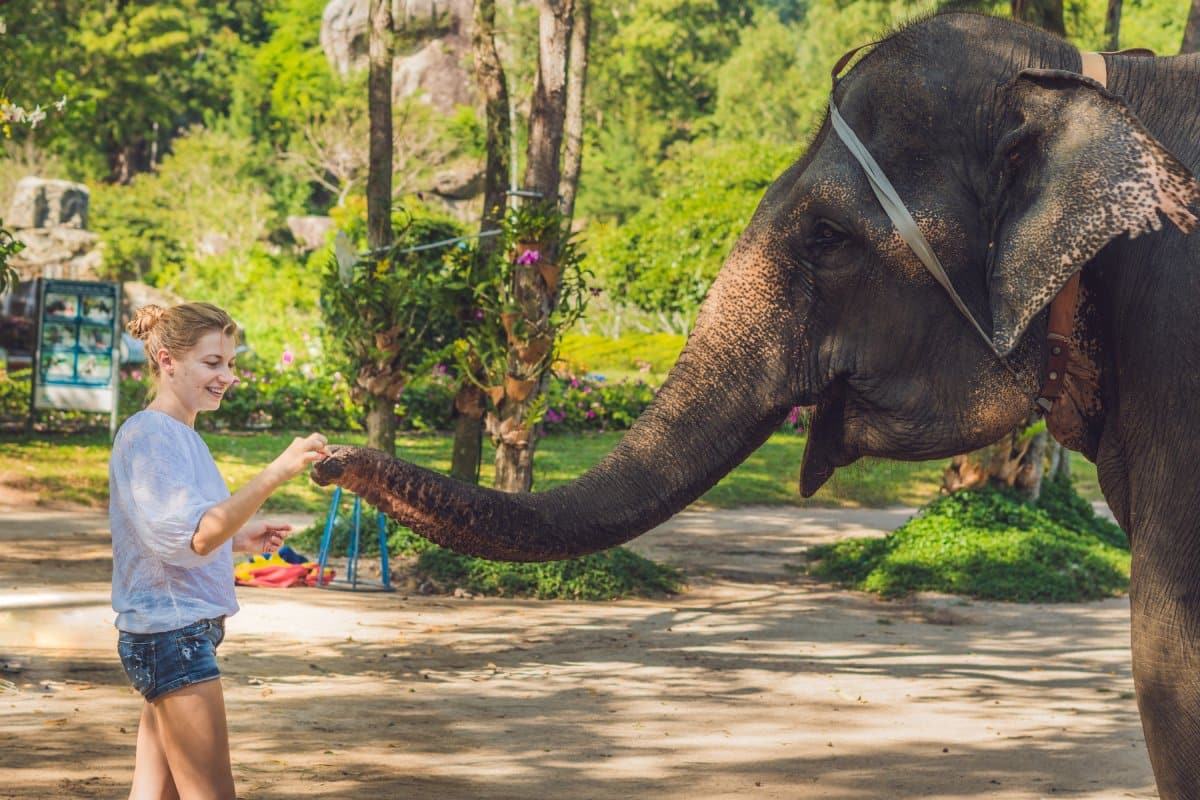
Travel today transcends traditional sightseeing, evolving into a more immersive and impactful experience. Community-based tourism projects offer a unique opportunity to engage with local communities, understand their culture, and contribute positively to their development.
This guide explores various destinations where you can participate in and support these initiatives. From helping with conservation efforts in Africa to learning traditional crafts in Southeast Asia, each project allows you to connect deeply with local cultures while supporting sustainable tourism practices.
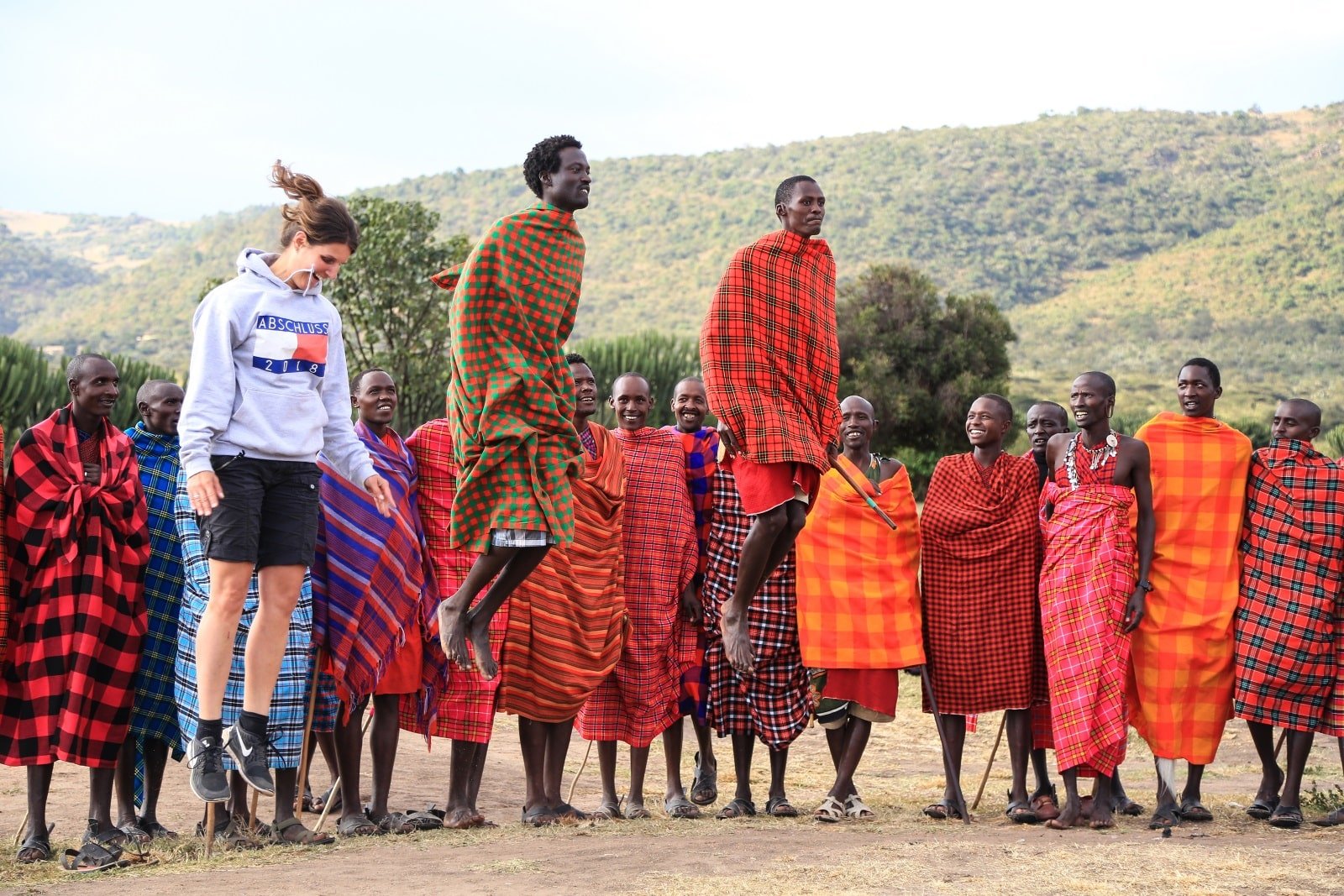
1. Conservation Efforts in Kenya
In Kenya, community-based tourism takes a front seat in wildlife conservation efforts. Projects like the Maasai Mara Wildlife Conservancies involve local communities in protecting the region’s iconic wildlife. As a visitor, you can participate in guided safaris led by local Maasai guides who share their in-depth knowledge of the ecosystem.
Your visit contributes to the conservancies’ efforts to protect species like lions, elephants, and rhinos. Additionally, many of these projects offer cultural experiences, such as village visits and traditional dance performances, providing a holistic understanding of the Maasai community’s way of life.
Insider’s Tip: Opt for lodges or camps that are part of the conservancy program, ensuring your stay directly benefits local conservation efforts.
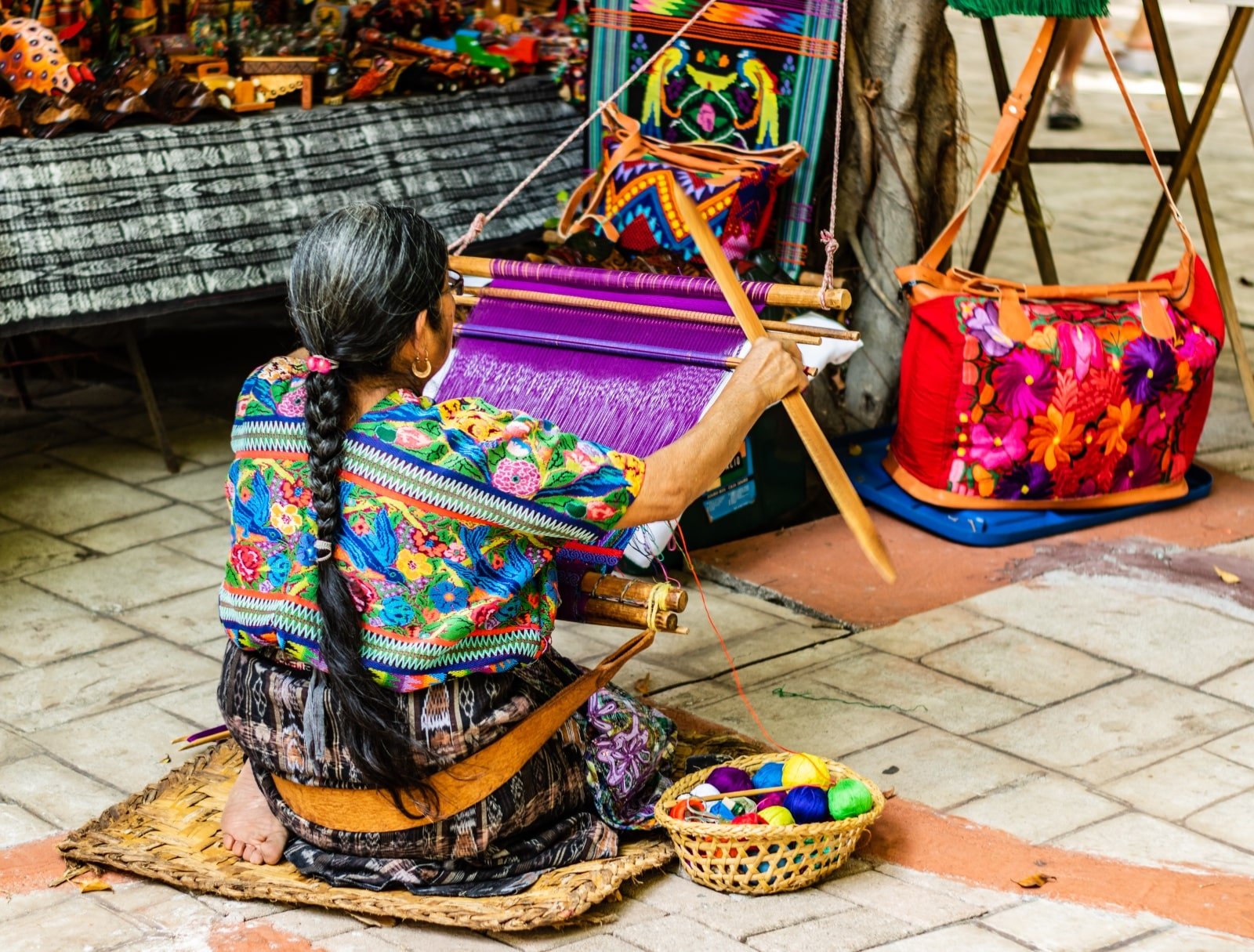
2. Traditional Weaving in Guatemala
Guatemala has many community-based tourism projects focus on preserving traditional arts and crafts. Towns like San Juan La Laguna on Lake Atitlán are known for their textile cooperatives. Here, you can learn about the art of weaving from local artisans, understanding the significance of their traditional techniques and patterns.
Participating in these workshops provides you with a unique souvenir and supports the artisans and their craft. These cooperatives often use natural dyes and sustainable practices, making your participation a support for eco-friendly initiatives.
Insider’s Tip: Engage with the artisans, ask questions about their craft, and purchase directly from them to ensure they receive fair compensation.
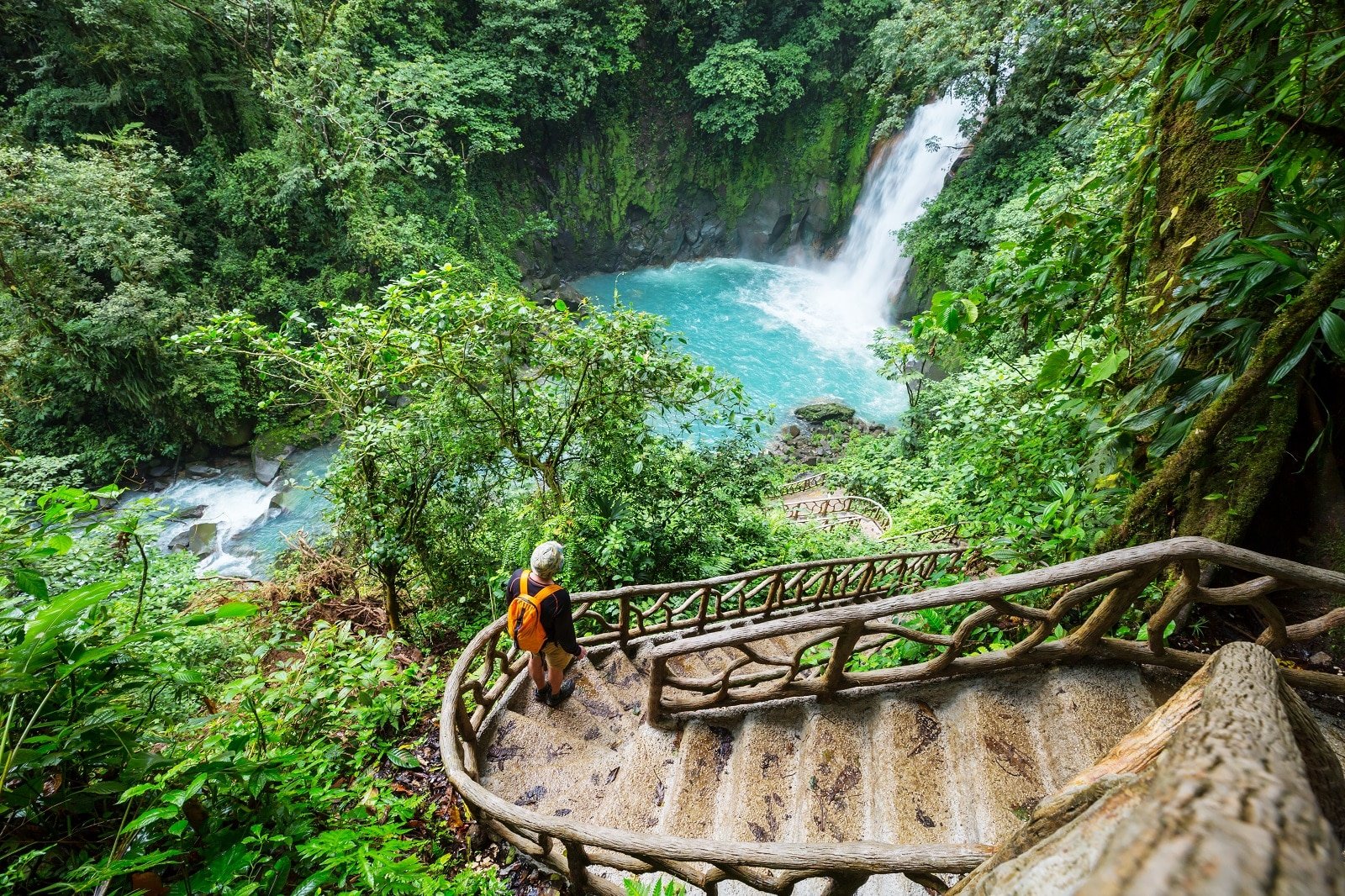
3. Eco-Tourism
Costa Rica, a pioneer in eco-tourism, offers a plethora of community-based tourism projects that focus on environmental sustainability. In areas like Monteverde and Tortuguero, local communities are deeply involved in preserving their unique ecosystems. You can participate in guided rainforest hikes, wildlife spotting tours, and even sea turtle conservation programs.
These experiences are led by local guides who provide invaluable insights into the biodiversity and conservation efforts of the region. Your participation in these tours enhances your understanding of environmental conservation and directly contributes to the livelihoods of local families and the protection of natural habitats.
Insider’s Tip: Choose tours and accommodations that are certified by the Costa Rican Tourism Board for their sustainability practices.
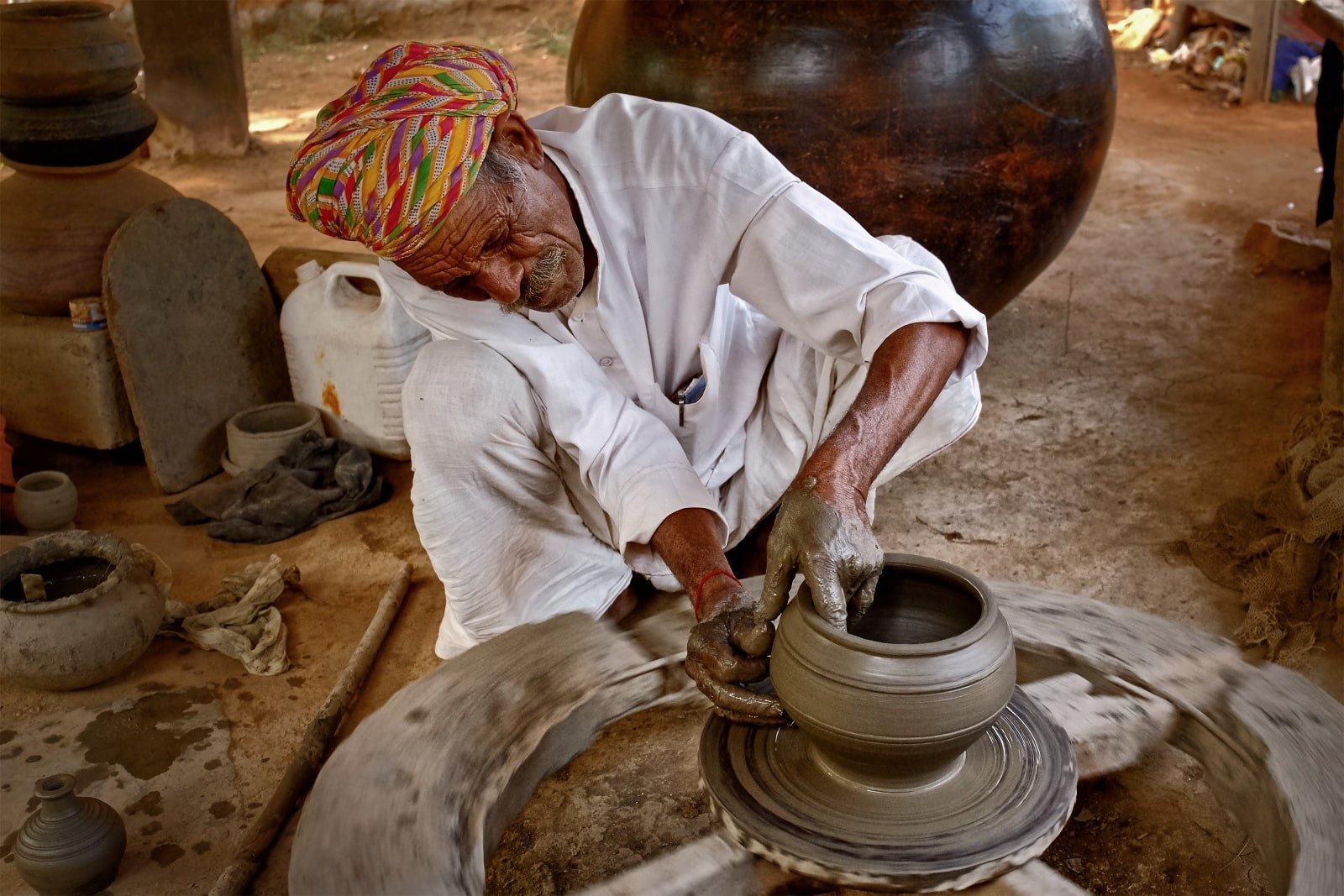
4. Cultural Immersion in Rajasthan, India
Rajasthan, India, offers a rich tapestry of community-based tourism experiences that allow for deep cultural immersion. Projects in villages like Chandelao and Barli enable visitors to experience the rural lifestyle of Rajasthan. You can participate in activities like cooking classes, traditional craft workshops, and village walks.
The locals curate these experiences, offering an authentic glimpse into their daily lives and traditions. By engaging with these communities, you enrich your travel experience and contribute to the local economy and the preservation of cultural heritage.
Insider’s Tip: Respect local customs and dress modestly during village tours and home visits.

5. Agro-Tourism in Tuscany, Italy
In Tuscany, Italy, agro-tourism is a growing trend where travelers can participate in sustainable farming practices. Local farms offer experiences like grape harvesting, olive picking, and cheese making. These activities provide an insight into the region’s traditional farming methods and food production.
Staying at a farm or agriturismo allows you to enjoy fresh, locally sourced food while supporting the local agricultural community. This form of tourism connects you with the land and its produce and promotes sustainable agricultural practices.
Insider’s Tip: Plan your visit during harvest seasons to participate in picking grapes or olives.
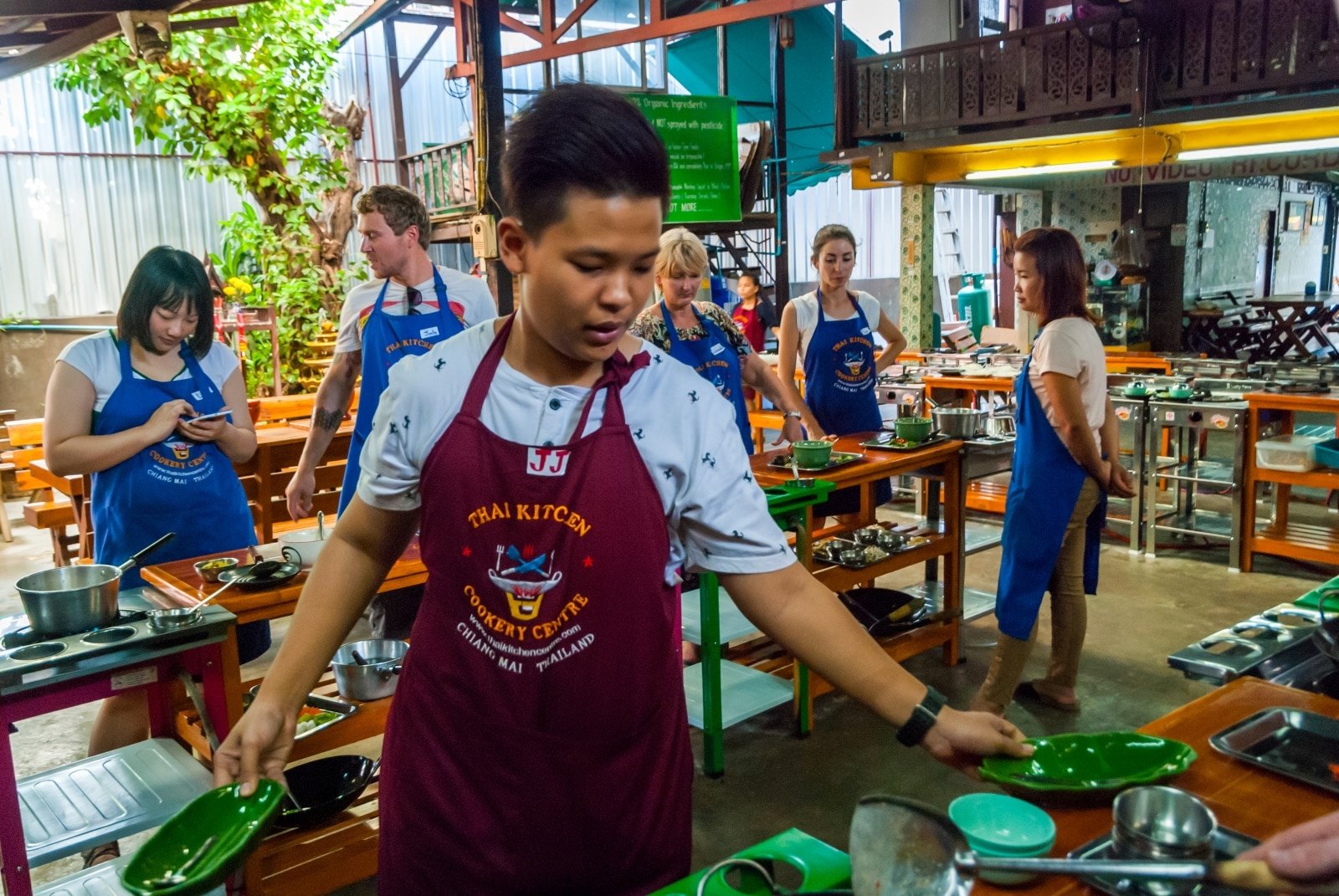
6. Community-Based Tourism in Thailand
Thailand offers a range of community-based tourism projects, particularly in the northern regions. Villages like Mae Kampong in Chiang Mai province specialize in eco-friendly tourism and cultural experiences. Visitors can engage in activities like Thai cooking classes, bamboo rafting, and learning about local tea production.
Staying in homestays and participating in daily village life allows for a genuine connection with the local community and supports their sustainable tourism initiatives.
Insider’s Tip: Learn a few phrases in Thai to communicate with your hosts and show respect for their culture.
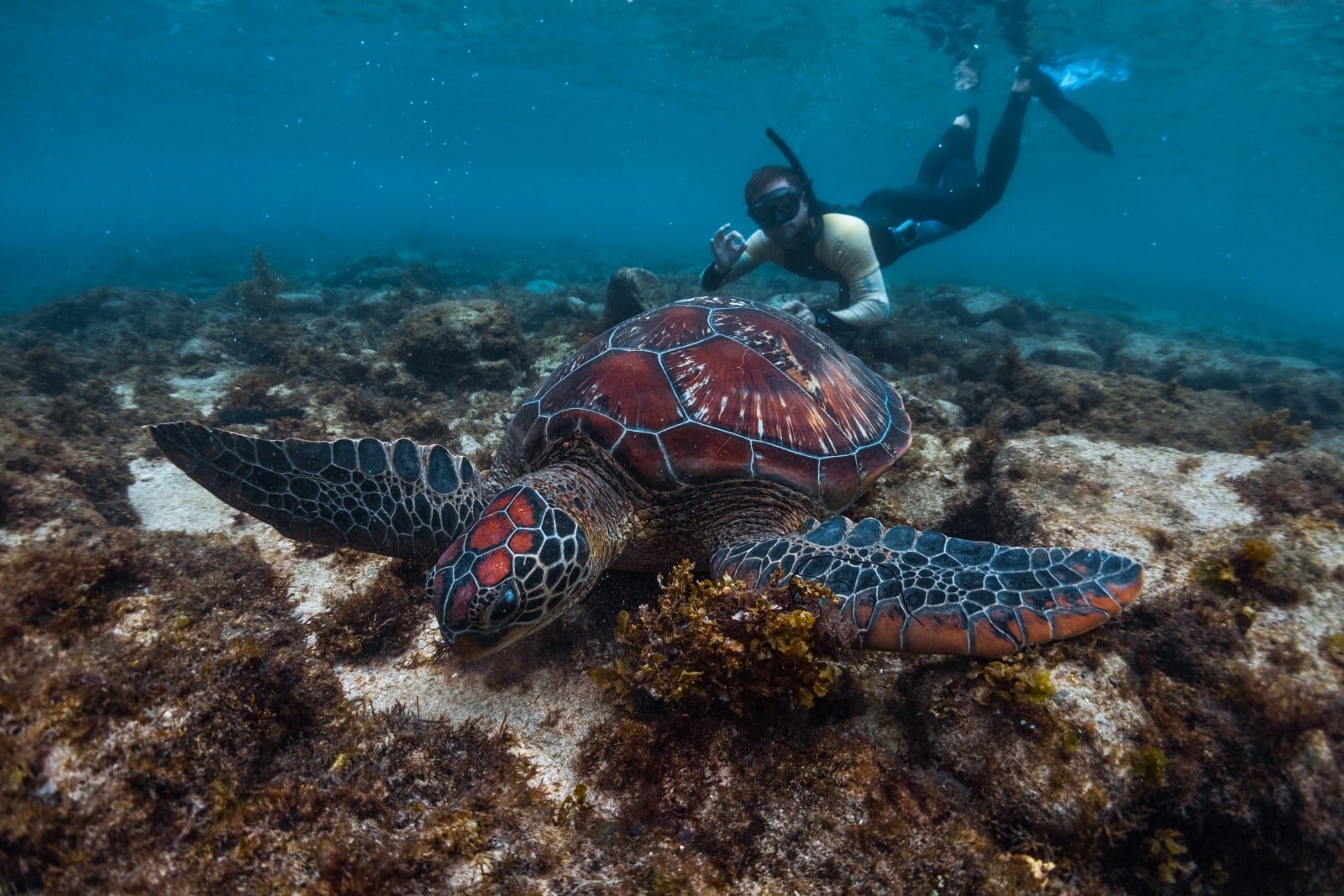
7. Supporting Marine Conservation in the Philippines
With its rich marine biodiversity, the Philippines has several community-based tourism projects focused on marine conservation. In places like Apo Island, you can participate in snorkeling and diving tours that are managed by the local community.
These tours offer spectacular underwater experiences and educate visitors about marine conservation and the importance of protecting coral reefs. Your participation in these activities support the local economy and funds conservation efforts, ensuring the preservation of these vital ecosystems for future generations.
Insider’s Tip: Always follow the guidelines provided by local guides to minimize your impact on the marine environment.

8. Participating in Wildlife Conservation in Botswana
Botswana’s approach to wildlife tourism involves local communities in conservation and tourism management. Projects like the Okavango Community Trust offer opportunities to engage in wildlife monitoring and sustainable tourism practices. Visitors can join guided wildlife safaris, bird-watching excursions, and cultural tours, all led by local community members.
This provides an authentic wildlife experience and ensures that tourism’s benefits are shared with the local communities, contributing to wildlife conservation and community development.
Insider’s Tip: Opt for accommodations and tours that are part of community trusts or conservancies.

9. Engaging in Community Projects in Peru
Peru offers unique community-based tourism experiences, particularly in the Andean regions. Projects in communities like the Sacred Valley involve locals in tourism, offering homestays, agricultural experiences, and cultural exchanges.
Participating in these projects allows you to learn about Andean culture, traditions, and sustainable living practices. Your involvement supports the preservation of local culture and provides economic benefits to the community.
Insider’s Tip: Show appreciation for your hosts’ hospitality and participate actively in daily activities to gain the most from your experience.
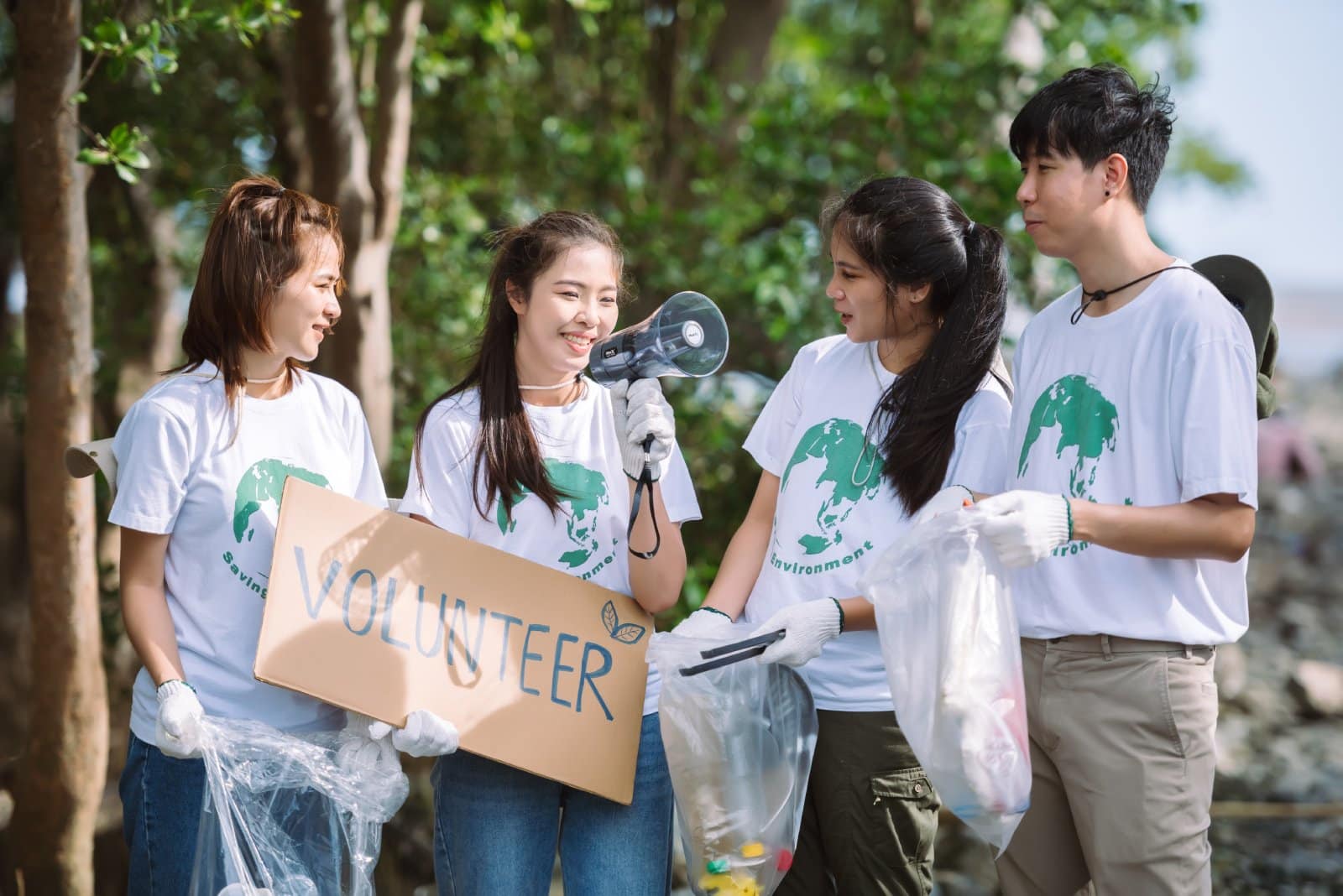
10. Volunteering in Community Initiatives Worldwide
Many destinations around the world offer volunteering opportunities in community-based projects. These can range from teaching English in schools to participating in environmental clean-ups. Volunteering allows you to contribute your skills and time to meaningful causes while immersing yourself in the local culture.
Insider’s Tip: Choose ethical volunteering projects that have a clear positive impact on the community.
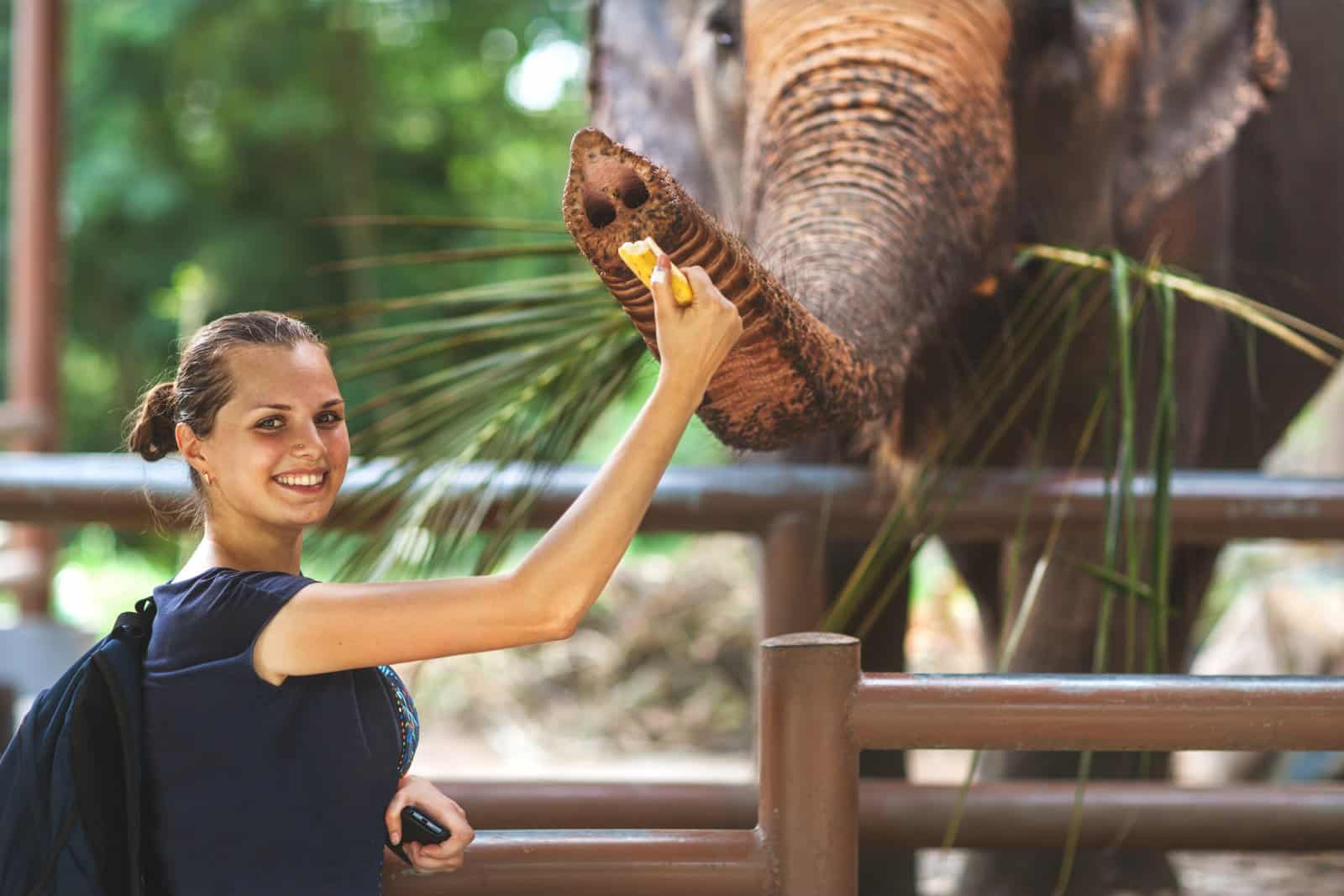
The Bottom Line
As you embark on your journey of community-based tourism, remember that your travel choices can have a significant impact. By participating in and supporting these projects, you’re not just a tourist but a contributor to sustainable development and cultural preservation.
Embrace these experiences with an open heart and mind, and you’ll find that the most rewarding travels are those that connect you deeply with the world and its diverse communities.
The post Community Connection: 10 Inspiring Journeys Through Community-Based Tourism Projects in 2024 first appeared on Hello Positive Mindset .
Featured Image Credit: Shutterstock / Elizaveta Galitckaia.
More for You
Harvard psychologist shares 5 toxic things 'highly narcissistic' people always do in relationships
3 lies women have been told about their bodies, according to a female doctor
How Do I Know If My Dog Is Happy? 12 Signs of a Happy Dog
Full List Of Republican Senators Who Voted Against Ukraine Aid
California Fast Food Chains Have Found a Way to Bypass Rising Minimum Wages—And It's Bad News for Staff
Patti Smith Comments on Taylor Swift Name Dropping Her in the Tortured Poets Department
A financial planner shares 3 pieces of money advice clients never want to hear
Fired umpire sues MLB, claims harassment, discrimination
Doctor shares what happens to our bodies moments before we die
Ocasio-Cortez Calls Fellow Democrat's Remarks On Sanders 'Shameful'
See what 25 legendary hip-hop artists look like now
3 new TV shows on Netflix and Max with perfect 100% Rotten Tomatoes scores
6 Things You Should Know If You Deposit More Than $100K Into a Savings Account
17 Animals You Can’t Keep as Pets in the US
'We will call him President Trump’: Defense lawyers vacillate between honorifics
You Are Too Old To Do These 12 Things After 55
I moved my family from California to Austin, Texas, and regretted it. Here are 10 things to consider before making an expensive mistake.
20 iconic one-hit wonders who became super successful in other jobs
The Box Office Just Endured One Of The Worst Weekends Of The Year So Far
Final NFL mock draft: Projecting every first-round pick
Cultural tourism


Cultural hubs showcasing Bohol heritage boost tourism and livelihood
Communities in Bohol have drawn inspiration from their history and cultural heritage to develop creative hubs designed to promote sustainable tourism, create livelihood and help local residents recover from the 2013 earthquake.
The towns of Loon, Maribojoc, Antequera and Baclayon were scenes of devastation after a 7.2 intensity quake struck the island province in the morning of Oct. 15 four years ago, destroying roads, bridges and houses, and leaving centuries-old churches in ruin. More than 200 people lost their lives in the disaster.
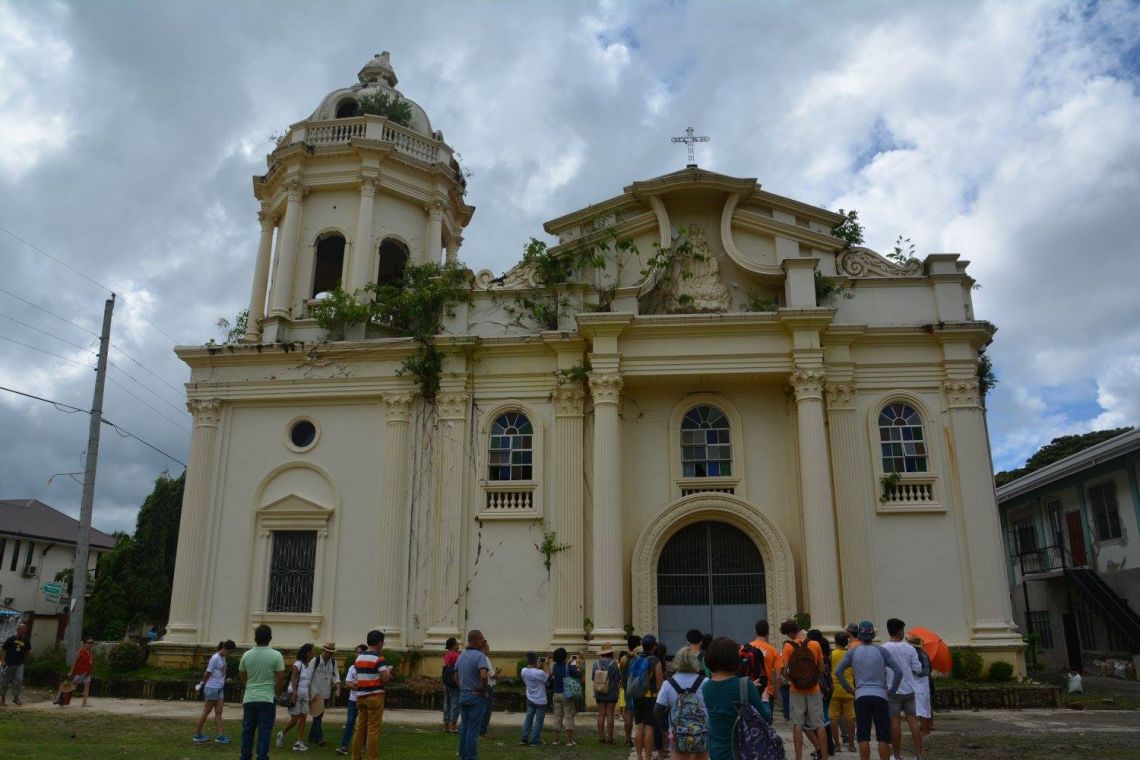
Antequera church facade with plants growing on cracks resulting from the 2013 earthquake. (Photo by Roy Llanes)
By the 3 rd quarter of 2017, these towns, along with three others (Cortes, Balilihan, and Tagbilaran), were throbbing with cultural activity as the initial test run of the heritage-based creative hubs was underway. This drew raves from guests owing to their uniqueness, passion-filled delivery and authenticity.
The test runs concluded a series of arts-based workshops, heritage camp, lectures, and planning sessions held during the first year of the Bol-anong Kabilin, Atong Gibahandi (BOKAG) program involving cultural workers, artists, tourism officers, educators, youth, and adult leaders from seven Bohol towns.
The various activities aimed to help participants rediscover and use their talents and heritage in designing their own creative hubs, said Lutgardo Labad, BOKAG art director.
BOKAG is a two-year program administered by PROCESS BOHOL, with artistic guidance from Kasing Sining, and support from the National Commission for Culture and the Arts (NCCA), the Bohol provincial government, and local governments of the seven participating towns. PROCESS is the Participatory Research, Organization of Communities and Education towards Struggle for Self-Reliance in Bohol.
Derived from the open indigenous woven basket used for storing and exchanging of farm products in Bohol, “bokag” symbolizes the islanders’ sturdiness, resourcefulness, craftsmanship and resilience, according to Emmie Roslinda, PROCESS executive director. The BOKAG program is part of efforts to find an inclusive development approach that is heritage and community-based which draws the benefits of tourism to the communities, thus sustaining recovery, she added.
Through fun games that made community stakeholders identify unique sites, history, food, dances, beliefs, and crafts in their municipality, the participants came up with a cultural and natural heritage map that became the basis of the design of a hub that reflected the special character of each town.
From such workshops, they were introduced to “the significance and range of local culture heritage as basis for the development of a viable creative industry” in their area, Labad further said.
Cultural historian Marianito Luspo stressed that each town’s history is unique and reflective of Bohol’s glorious past and is an important component in designing and planning heritage-based creative hubs.
Within the 3 rd quarter of 2017, each BOKAG cultural team from the towns of Loon, Maribojoc, Antequera, Baclayon, Cortes, Balilihan and Tagbilaran piloted a creative hub unique to the cultural experience of the area.
Antequera town’s “Tan-aw sa Kanhiay, Lantaw sa Kinaiyahan” (Viewing Tradition, Experiencing Nature) cultural hub presented what it called “nature and babaylanic tourism,” one that focuses on nature healing, wellness and organic products.
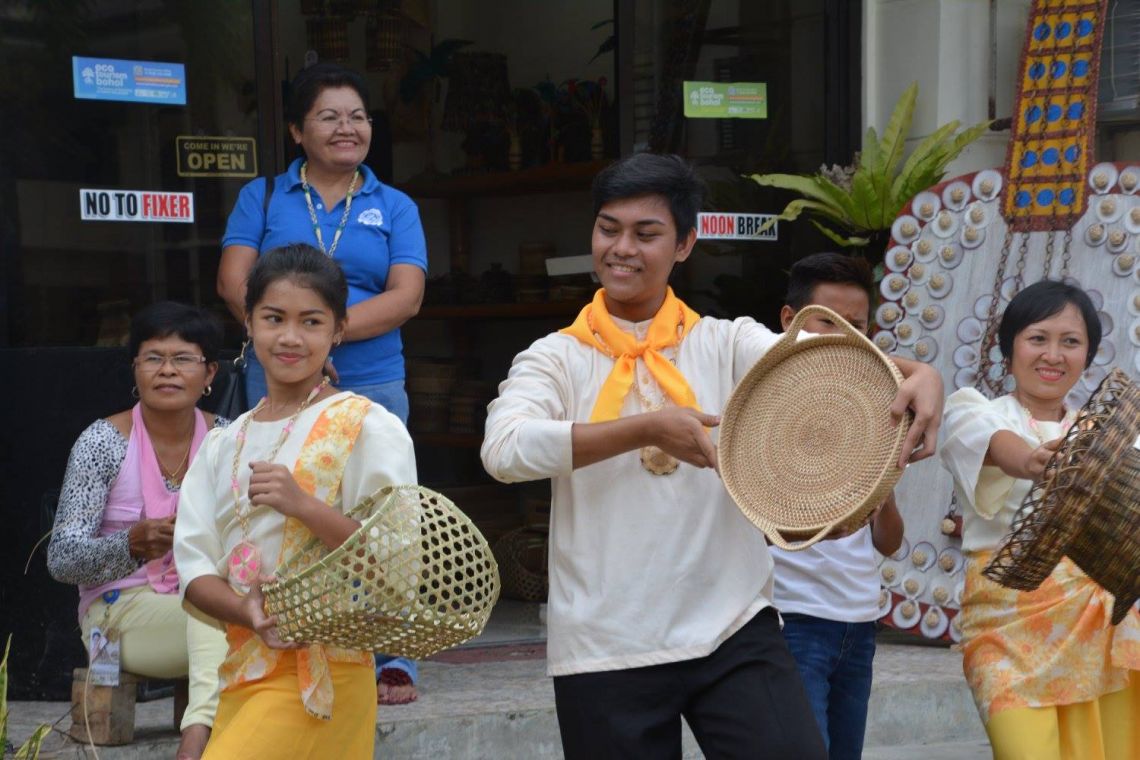
Antequera hub shows its baskets through a dance. (Photo by Roy Llanes)
First, the hub showed the various weaves used in basketry the town is famous for — through dance and in actual demonstration. It then led visitors to the Inambacan Waterfall/Cave and made them “feel” the cool environment through its greenery and the lively singing of the Antequera Cultural Collective.
Some visitors experienced natural healing and wellness practices, like the traditional massage passed on by the local hero Tamblot, a medicine man (babaylan) adept in the use of healing herbs.
“We want to highlight Tamblot society’s healing, wellness features and in the process share the way of life of the historic leader, and encourage descendants and visitors to adopt a sustainable, healthy, and calming lifestyle,” Antequera tourism officer Lorna Cabrisante Jadulco explained.
Maribojoc’s farm-based cultural hub, “Sandurot sa Kaumahan” (Fellowship in the Farm) in barangay Busao gave tribute to the farmers by making visitors experience life in a traditional rice farming village.
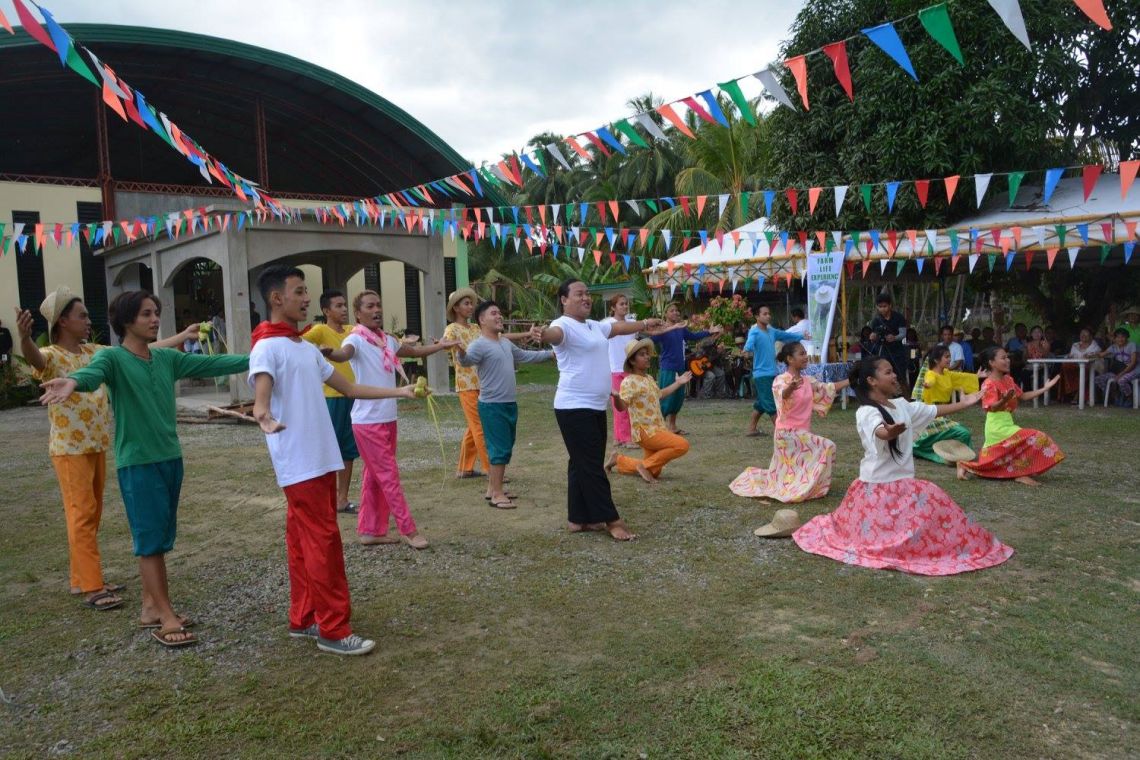
Welcome dance at Maribojoc’s farm-based hub. (Photo by Roy Llanes)
Guests were shown ancestral ways of processing rice grain before it is cooked and served on the table: from pounding in a pestle, winnowing and “alig-ig” (separation of unpounded rice). Others patiently tried to learn the making of the “puso” (woven palm rice container), while some watched how nipa is attached to a bamboo for use as roofing.
The creative products area displayed banana and cassava chips, and products of students of heritage restoration Escuela Taller, like carved wood and stone, and other organic-based crafts and décor.
Various cultural groups from Maribojoc then presented traditional songs and dances, like curacha mayor and “kulijit,” accompanied by a six-man rondalla. A “basaw” beat using a bamboo instrument concluded the hub’s activities as a way of thanking the village and farmers’ patron San Isidro Labrador.
Loon’s hub “Tikang sa Pagmugna” (Stairway to Creativity) provided visitors with an experience of the lively performance traditions of Loon and the town’s high regard for creativity, artistry and resilience.
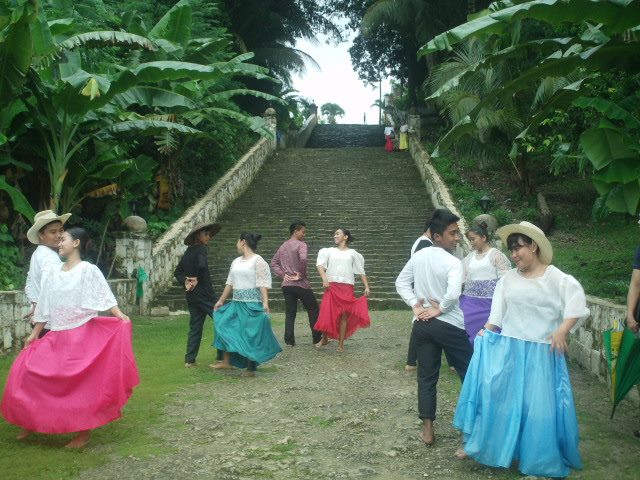
Youth dance on the Inang angan or Heritage Stairway in Loon Cultural Hub. (Photo by Cooper Resabal)
Visitors took part in a tour of a unique plaza and the ruins of the Church of Our Lady of Light. They then went on a coastal journey through a 212-step stairway that led guests to local theater, poetry, painting and dance lessons, and a burst of wild dancing of kuradang!
After joining the kuradang dancers, the visitors went to the “uplifted shores” of Napo village and were met there by the local fisherfolks who demonstrated how they fix their nets, and later sang along with guests some local ditties.
The 2013 earthquake raised the shores of Napo by 1.5 meters and dried up a large portion of the coastal area where corals and shellfish used to abound, reducing the area for shellfish gathering, a supplemental income source for the community.
Baclayon’s” Karaang Balay ug Tabo sa Baluarte” (Ancestral House and Market at the Lighthouse) hub opened with a harana and a musical treat from child-musicians at the Malon ancestral house followed with a snack of sikwate (chocolate drink) and broas, and other delicacies.
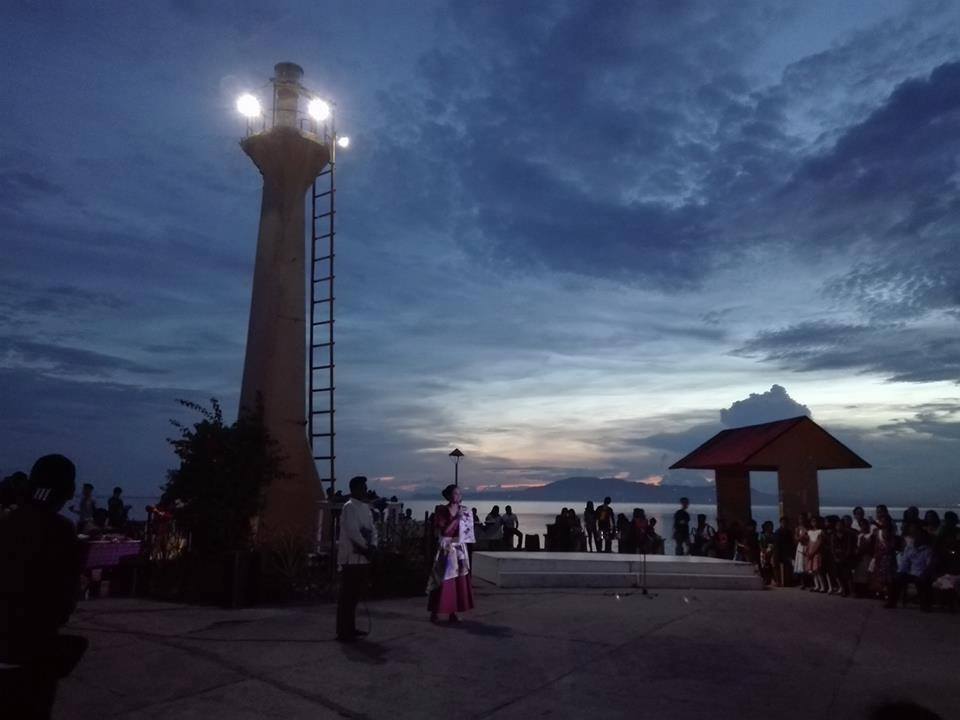
At the Baclayon town hub’s baluarte. (Photo by Jerrey Aguilar)
A short performance of the “Rico-Rico” tradition of Baclayon started with a singing of the traditional daygon (carol) at the foot of the staircase of the well preserved karaang balay (ancestral house), followed by the “angry” retort of the “tagbalay nga palaran” (wealthy house-owner).
Visitors were then led to the Baluarte where they saw a display of the residents’ livelihood in a traditional market that ended in a culinary and audio-visual feast, and vigorous dancing of kuradang.
Cortes’ hub “Tabo sa Cortes: Kabilin ni Wadji” (Cortes Market: Wadji’s Heritage) showcased an Asian-inspired semi-floating market where the traditional barter of goods and products was demonstrated, and actual sale of products carried out.
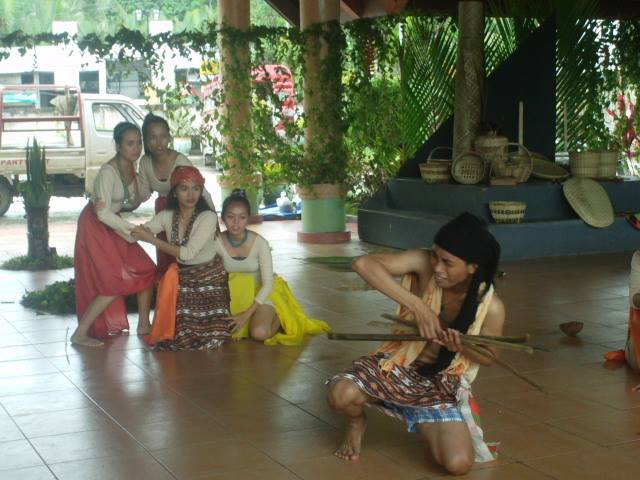
A scene in Cortes hubs play narrative on Wadji. (Photo by Cooper Resabal)
The site could become a future venue for fisher folks to sell their produce, and could enhance the promotion of local goods, like baskets, mats, fruits and marine and riverine products, Cortes’ Cultural Committee head explained.
The visitors then got into sampans, met and talked with a nipa leaf gatherer, a crab-catcher, a fisherman and a shellfish and clam gatherer while moving along Abatan River.
This is where they “witnessed” a costumed Wadji and some warriors releasing arrows on their bows pursuing raiders on another boat along the river. Upon arrival at the port, a group of women welcomed the visitors with a shower of flower petals.
The Cortes youth then presented a magic-realist narration of the pre-Hispanic leader Wadji’s story in the form of dance and martial arts movements accompanied by indigenous music/sound showing her as a symbol of leadership, particularly of women power.
In the audience were 22nd generation descendants of Wadji, Dutch nationals, tour guides, bloggers and some government officials. The audience and cultural workers then partook of seafood, fruits and other natural food in the time of Wadji, like coconuts, camote, rice cakes, bananas, etc.
Balilihan’s hub “Asoy sa Pagbangon” (Rising from the Ashes Story) portrayed the historical development of Balilihan from its original barter trading by the river, through the double crises of forced migration and colonial invasion resulting in the tragic burning of the entire town, climaxing to its rise from the ashes with the re-establishment of a vibrant town reflected in local industries.
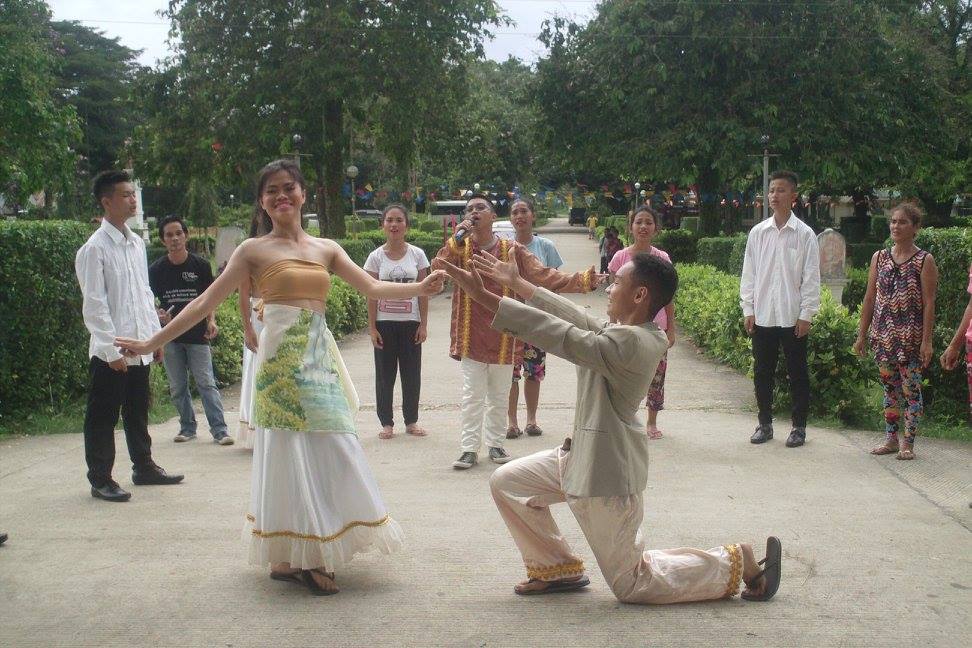
Rise of Balilihan town depicted in dance. (Photo by Cooper Resabal)
The hub took visitors to a pre-Hispanic spring near the park where diwatas (fairies) mingled with mortals, like lavanderas and farmers, who engaged in barter trade, then to a stage in the nearby plaza representing a place where residents experienced pain and healing– the “balay sa iring.”
The Balilihan youth gave a spirited re-enactment of the destruction of the town by American forces in 1900, and the march to development that followed, which was expressed through a dance interpretation of the Balilihan hymn. Guests were later escorted to the heritage church to view the famous paintings on its ceiling.
Balilihan Mayor Pureza Chatto then led visitors to partake of the town’s delicacies at the Hardin sa Balilihan Cafe where local products, like squash noodles, cassava chips and various crafts in nito vine were on display.
Tagbilaran’s pilot hub, “Balik sa Kagahapon” (Blast from the Past) made visitors experience a historical journey with the Tagbilaranons as they were taken to heritage sites from the Spanish colonial era, the American years, the Japanese occupation during World War II through a guided tour of historic houses and structures, combined with tableaus of events that took place in some heritage structures.
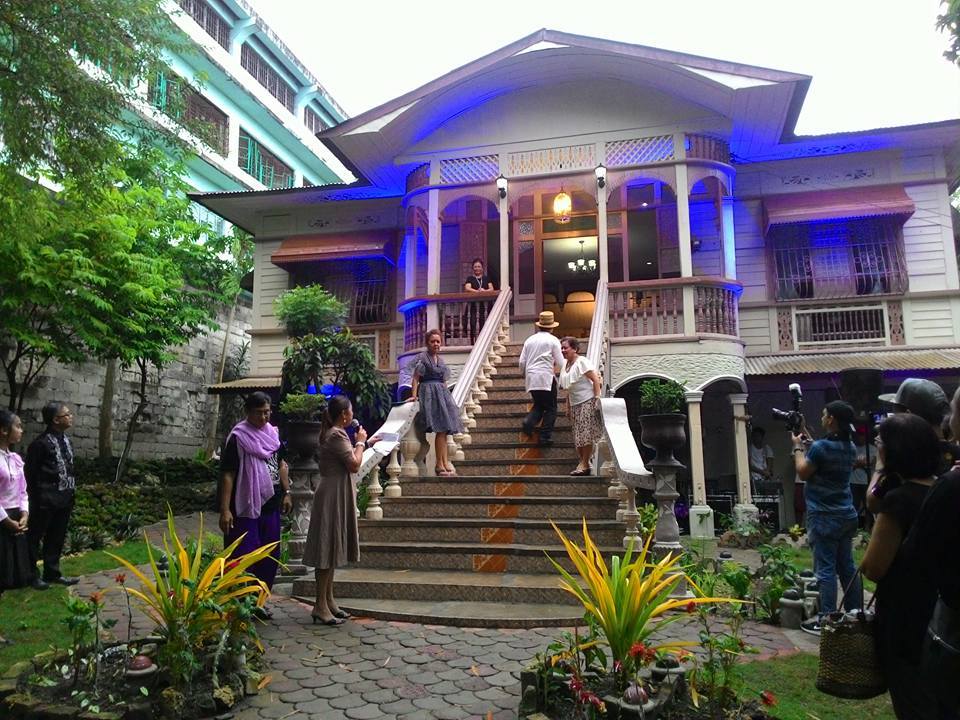
Balili heritage ancestral mansion in Tagbilaran’s cultural hub. (Photo by Shobel Lofranco)
They were then treated to a tertulia, a series of traditional Boholano cultural traditions, like balitaw and harana, choir and rondalla music, followed by dances at the Balili Heritage Mansion.
The seven cultural hubs soft-launched over the past several months are only previews of the final creative centers whose end goal is “to provide venues for community solidarity, protection of heritage, enhancing creativity and livelihoods among the communities, and effect sustained recovery,” explained Labad.
Read other interesting stories:
Click thumbnails to read related articles.
Click the magnifying glass icon top right, to search for more stories.
- Share on Facebook
- Share on Twitter
- Share on Reddit
- Save to your Google bookmark
- Save to Pocket

- What's On
- Boyne Valley Drive Sites
- Historic Trails
- Myths & Legends
- Things To Do
- Blueways & Greenways
- Places to Stay
- Food & Drink
- Discover Boyne Valley Flavours
- About Discover Boyne Valley
- Download a Brochure
- Tourist Information
- Getting Around
- Tour Organisers & Guides
- Itineraries
- Audio Guides
- Holiday Inspiration Blog
- Special Offers
- EN DE FR IT ES ZH
Kells Courthouse Tourism and Cultural Hub
Kells Courthouse Tourism and Cultural Hub Headfort Rd Kells, Co. Meath A82 RY62 (located opposite the Market Cross as one enters Kells from the Navan or Slane road)
Postal Address:
Kells Courthouse Tourism and Cultural Hub c/o Kells MD Offices Headfort Place Kells, Co. Meath
- Region: Kells ,
- +353 (0) 46 9247508
- [email protected]
The Courthouse was built in 1801 on the commission of Lord Headfort. It was designed by the prominent Irish architect, Francis Johnston who also designed the General Post Office, Nelson’s Pillar, Townley Hall and the East Gate entrance to Slane Castle. When first built the downstairs was used as a courthouse and upstairs for entertaining local residents. In more recent years it was a local library.
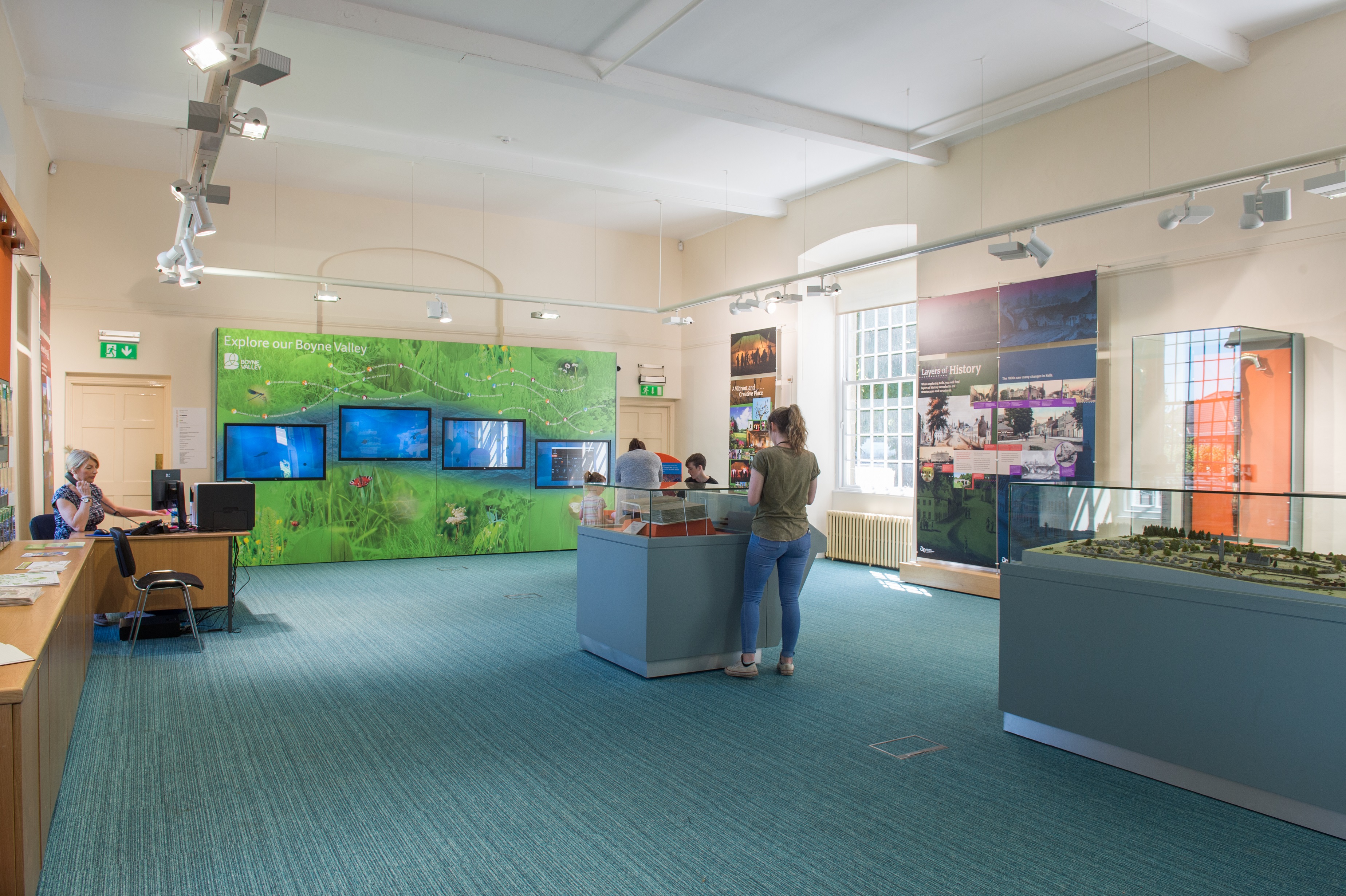
Today it has a much more modern interior with Interactive multimedia touch screens, with video engages to inspire visitors to the exhibition to explore Kells and the surrounding Boyne Valley. A facsimile copy of the Book of Kells, a replica of the Kells Crozier (an elaborately decorated staff that was a symbol of the office of a bishop or abbot), and the Kells town model are all on view and Boyne Valley Tourism staff are on hand to give advice.
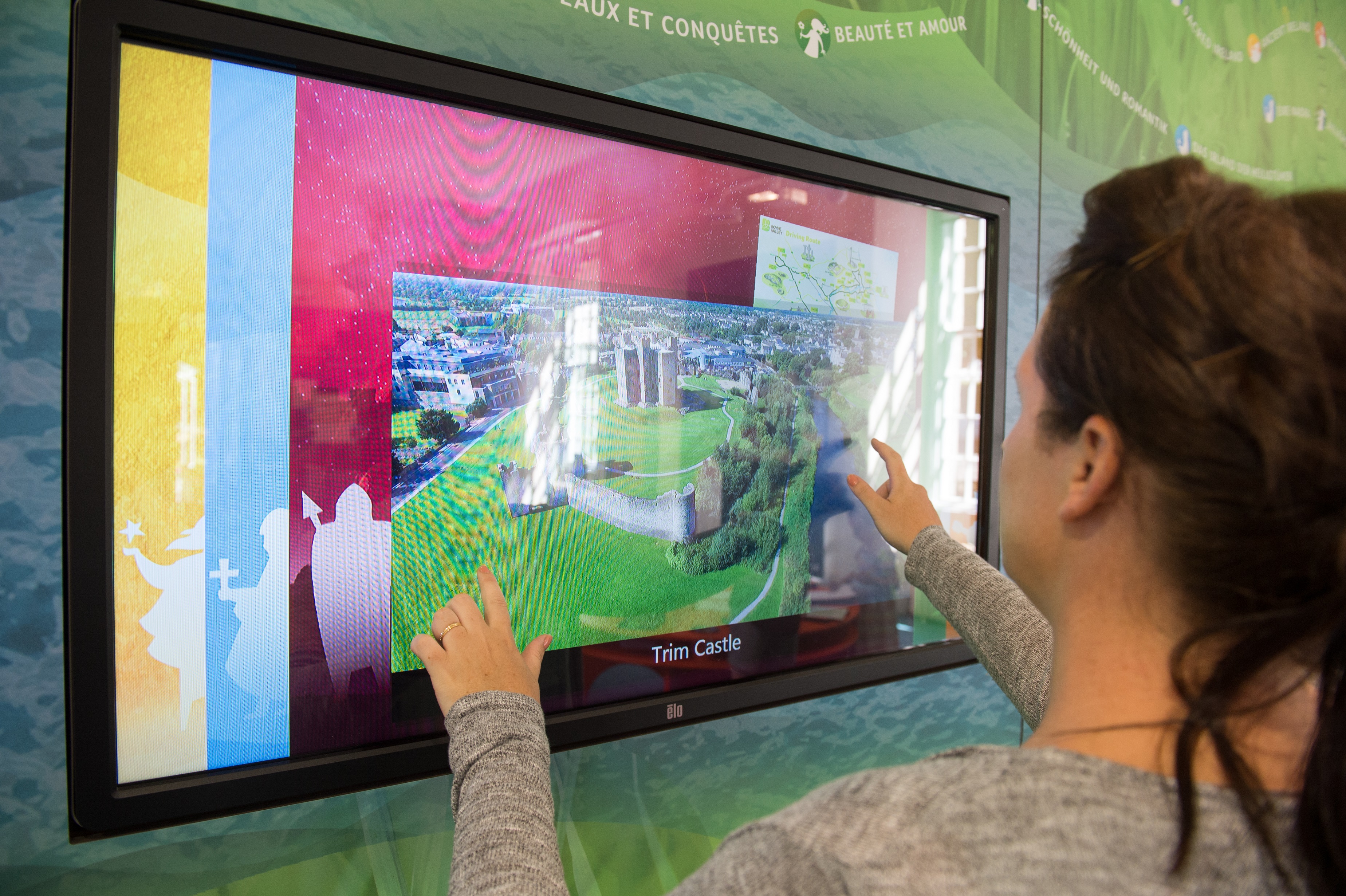
The exhibition is FREE to visit and fully accessible to wheelchair users. Drop in for free brochures, information and a friendly chat.
Also in the Courthouse is the Toradh 2 visual art gallery , which is free to visit and hosts varying exhibitions throughout the year.
Kells Courthouse Opening Hours
- Mon- Fri: 9:00am – 5:00pm (closed for lunch 1:30-2:00pm)
- Saturday: 9:00am – 4:00pm (closed for lunch 1:30-2:00pm)
Walking tours of Kells
Historic Walking Tours of Kells
Kells Walkabout Tours
St. Colmcilles House
St. Colmcilles House is also open for visitors, subject to availability (please contact the Courthouse beforehand to arrange a visit and give 24hrs notice)
School Groups
The Courthouse Tourism and Cultural Hub is happy to offer a visit to the Centre for both Primary and Secondary Schools. During the visit we give a talk on Christianity coming to Ireland and how St Colmcille founded the monastery in Kells. The Columban monks are responsible for the world famous Book of Kells and in the Centre we have a facsimile copy with touch screens displaying various pages from the book. The history of the town of Kells is brought up to modern day and how the town was developed focusing on the family of Lord Headfort. After the short talk the children are encouraged to look around the Centre before going on a walking tour to see all the historical sites. This includes the grounds of St Colmcille’s Monastery with it’s Round Tour and High Crosses. We finish the tour with a visit to St Colmcille’s House which was once a scriptorium where the Book of Kells was completed. The tour takes approx. 1 hour and 15 minutes. If you wish to book a tour email [email protected] or phone 046-9247508. We look forward to your visit.
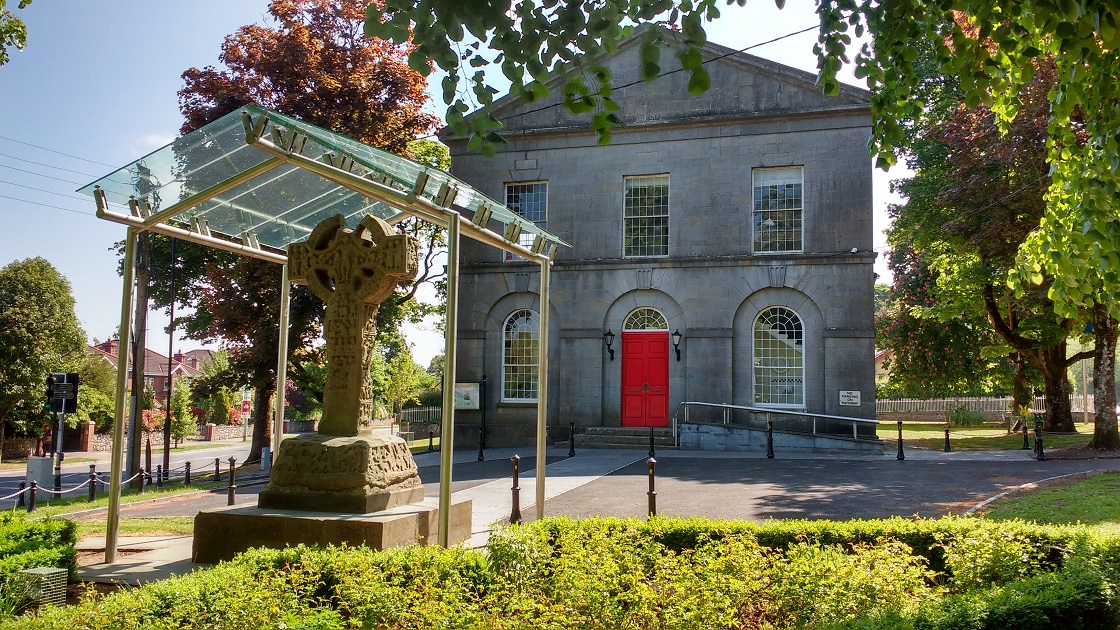
In this Area

Spa Rooms at the Headfort Arms Hotel Region: Kells
Spa & Leisure
Loughcrew Estate Region: Kells
Adventure Activities & Family Fun | Historic Gardens | Walking
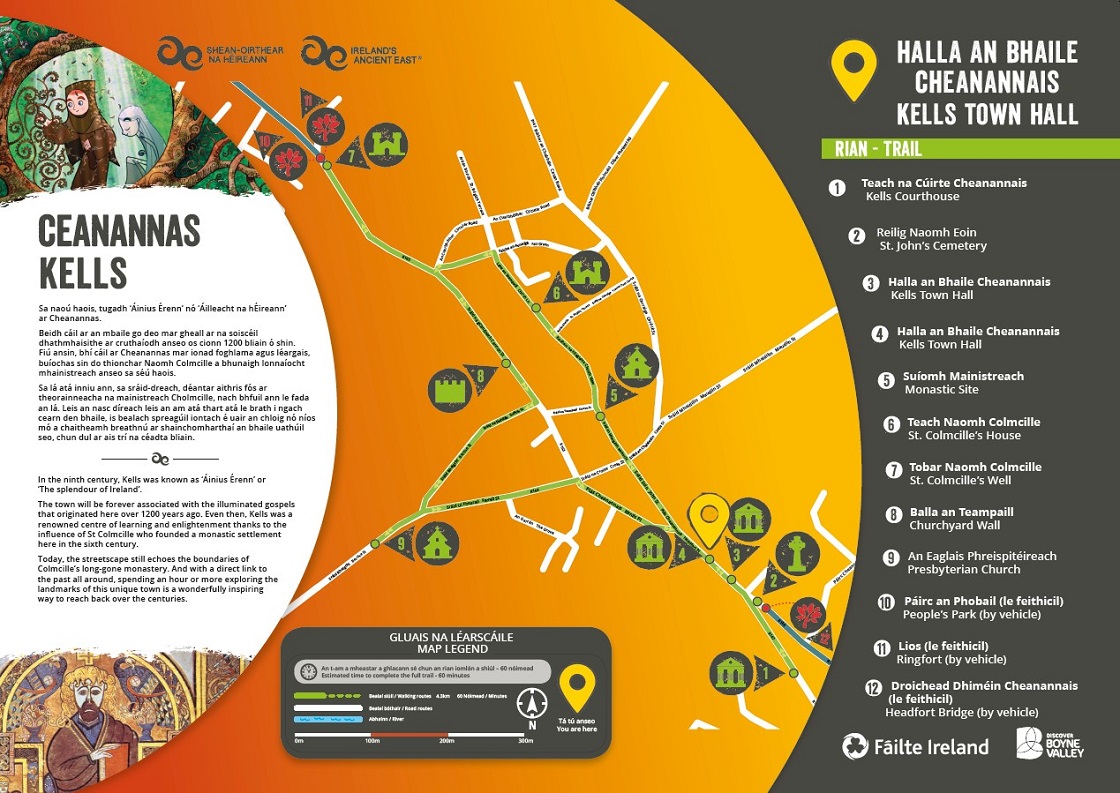
Kells Historic Trail Region: Kells
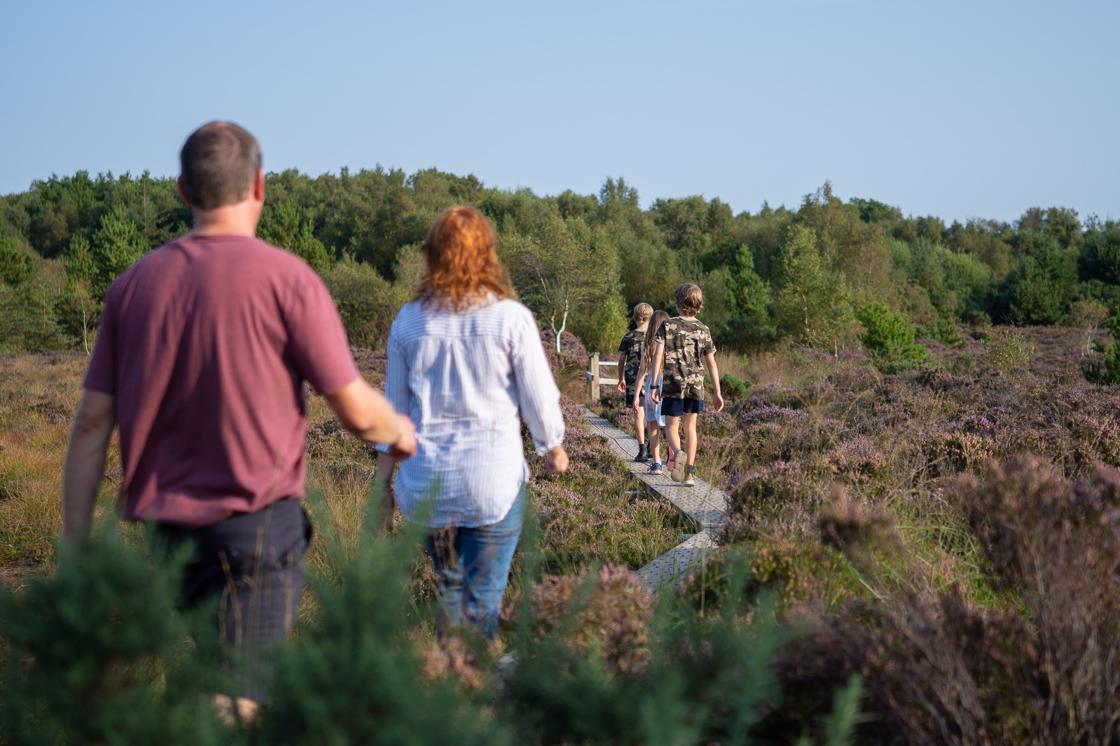
Girley Bog Eco Walk Region: Kells
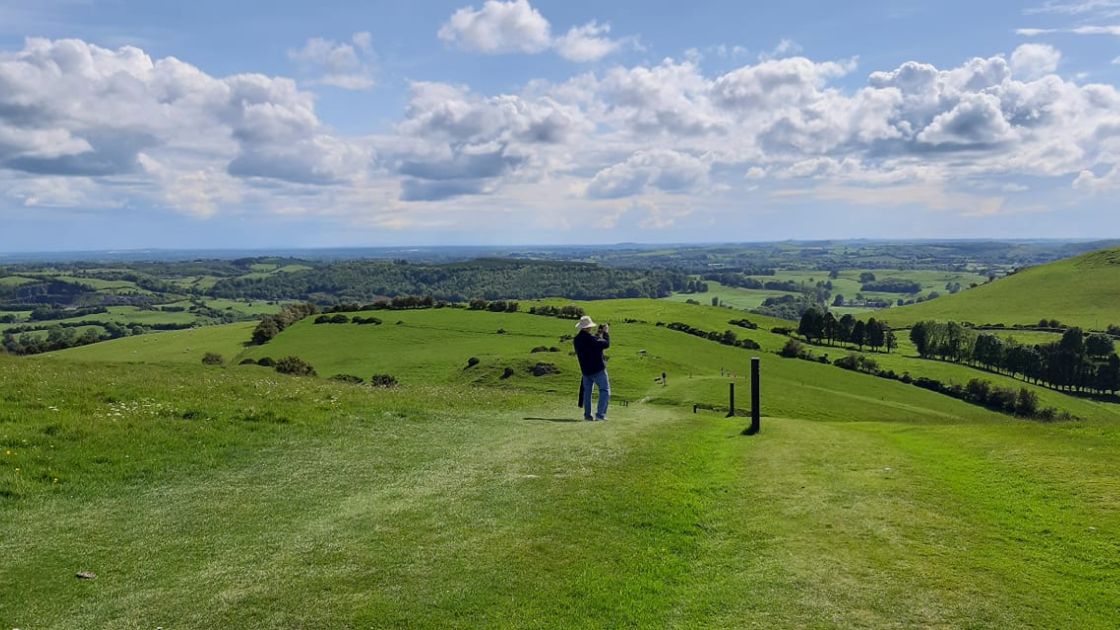
Hill Walking at Loughcrew Region: Kells

Headfort Golf Club Region: Kells
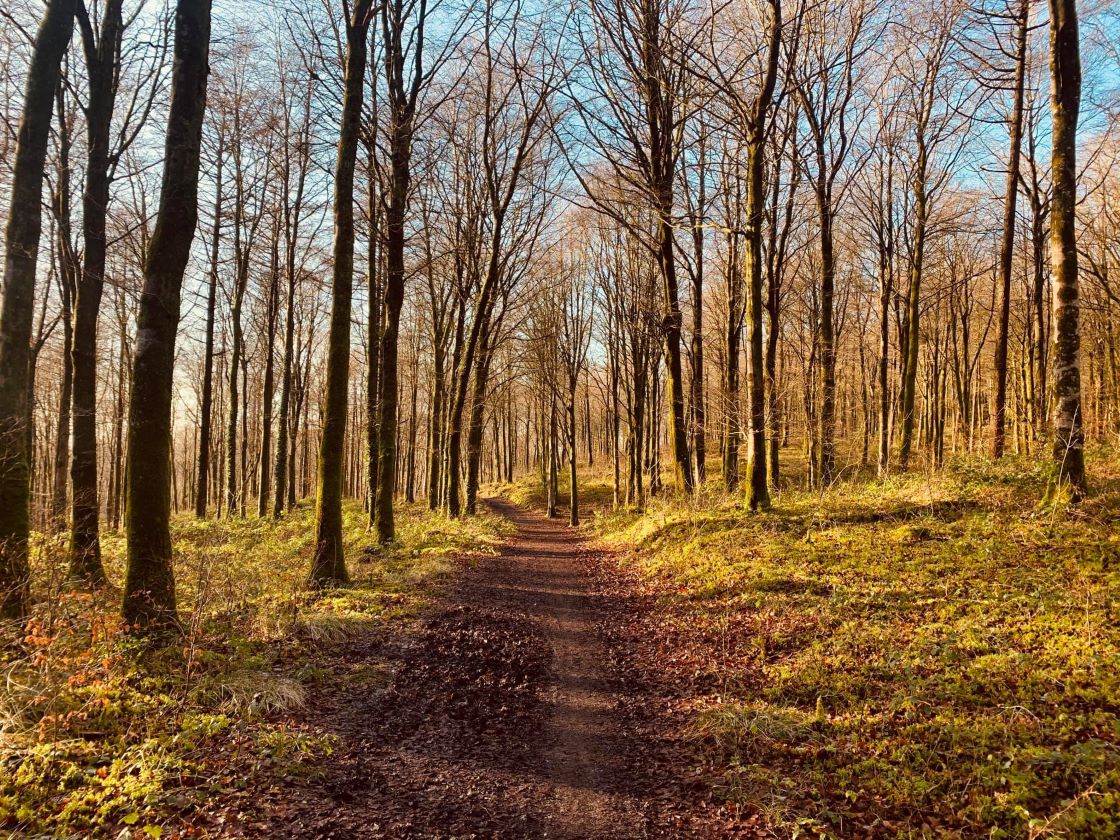
Forest Walk - Mullaghmeen Forest Region: Kells
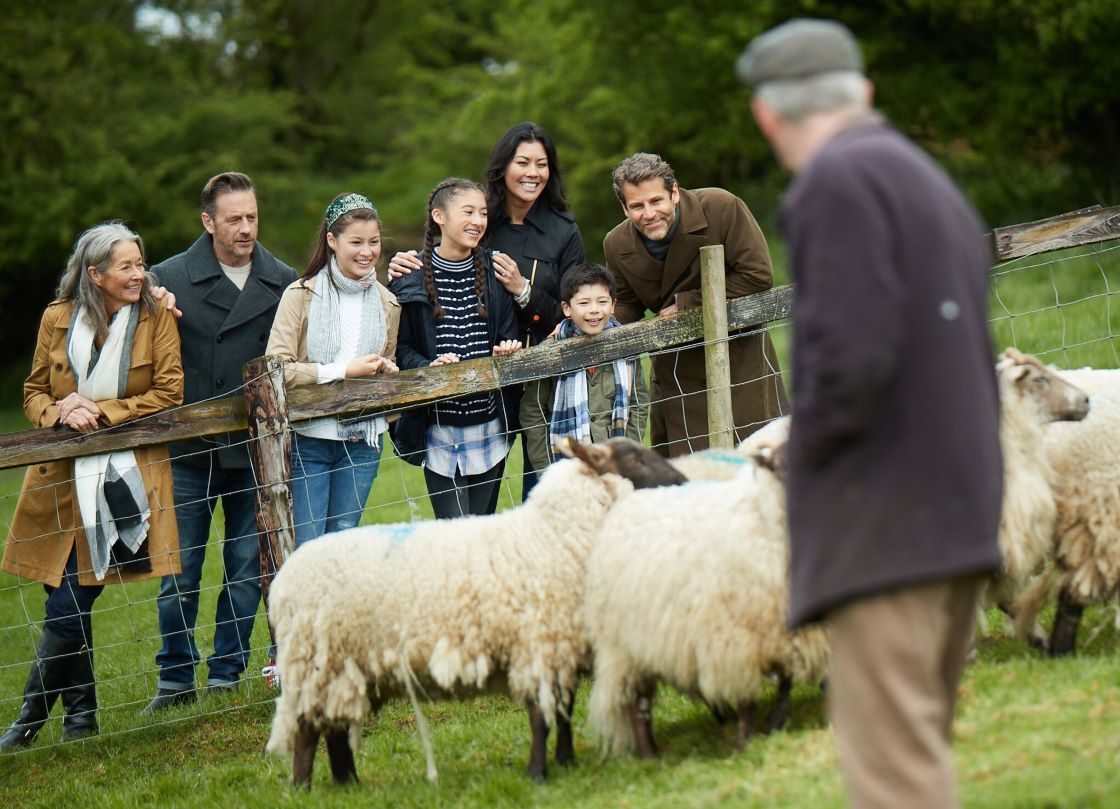
Causey Farm Region: Kells
Adventure Activities & Family Fun
Athboy Heritage Trail Region: Kells | Trim
Boyne Valley to Lakelands Greenway Region: Kells | Navan
Adventure Activities & Family Fun | Blueways & Greenways | Walking

Moynalty Steam Threshing Museum Region: Kells
Cultural Tourism Attractions
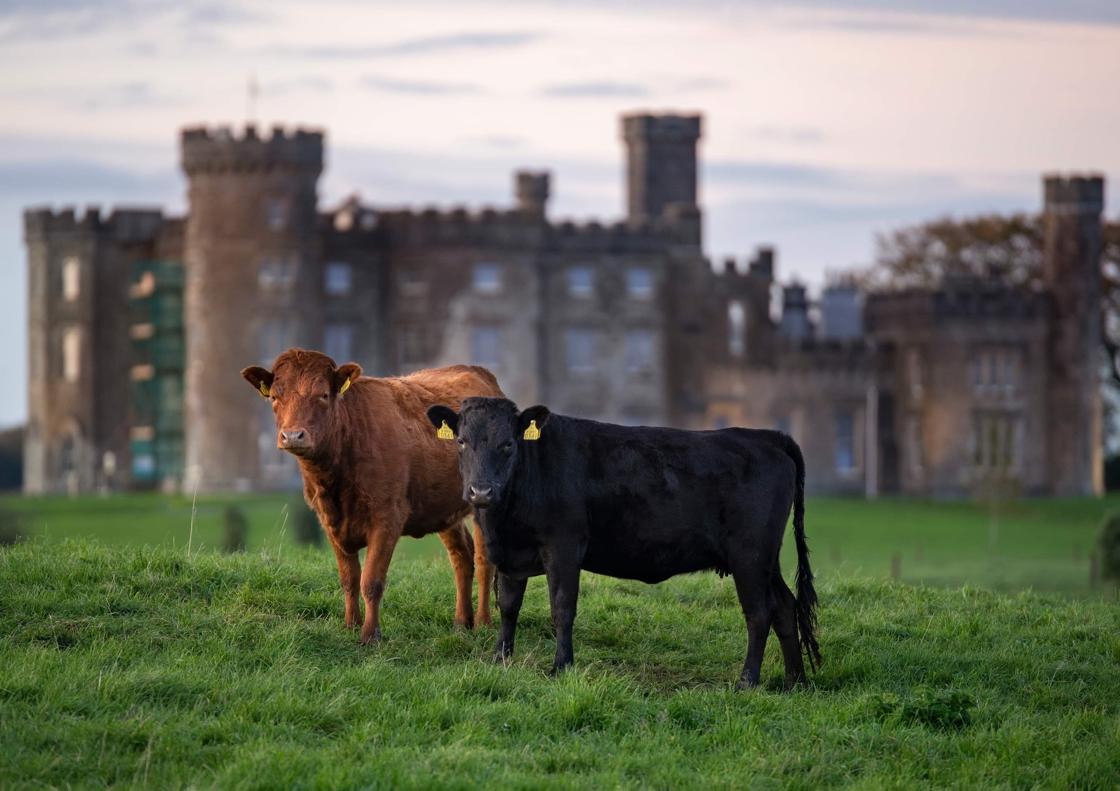
Killua Castle Region: Kells
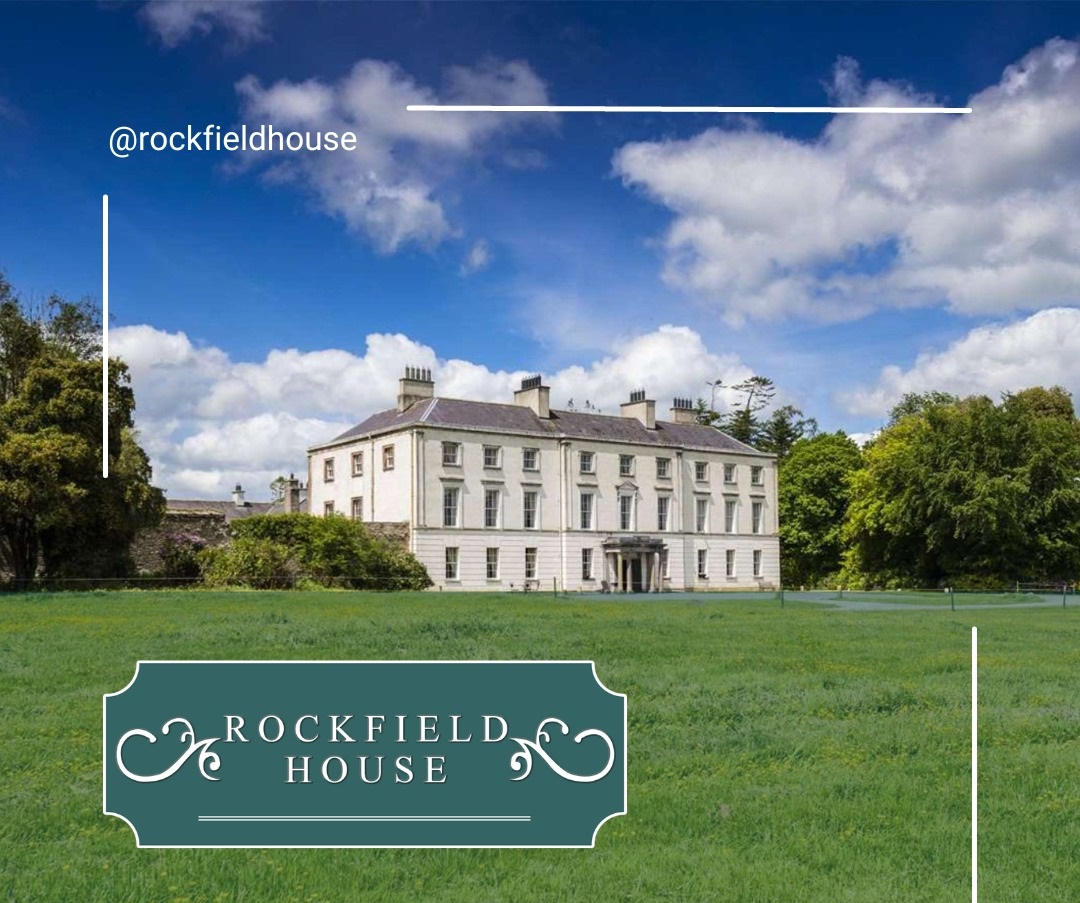
Rockfield House Region: Kells
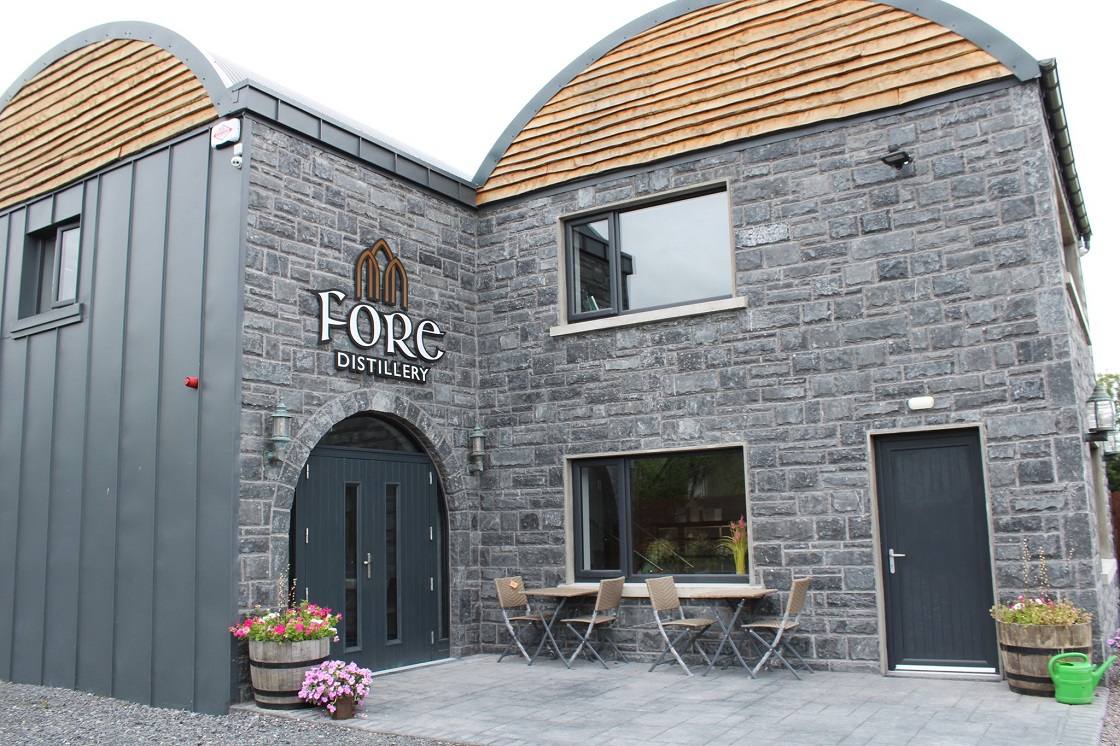
Fore Distillery Region: Kells
Boyne Valley Brewing, Cider Making & Distilling Tours
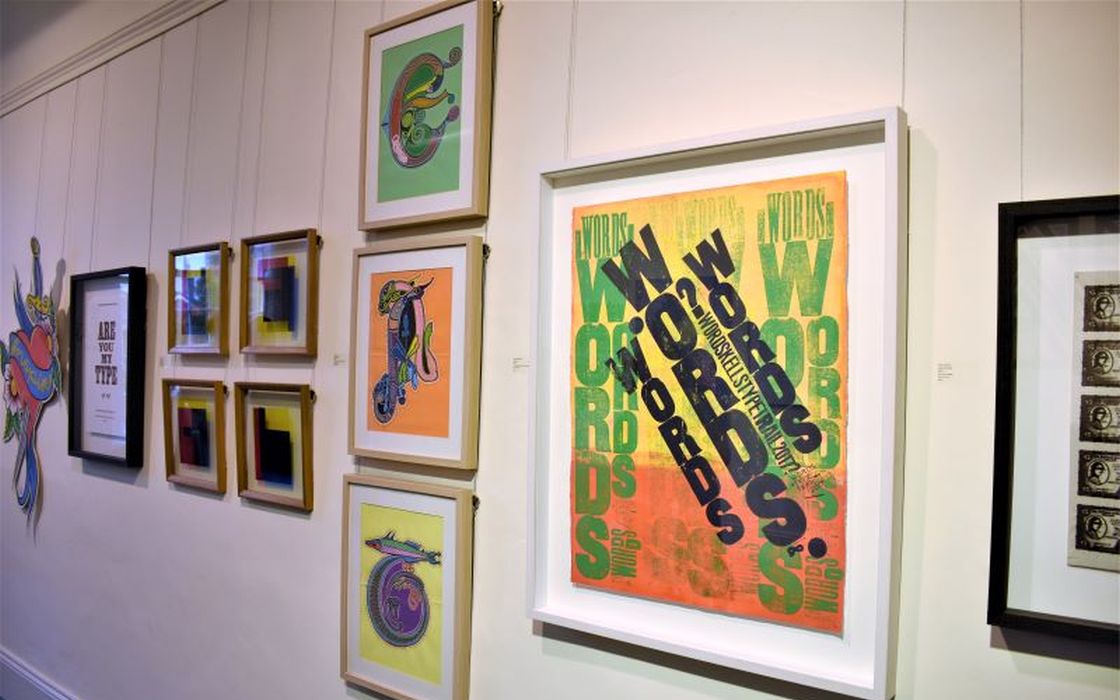
Toradh 2 Gallery Region: Kells
Music, Arts & Irish Culture
Scéal Trail: Mo Chuid Amhráin Ghaeilge Páirc Ráth Chairn Region: Kells
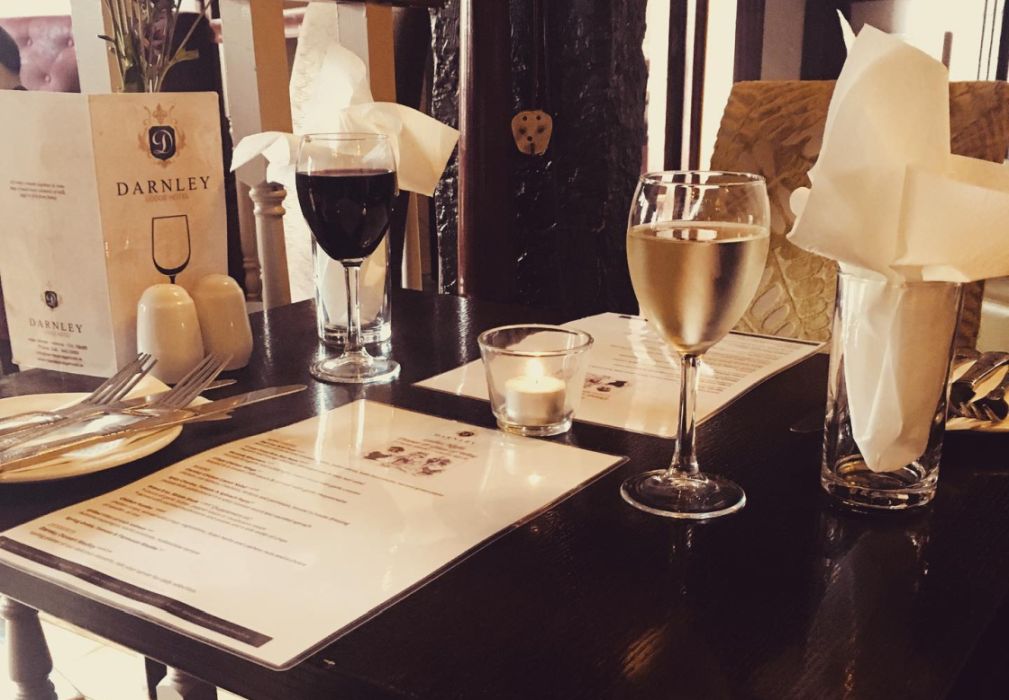
The Darnley Restaurant - Darnley Lodge Hotel Region: Kells | Trim
Hotel Dining
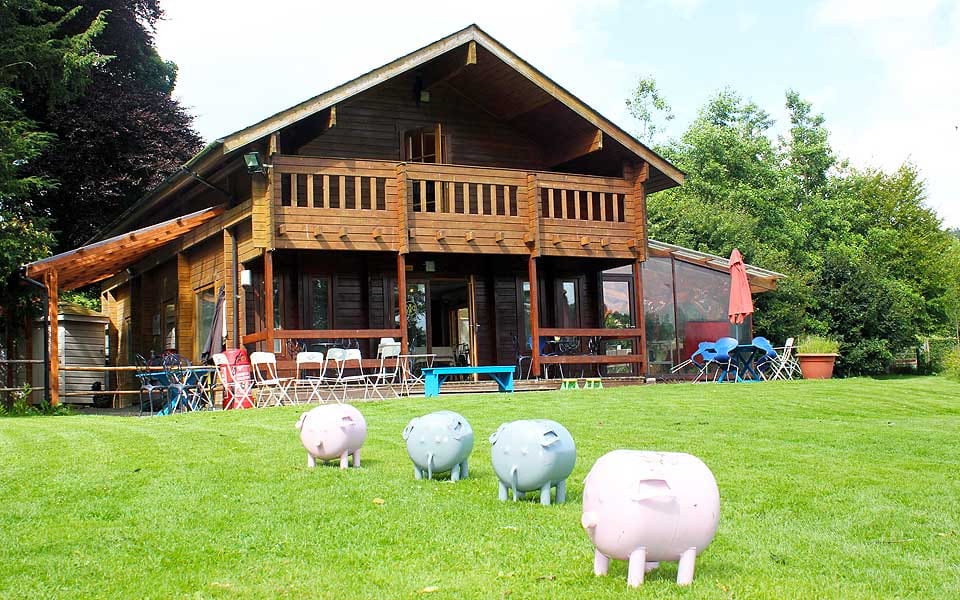
Loughcrew Coffee Shop Region: Kells
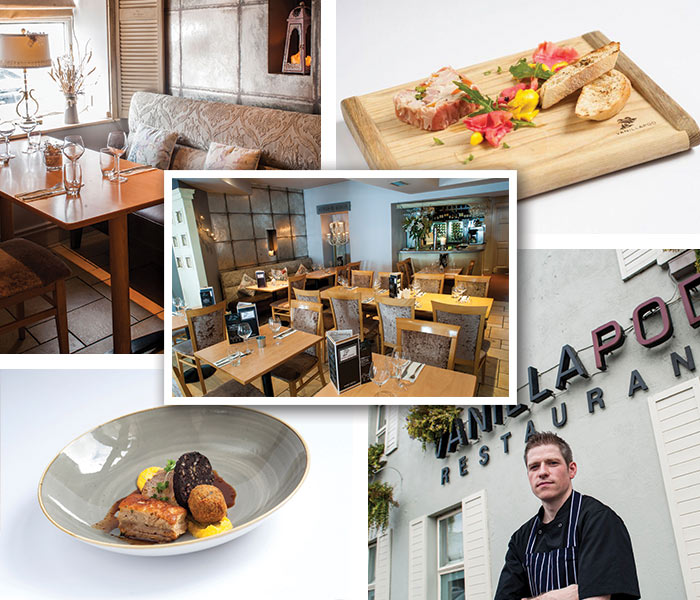
Vanilla Pod Restaurant at the Headfort Arms Hotel Region: Kells
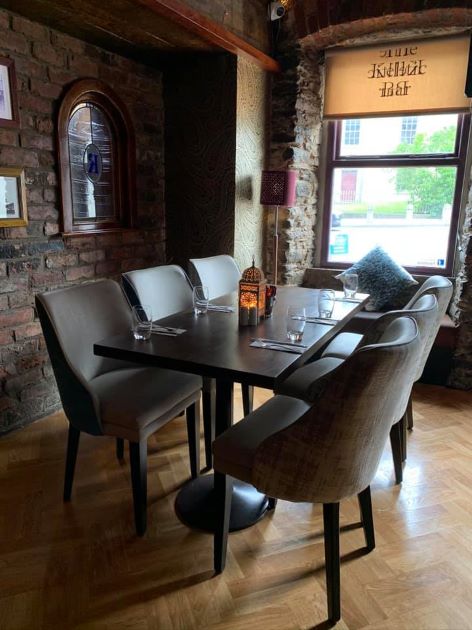
The Kelltic Bar Region: Kells
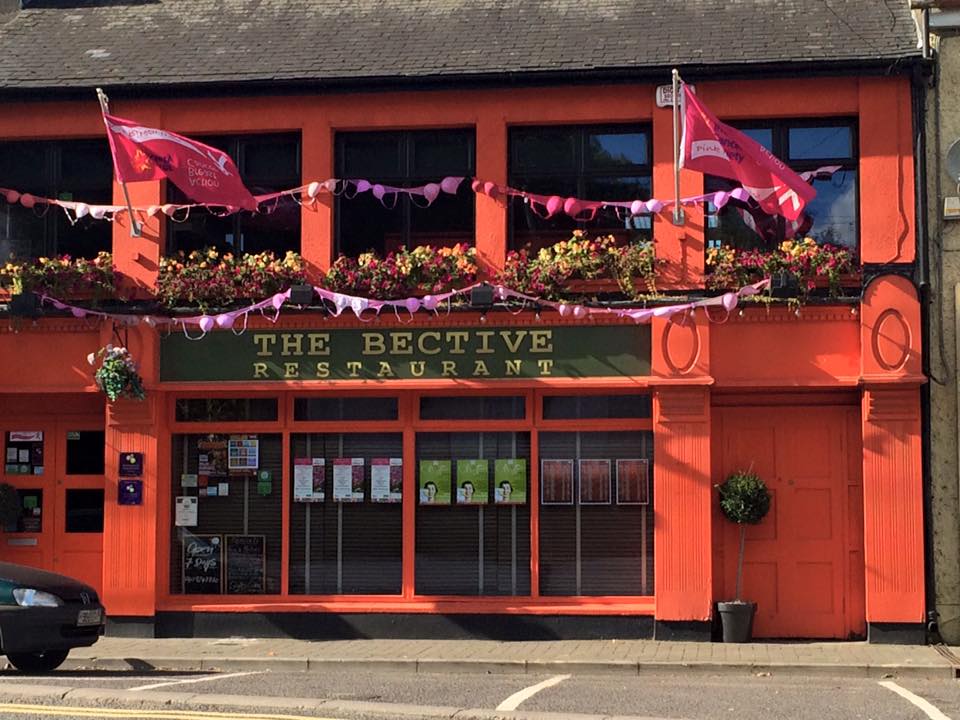
The Bective Region: Kells
Restaurants
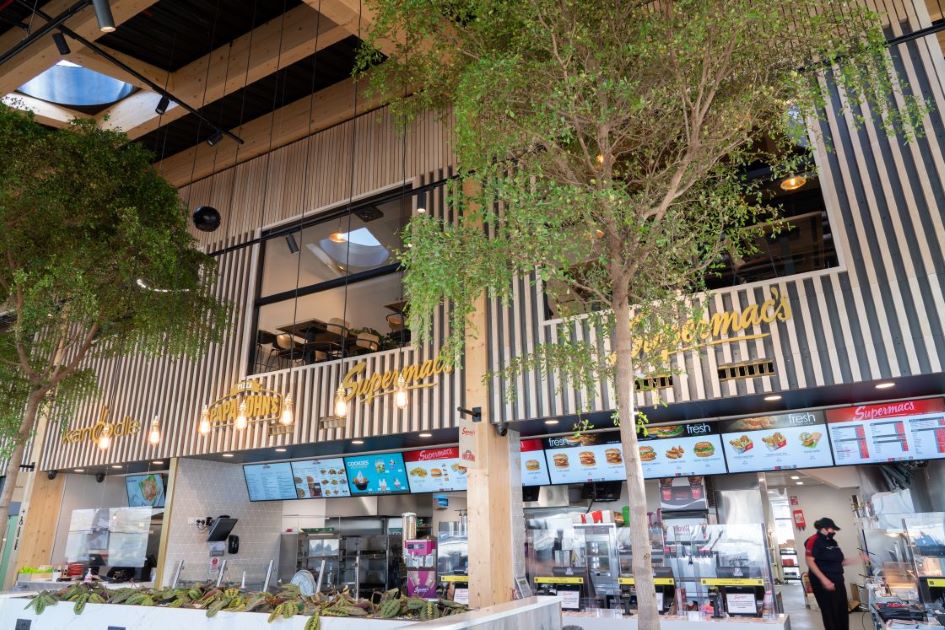
Park Rí, Destination Stop & Food Court Region: Kells
Cafes | Restaurants
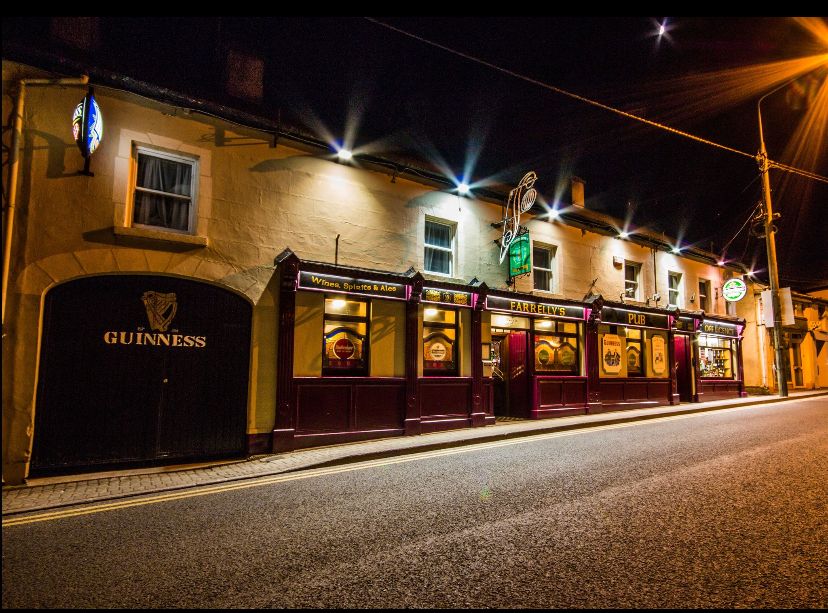
Farrelly’s Bar Region: Kells
Café Therese at Headfort Arms Hotel Region: Kells

An Stór, Baile Ghib Region: Kells | Navan
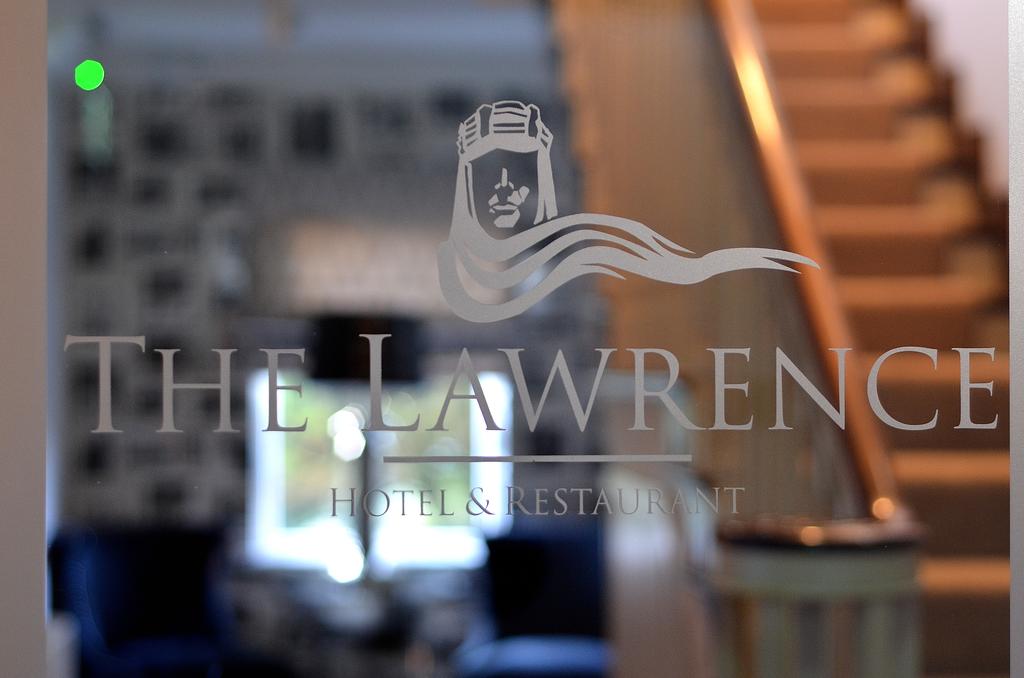
The Restaurant at The Lawrence Region: Kells | Trim
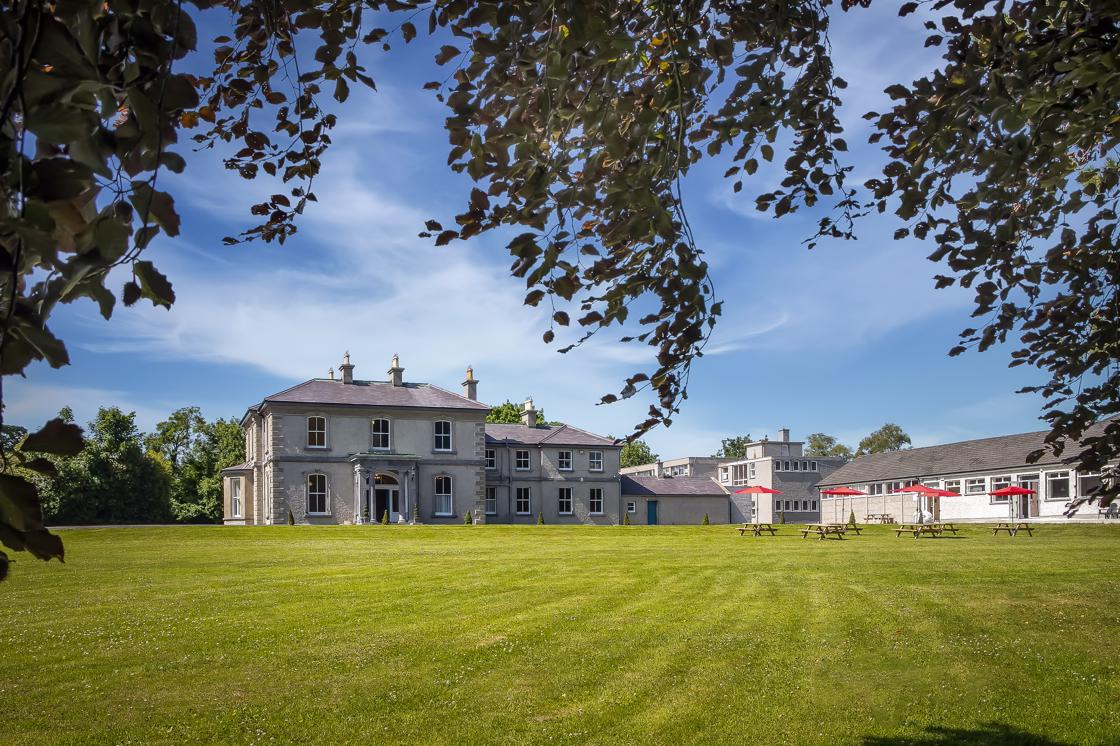
Eureka House Kells Region: Kells
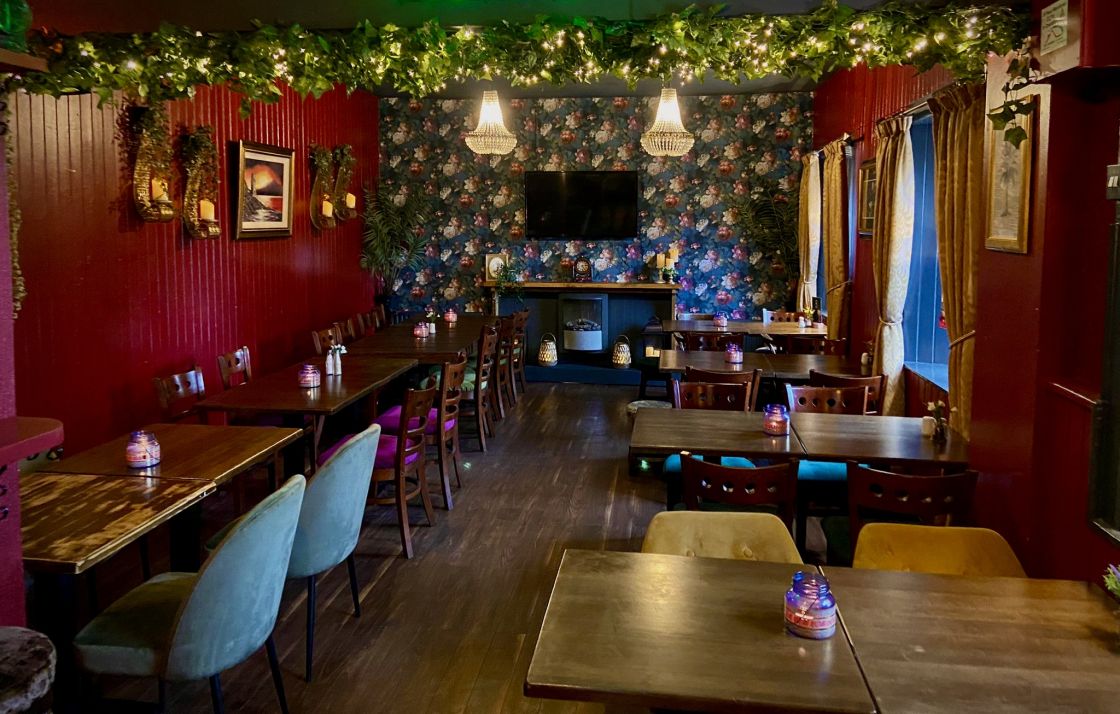
Jack's Bar and Restaurant Region: Kells
Gastro Pubs
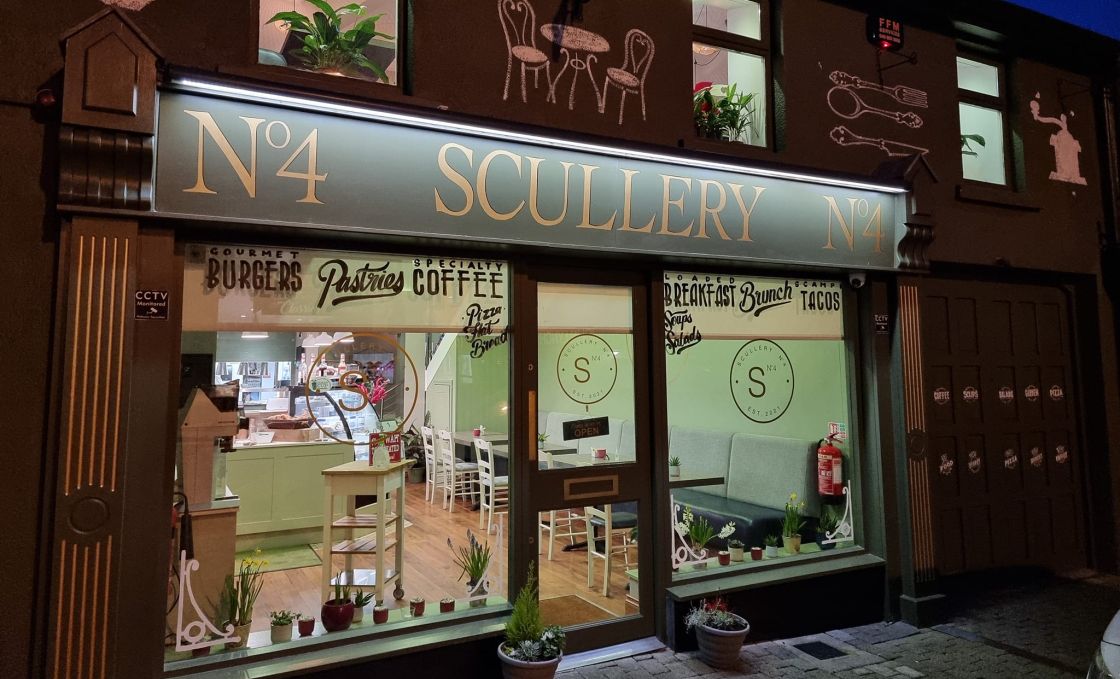
Scullery N4 Region: Kells
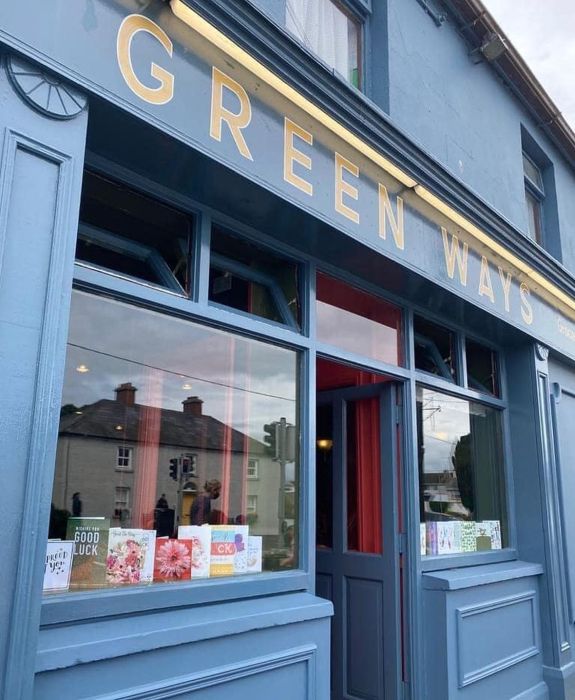
The Greenways Cafe Region: Kells
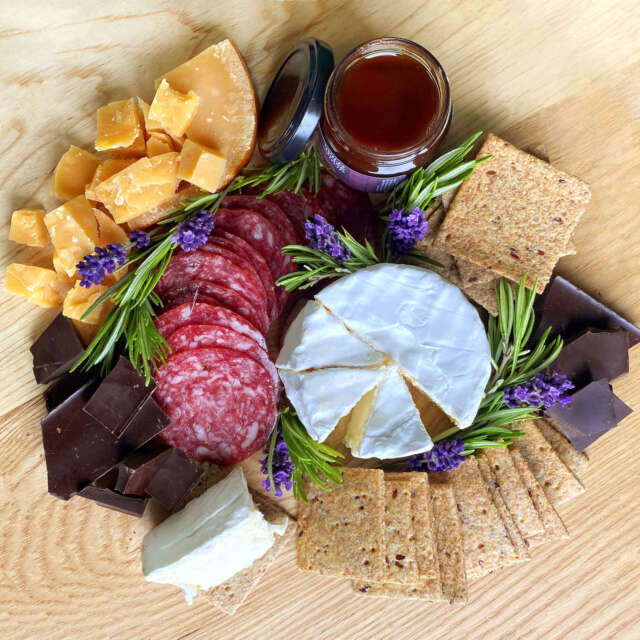
Sheridans Cheesemongers Region: Kells
Boyne Valley Brewing, Cider Making & Distilling Tours | Cafes | Restaurants

Two new schemes to promote Delhi as tourism & culture hub

NEW DELHI: Aiming to promote the national capital as a tourism and culture hub, the Budget announced two schemes Delhi Heritage Promotion and Delhi Tourism Circuit. The Budget also proposed an allocation of Rs 521 crore for the implementation of schemes, to boost tourism and art s and cultural activities.
Deputy CM Sisodia said that to ensure the safety of women at tourist spots, close circuit television (CCTV) cameras would be installed at entry points of all tourist spots. Further, security guards in uniform would be deployed at all tourist spots of Delhi Tourism and Transportation Development Corporation and the facility of mobile vans will also be provided at various sites.
“To brand Delhi as a tourist destination, a scheme was proposed last year, which could not be implemented due to the coronavirus pandemic. This scheme will be implemented this year. A new scheme has been proposed to ensure the safety of women at tourist spots.
This includes measures such as the installation of CCTV cameras at entry points of all tourist spots,” said Sisodia. For various tourism promotion projects, an allocation of Rs 5 crore has been proposed in the Budget.
Follow The New Indian Express channel on WhatsApp
Download the TNIE app to stay with us and follow the latest
Related Stories
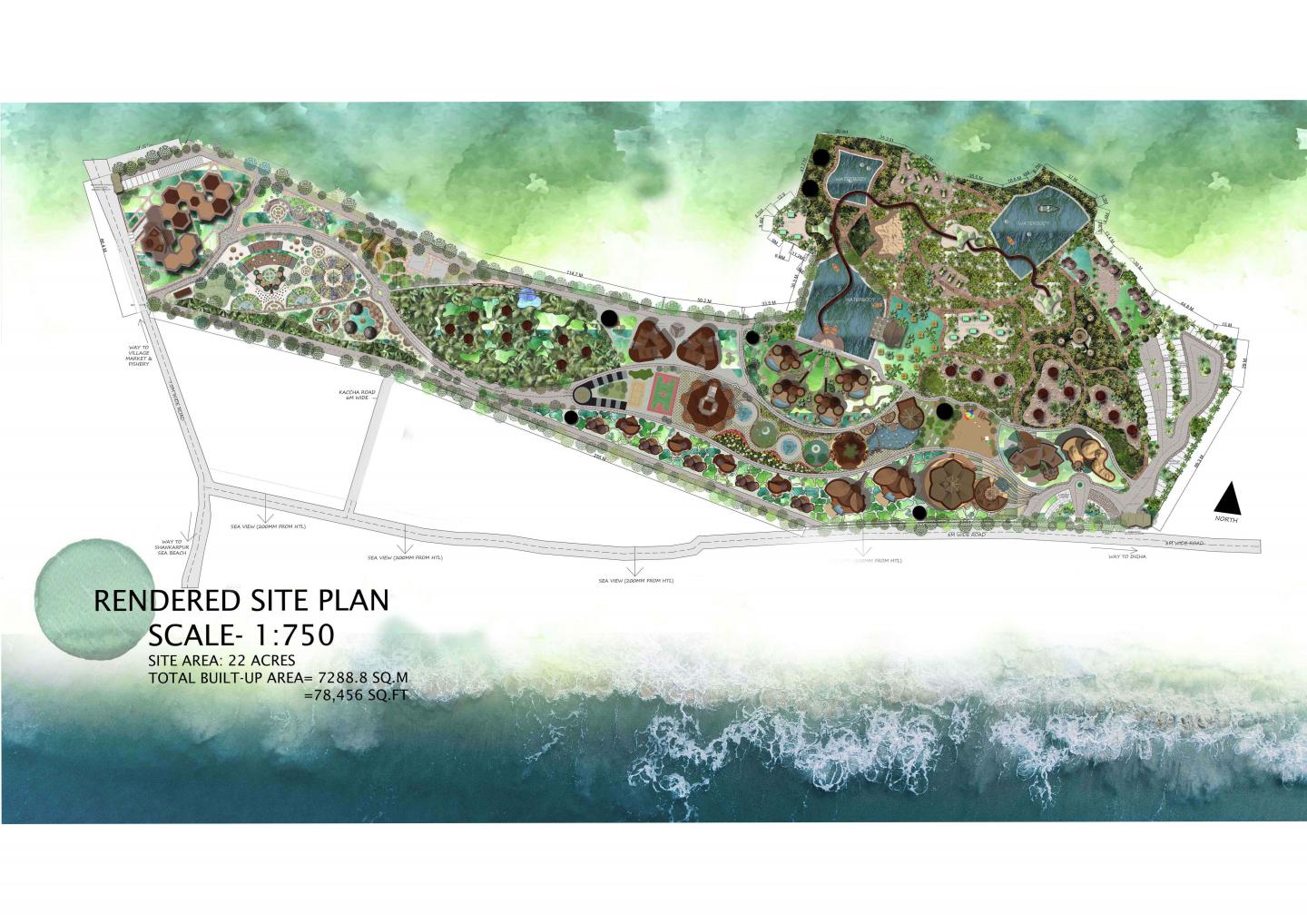
ECO-TOURISM HUB IN SHANKARPUR, WEST BENGAL: Revival of a dying ecosystem using Disaster-resilient Architecture
“The waves lashing on to the sand dunes, the crystal-clear sea, the sun setting in the horizon and the casuarinas whispering on the beach.” ~SPRIHA It was perhaps the scenic vision of Shankarpur, fifteen years ago, which first drew me to the place. It was a weekend getaway, a serene, isolated beach in the heart of Bay of Bengal with a small village and fishery. The soft sand dunes and white shells along the beach, the fishermen dragging boats through the dunes into the water, the coconut trees at a distance and “Thakur Da’s dokan” (Grand Pa’s shack) with its “Luchi and Aloo” (bread and potato) were among the many attractions. There were casuarina forests along the beach with nature trails and natural butterfly sanctuaries. Some of the trees had hammocks tied between them. Me and my family were walking through the forest, where we once discovered a natural butterfly sanctuary. The forests were surrounded by the fisherman’s village. For some unknown reason, we kept going back to Shankarpur every year for vacations. It was like being in the lap of nature. However, over the years, when we went for our yearly vacations, we noticed incessant deforestation. The casuarina forests which were once whispering and roaring, withstanding all the storms, were slowly diminishing. Irresponsible tourism and commercialization had destroyed the beach. Suddenly the wildlife and natural sanctuaries were gone. The coastline had started shifting forward. There was a massive ecological disbalance and degradation. After a few years later, in 2016, there were no more casuarina trees. The beach was eroded and deserted. It was no longer accessible. We realized that due to incessant storms and cyclones and the sea level-rising the sand dunes were swept off and now “Thakur Da’s dokan“ (Grandpa's shack) was gone. After I joined Architecture school, I identified the relationship between the environmental, social, and economic aspects of an eco-system. I dared to challenge conventional tourism and explore how architecture can sensitively reverse the ecological disbalance. After re-visiting the village and interacting with the villagers, the following questions arose in my mind: • How can architecture respond to natural disasters and the atrocities of nature? • Were the incessant cyclones and rising sea-levels purely natural disasters or were these the result of devastating human activities and irresponsible coastal tourism? • How can architecture reverse or withstand the damage of these disasters? • Can architecture be a medium of inspiration, thereby educating local communities and tourists, fostering social and economic welfare? • How can I, as an Architect contribute to the change and establish a paradigm shift in the tourism industry?____”REVIVAL OF A DYING ECO-SYSTEM USING DISASTER RESILIENT ARCHITECTURE.” As a student of architecture, I have learnt “the extent up to which the world can be designed and changed, and I aspire to be a part of the change.” What follows in the upcoming pages, is a tribute to my childhood memories and how I have tried to reinforce my dream into reality. “To half the decline of an eco-system it is necessary to think like an eco-system. “ ________Jean Jaques Rousseau. In a world that is shrinking and eco-systems that our dying, there rises a distinct need to extend a field of action of responsible tourism which benefits the environment and thereby the society and consequently the economic growth. While zero-emission, zero-waste and zero-poverty seem to be faraway goals, as an Architect we can discover the world without distorting it. Revitalize ecosystems instead of impoverishing and polluting them. We can build a platform for active participation and restoration of cultural heritage, exchange without arrogance and enrich local communities through eco-sensitive design. In the years to come, the relationship that we maintain with nature will determine the sustainability of the homo-sapiens that we are. Along the coastline of Bay of Bengal, lie many pristine and scenic beaches with rich flora and fauna, namely Digha, Mohana, Talsari, Mandarmoni and Shankarpur which attract millions of tourists over the year. This region is a transitional zone in between sea and land where the casuarinas and mangrove forests were once seen to be whispering and roaring. However , over the last few years, due to incessant storms and cyclones, the sea-level rising and irresponsible coastal tourism there has been a massive ecological disbalance and degradation. Now the casuarina trees are almost gone, and the natural wildlife sanctuaries that once used to exist have all diminished. Along the various beaches which are flooded with tourists, Shankarpur was spotted as a small village with a beach expanding up to 1200 metres. It was comparatively less explored and commercialized than the neighbouring sea beaches but had immense potential for establishing a tourism hub which contributes to its environmental, social and economic standing. It is a severely ecologically affected zone. The coastline has been severely eroded and due to the coastal inundation, there has been removal of sand dunes and forest cover. The Forest Department has been giving proposals for restoring and replanting the lost green cover. There has also been a loss of cultural resources and social disruption due to negligence and lack of employment opportunities. Despite having a soaring literacy rate of 77% the small village population is at an economic and cultural standstill. There are limited transport and communication facilities. All these factors establish a need for a platform which is conducive to the development of the whole area. With this mindset, I shall design an Eco-tourism hub, resolutely committed to the concept of resilience. My proposal will follow the principles of sustainability and disaster resilience. It should protect the life and livelihood for coastal communities and conservation of ecological resources. It should create an interactive ground for locals and visitors so that there may be interchange of ideas and cultural exchange. The project conceives a site-oriented approach and demonstrates how the built environment engages with the natural environment. The natural endowment of the site with its vast expanse of water bodies , parts of which are partially dry, will all be developed. Provision of nature trails and aquascape retreats will be given. Since the beach is inaccessible, natural and artificial aquascapes will play an important part of the design. Nurseries for organic farming, promote self-reliance. Local communities will be involved in cooking and serving authentic cuisines. An eco-friendly approach and cost-effective vernacular architecture will be contextual to the place and easy to accept for the local people. It will challenge the conventional hotels and resorts in coastal regions and serve as an example or prototype to the tourism industry. Resort developments have been planned in border zones, rather deep within ecosystem units. The vernacular colour palette has been maintained among all the built forms to establish a visual linkage. The landscaping has become an extension of the existing ecosystem, mimicking it and preventing further fragmentation.
The site is located 200 metres from the high tide line thereby complying with the coastal regulation norms. It covers a vast expanse of 22 acres with existing palm and coconut tree forests, four existing waterbodies and an existing temple. It is surrounded by the village on its periphery and the shoreline is 200m to its south. Two abutting roads run along its southern and western periphery. The natural endowment of the site has barren organic patches of land in intermediate spaces in the forests. These pristine areas have been left untouched to cause minimum intervention with the existing ecosystem. An FAR of 0.3 has been maintained. Owing to the coastal regulation norms and height restrictions, a horizontal expansion has been opted for. A total built-up area of 78,456 sq.m has been achieved. Tropical cyclones cause maximum cumulative economic loss, hence disaster-resilient techniques were opted for. Most of the built forms are on stilts. This gives a base isolation to the structures and at the same time creates minimum interference with the existing landscape and green cover. The roofs were designed at an angle of 35-40 degrees to enhance resistance to high velocity winds. TECHNOLOGICAL INTERVENTION: Floating structures that rise to survive floods___Buoys protect homes from floods and rising sea levels by making houses float as high as the flood water level rises.The buoys can be made by recycled jugs. When water levels rise tanks lift the building while vertical guideposts extending from the stilts, hold the construction in place letting it go up and down. These amphibious homes are already in use in Vietnam. This technology has been introduced by Dr. ELIZABETH after HURRICANE KATRINA. Some solar passive techniques used are Trombe Michael's wall cooling action and the Parasol roof principle. Building orientation, shading techniques and flow of wind through fenestrations were also taken into considerations. Locally available and recycled materials have been used for construction. The vernacular architecture of West Bengal has been explored with the use of bamboo cross-bracing, mud, and thatched roofs. Climate responsive forms have been adopted taking reference from the pre-fabricated DELTEC HOMES.
Supervisor: Ar. Anshuman Laloo Head of Department: Ar. Maitrayee Mishra Designer: Spriha Chakravorty

Favorited 1 times

Stay Like a Local

Come and discover our Cultural & Tourism Hub . A Space where you can fully customize your stay in Palermo. Book an authentic experience with our partners or support the promotion of our island by buying exclusive Sicilian products at km0 . Numerous other services await you, such as luggage storage or art exhibitions of selected local artists .
WAT ER & other
ATTRACTION
unmissable experience
Palermo walking tour: the regnants and the people.
Many dominations, a beautiful city:
Starting at Teatro Massimo – Italy’s largest Opera House – you’ll explore the historical “U Capu” Market, discover the restored church of the Immaculate Conception, and visit the Norman cathedral, home to Frederick II’s remains and Santa Rosalia’s silver “Vara.” Your experience will continue through ancient ruins, the Royal Palace, and the Palatine Chapel’s mosaics, showcasing Arab, Byzantine, and Norman history. You’ll photograph San Giovanni degli Eremiti, explore Spanish facades and courtyards, and finish at Quattro Canti or “Teatro del Sole”, an elegant baroque system of buildings, meeting point of the city’s four historical districts.

The Baroque
and the Aristocracy
Walking Tour
2 - 8 people
Discovering Palermo
by Moto Ape
Food & Traditions:

The Florios
The origins
of the Florio family
A family who influenced Sicilian culture and heritage
dayly trips from palermo
Segesta, Erice AND SALT PANS OF TRAPANI
Thuesday, Saturday
Corle one EXCURSION
Etn a AND Taormina
Wednesday, Friday
Monr eale AND Cefalù
Monday, Wednes day, Friday
Piazza armerina and Agrig ento
Thursday, Sunday
wine tasting

Cantine Florio

d e la Tour
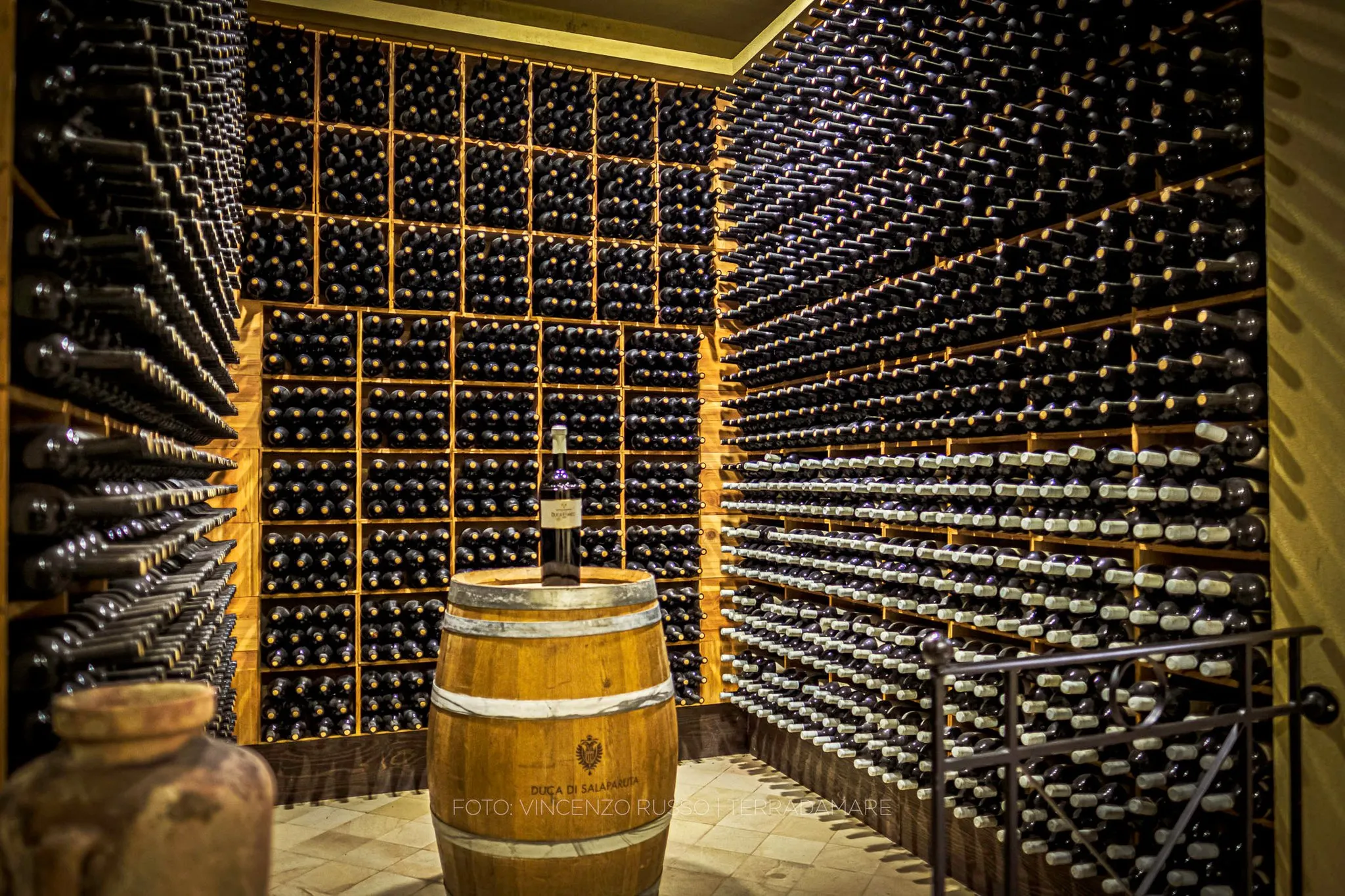
Duca di Salaparuta
Casteldaccia

Winery Experience
A testament to generations of winemaking expertise
water & other activities
WATER EXPERIENCE
STAND UP PADDLE
Book your equipment, a lesson or join our courses

Choose y our Sicilian Cooking Experience
Discover traditional alleys in the Old Town, create a typical Sicilian Menu, e njoy your creations, and make new friends

Discover the sicilian coast from the sea.

Premium private transfers to all destinations in Sicily

attraction tickets
maravigghia for Sicily
discover more...

Maravigghia Cultural & Tourism Hub
Via Giovanni Meli, 53
Opening hours :
from Tuesday to Saturday:
09.00 - 13.00 16.00 - 20.00
Monday, Sunday and Bank Holidays: Closed

- INSTITUTIONS

GUANGZHOU, April 23 -- The Ministry of Culture and Tourism in China launched a national initiative on Tuesday in Zhuhai, a city in south China's Guangdong Province, to promote cultural and tourism consumption.
The initiative, which is scheduled to run from April 2024 to February 2025, will include various promotional activities tailored for the May Day holidays, summer vacations, National Day holidays, and the Spring Festival or Chinese New Year.
Collaborating closely with local authorities, the ministry will organize themed events to introduce unique cultural and tourism activities, innovative consumption opportunities, and consumer-friendly measures. This concerted effort aims to ensure that both businesses and the general public reap benefits from this initiative.
Copyright© www.gov.cn | About us | Contact us
Website identification code bm01000001 registration number: 05070218, all rights reserved. the content (including but not limited to text, photo, multimedia information, etc) published in this site belongs to www.gov.cn., without written authorization from www.gov.cn, such content shall not be republished or used in any form., copyright© www.gov.cn | contact us, website identification code bm01000001, registration number: 05070218.

IMAGES
VIDEO
COMMENTS
Cultural tourism is a travel and tourism trend that is here to stay. With more and more accessibility to the world and the people in it, there is peak interest in being able to immersively travel. Peaks an interest to immerse yourself in a particular culture. Creates meanings, stories and understanding between host and guest.
Turning tourism into development: Mitigating risks and leveraging heritage assets. If done right, tourism can actually bolster and preserve cultural heritage, while also helping to develop economies. Cultural and historical travel accounts for 40% of all tourism globally. 73% of millennials report being interested in cultural and historic places.
The primary objective of this assignment is to establish a "Cultural Hub", potentially at the Shona Village, where actions will be implemented to strengthen the creative entrepreneurial capacities of local community members with the aim of developing diversified and sustainable tourism activities at the Great Zimbabwe National Monument World Heritage site in synergy with surrounding areas.
The growing body of cultural tourism scholarship is confirmed by a literature search on the term "cultural tourism" on Google Scholar. As Fig. 1 indicates, cultural tourism sources have risen from less than 100 in 1990 to over 6000 in 2016. Growth was particularly sharp between 2005 and 2015, and cultural tourism publications have risen as a proportion of all tourism publications, to reach ...
In Wakefield, Que., the owners of Café Molos were motivated to transform their circa-1880 structure into a multi-purpose cultural hub after hearing about local creatives commuting to Ottawa just ...
According to Dungo, the MTCDP showcases the best of Manila through the eight priority programs, eight trails, and eight loops within the eight tourism hubs; combines culture and heritage conservation with innovations in tourism services such as tourist-oriented e-vehicles, digital tours and mobile and web-based applications for booking ...
MANILA - The Department of Tourism (DOT) launched on Thursday the Hop-On, Hop-Off (HOHO) Manila Cultural Hub tours, increasing tourism offerings in Metro Manila. The new circuit is the second of its kind after the pilot of HOHO Makati Financial Hub tours on May 28. "Our President envisions a…
Hong Kong steps up as a global art and cultural hub. Many often think of Hong Kong as a shopper's paradise or food haven with its famous shopping malls and award-winning bars and restaurants. While both are true, the bustling city also has plenty to offer arts and culture lovers. Landmarks such as the Hong Kong Museum of Art and Hong Kong ...
Joining Frasco were officials of the City Government of Manila led by Manila Mayor Honey Lacuna, and tourism stakeholders. Dubbed as "the country's first ever hop-on, hop-off bus tour program," the Manila Cultural Hub links it with Makati's "Financial Hub," which Frasco and tourism industry stakeholders launched last 28 May.
Eco tourism Hub by itself, which talks about the tourism aspects of the context, creating a cultural Hub point which gives a platform for the villagers as well as the essence of the vernacular for the tourist. The brief of the concept is to design an eco-tourism hub for the region of KHONOMA (Asia's first green village) and the proximity near ...
The following are three cultural tourism hub projects that are currently in the works: Patriots Point, Mount Pleasant, South Carolina PGAV developed a master plan for this stunning site located on Charleston Harbor. With spectacular views of historic Charleston, Fort Sumter, and other landmarks, Patriots Point has displayed three historic naval ...
This rich historical narrative has empowered Xian to emerge as a captivating cultural hub, solidifying its position as one of the most sustainable cultural hubs in the world. Beyond heritage sites and museums, Xian has much more to offer as one of the top destinations for cultural tourism. Xian's city walls stand as a testament to its grandeur.
A key goal of the UNESCO WH+ST Programme is to strengthen the enabling environment by advocating policies and frameworks that support sustainable tourism as an important vehicle for managing cultural and natural heritage. Developing strategies through broad stakeholder engagement for the planning, development and management of sustainable ...
Understanding the concept of cultural tourism involves more than just visiting historical sites or watching traditional dances. It is about immersing yourself in the very heartbeat of a society, experiencing its customs, traditions, and way of life. It requires appreciating and respecting another culture's way of living.
3. Eco-Tourism. Costa Rica, a pioneer in eco-tourism, offers a plethora of community-based tourism projects that focus on environmental sustainability. In areas like Monteverde and Tortuguero ...
UNESCO Workshop: Integrating Living Heritage and Creative City into Sustainable Tourism in Waterway Cities. 3 February 2024 - 7 February 2024. Event.
By Cooper Resabal. Nov 07, 2017 9:56 PM. Communities in Bohol have drawn inspiration from their history and cultural heritage to develop creative hubs designed to promote sustainable tourism, create livelihood and help local residents recover from the 2013 earthquake. The towns of Loon, Maribojoc, Antequera and Baclayon were scenes of ...
The cultural tourism reports share a deeply invasive way of representing individual countries, their people and their culture, ... It sheds light on the fact that international organizations like UNESCO and their programmes provided a hub for a multitude of interests, providing a label that could easily be appropriated in different ways by the ...
The Courthouse Tourism and Cultural Hub is happy to offer a visit to the Centre for both Primary and Secondary Schools. During the visit we give a talk on Christianity coming to Ireland and how St Colmcille founded the monastery in Kells. The Columban monks are responsible for the world famous Book of Kells and in the Centre we have a facsimile ...
10 Mar 2021, 10:57 am. 1 min read. NEW DELHI: Aiming to promote the national capital as a tourism and culture hub, the Budget announced two schemes Delhi Heritage Promotion and Delhi Tourism ...
A cultural hub or cultural centre is an organization, building or complex that promotes culture and arts. Cultural centres can be neighbourhood community arts organizations, private facilities ...
There has also been a loss of cultural resources and social disruption due to negligence and lack of employment opportunities. Despite having a soaring literacy rate of 77% the small village population is at an economic and cultural standstill. ... With this mindset, I shall design an Eco-tourism hub, resolutely committed to the concept of ...
Maravigghia Cultural & Tourism Hub. Via Giovanni Meli, 53. Palermo. Opening hours: from Tuesday to Saturday: 09.00 - 13.00 16.00 - 20.00. Monday, Sunday and Bank Holidays: Closed. Maravigghia Cultural & Tourism Hub is the first Hub in Sicily where artificial intelligence supports the hospitality offered by Maravigghia.
GUANGZHOU, April 23 -- The Ministry of Culture and Tourism in China launched a national initiative on Tuesday in Zhuhai, a city in south China's Guangdong Province, to promote cultural and tourism consumption. The initiative, which is scheduled to run from April 2024 to February 2025, will include various promotional activities tailored for the ...
Kuk Po, in the northeastern New Territories, is hosting seasonal, farm-to-table dinners to promote sustainable tourism and preserve local heritage.